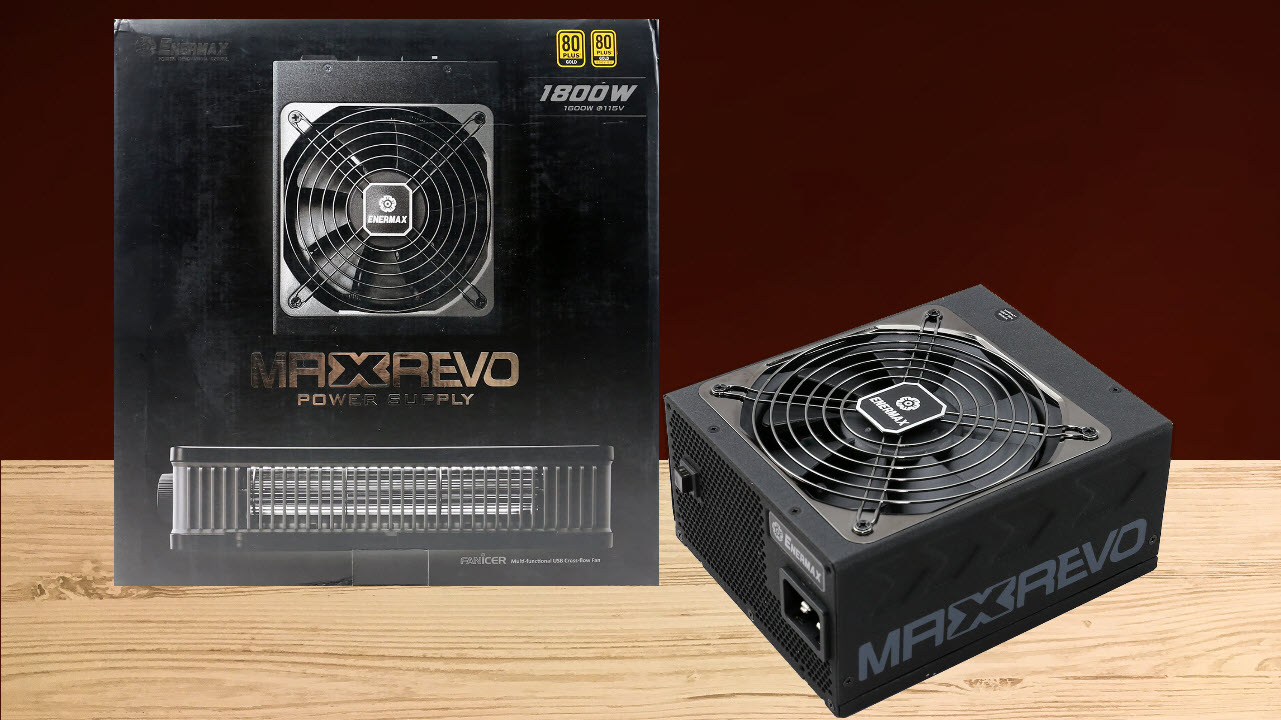Tom's Hardware Verdict
The Enermax EMR1800EXT is only suitable for users that need a super strong PSU and don't care at all about the output noise.
Pros
- +
Powerful
- +
Full power at 47°C
- +
Good transient response at +12V
- +
Fully modular
- +
Tons of connectors
- +
Twister Bearing fan
Cons
- -
Expensive
- -
Not very efficient
- -
Weak overall performance
- -
Bulky cables
- -
No power switch
Why you can trust Tom's Hardware
Specifications and Part Analysis
If you need a ton of wattage, the strongest Enermax MaxRevo can deliver up to 1800W, but only if you connect it to a 230V socket. With 115V, it is "restricted" to 1600W, a power level that will easily cover though every gaming system's demands. With the end of the mining era there is limited competition in this high wattage category and this is probably good news for the EMR1800EXT, since it doesn't achieve high overall performance, it is noisy and its efficiency is low compared to units like the Corsair AX1600i and the EVGA 1600 P2. The platform, on which this model is based, is an older Enermax design which doesn't fare well when compared to more-modern competitors. For the $400 (£306) that Enermax asks for this product,
there are better alternatives.
Enermax used to design and build its own PSU products, but a few years ago it closed its factory and moved its production to the facilities of other manufacturers, with Channel Well Technology (CWT) being so far its closest partner. The MaxRevo line is Enermax's flagship; it is based on an in-house design, among the last ones before it terminated its manufacturing and engineering departments. The original MaxRevo platform was pushed a bit more in order to offer 1800W with 230V input, while with 115V input the max power is lower at 1600W, because a normal AC socket cannot deliver more than 15 Amps (115V x 15A = 1725W).
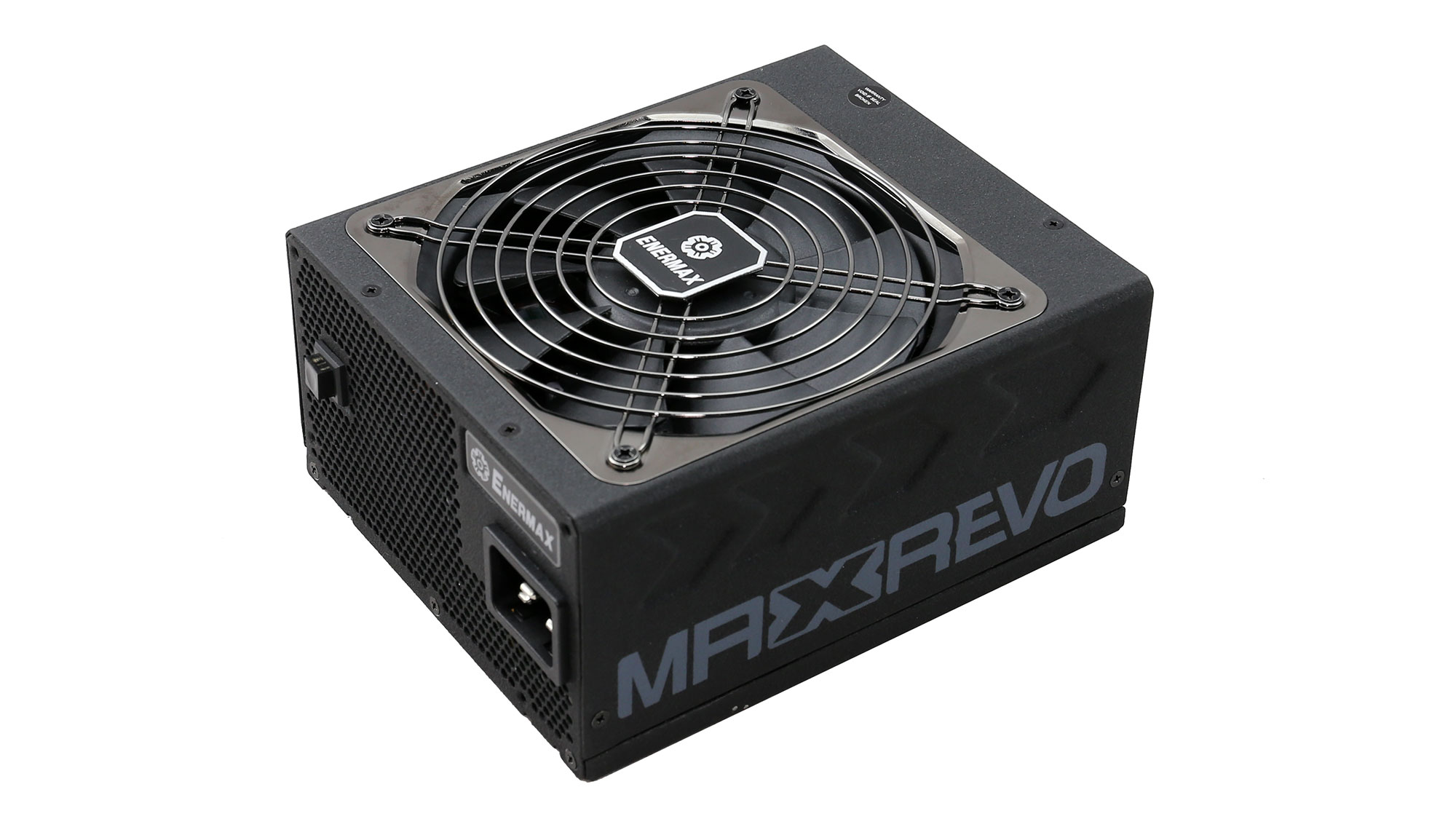
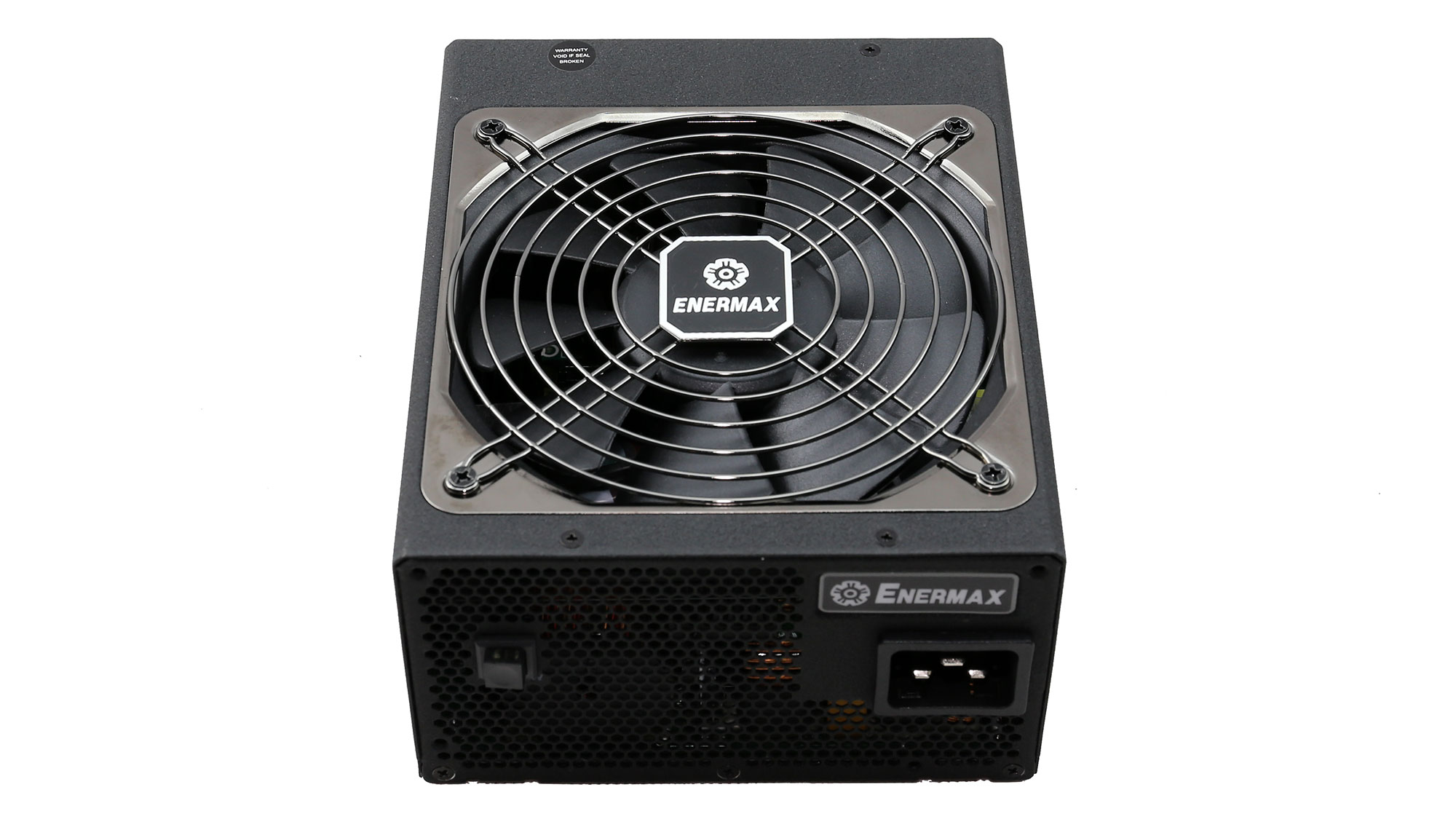
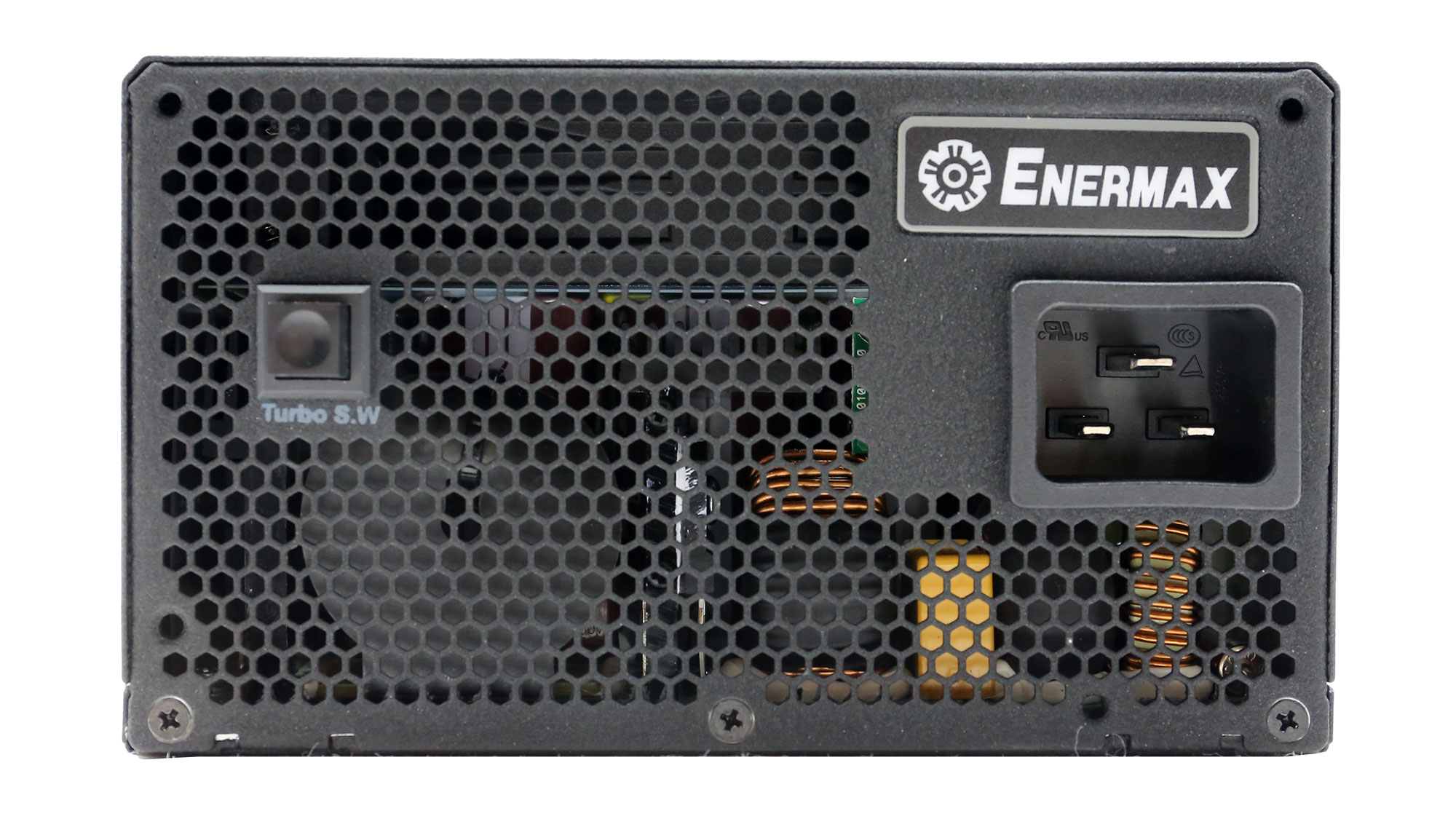
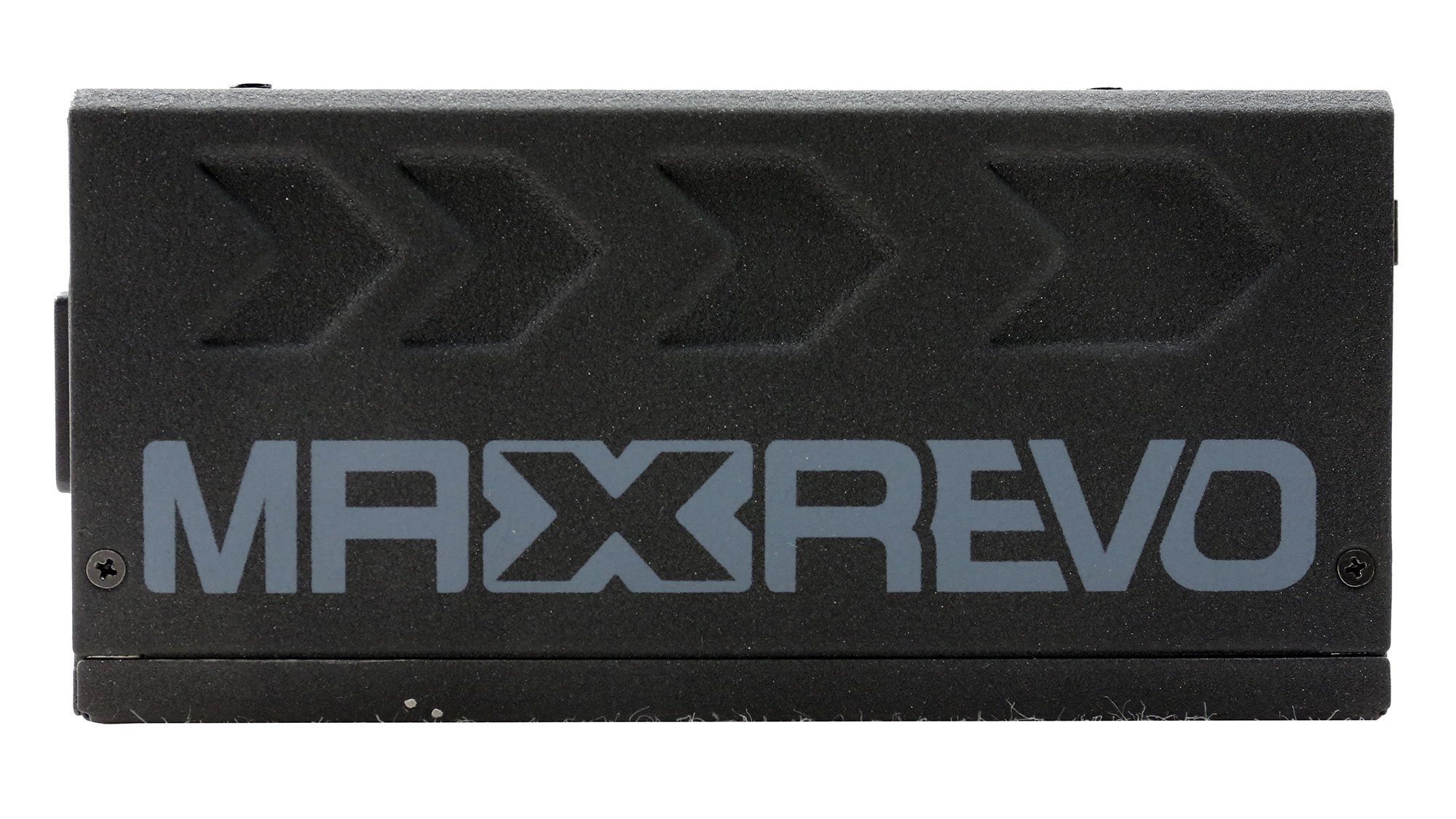

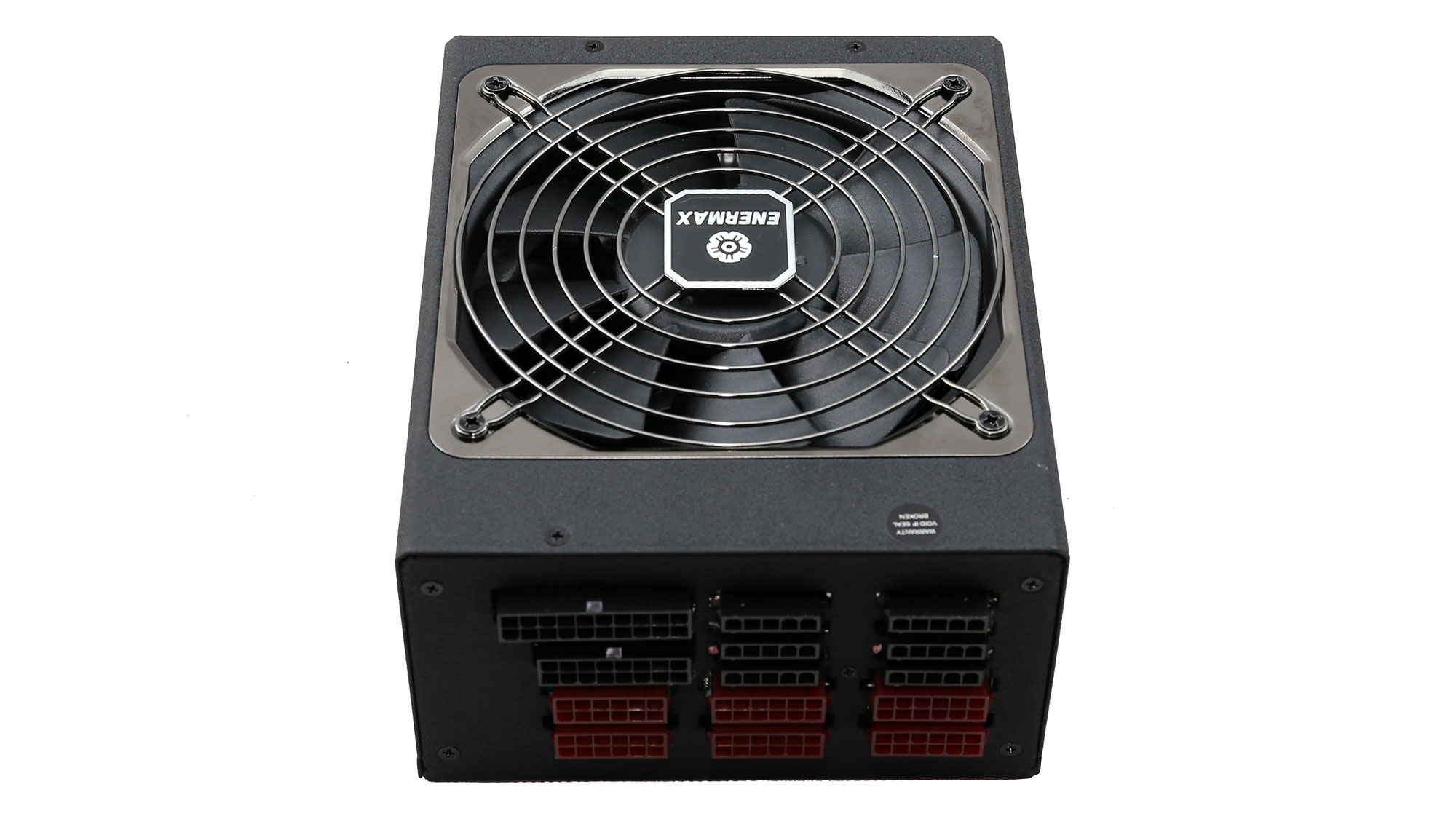
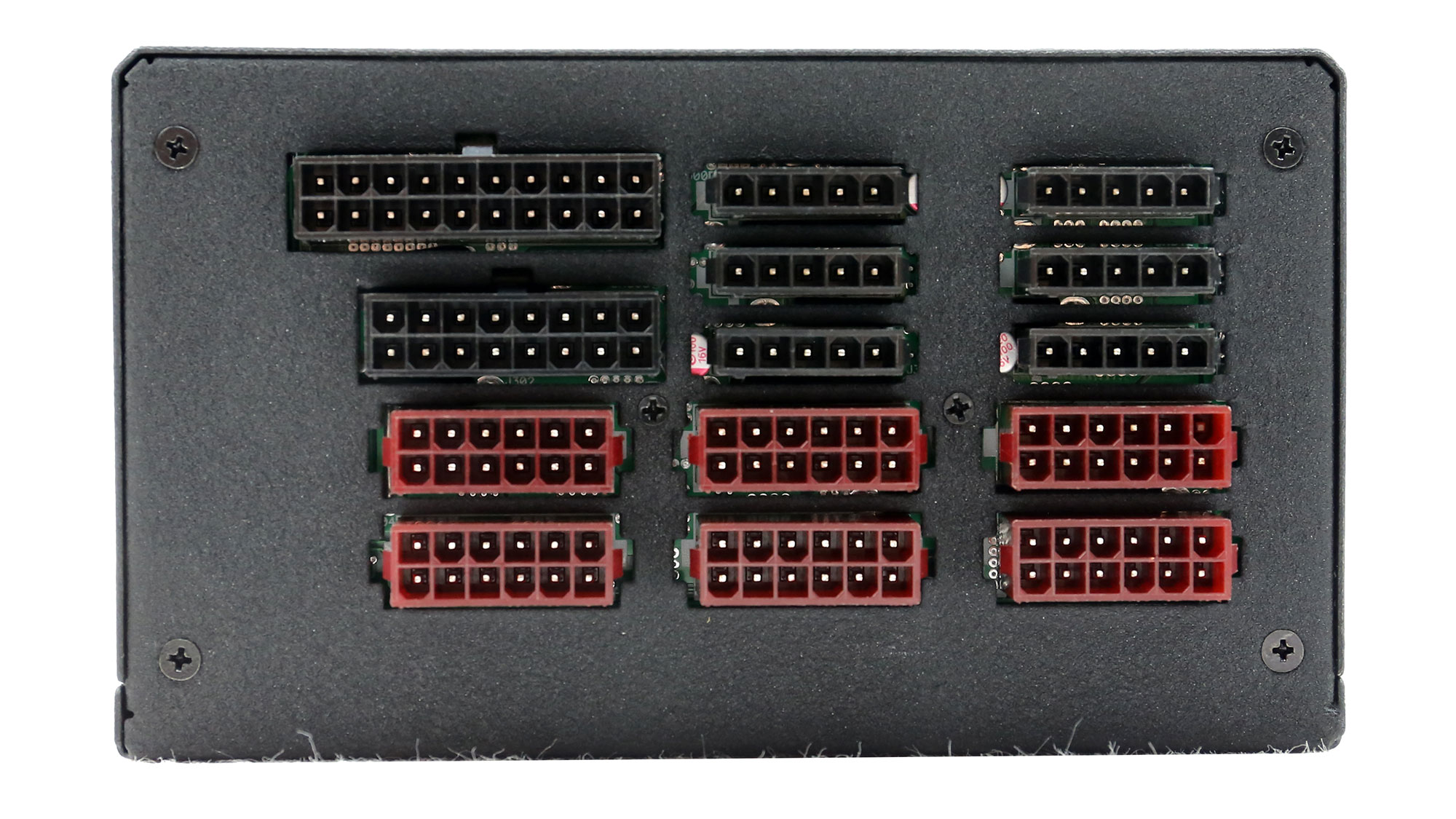
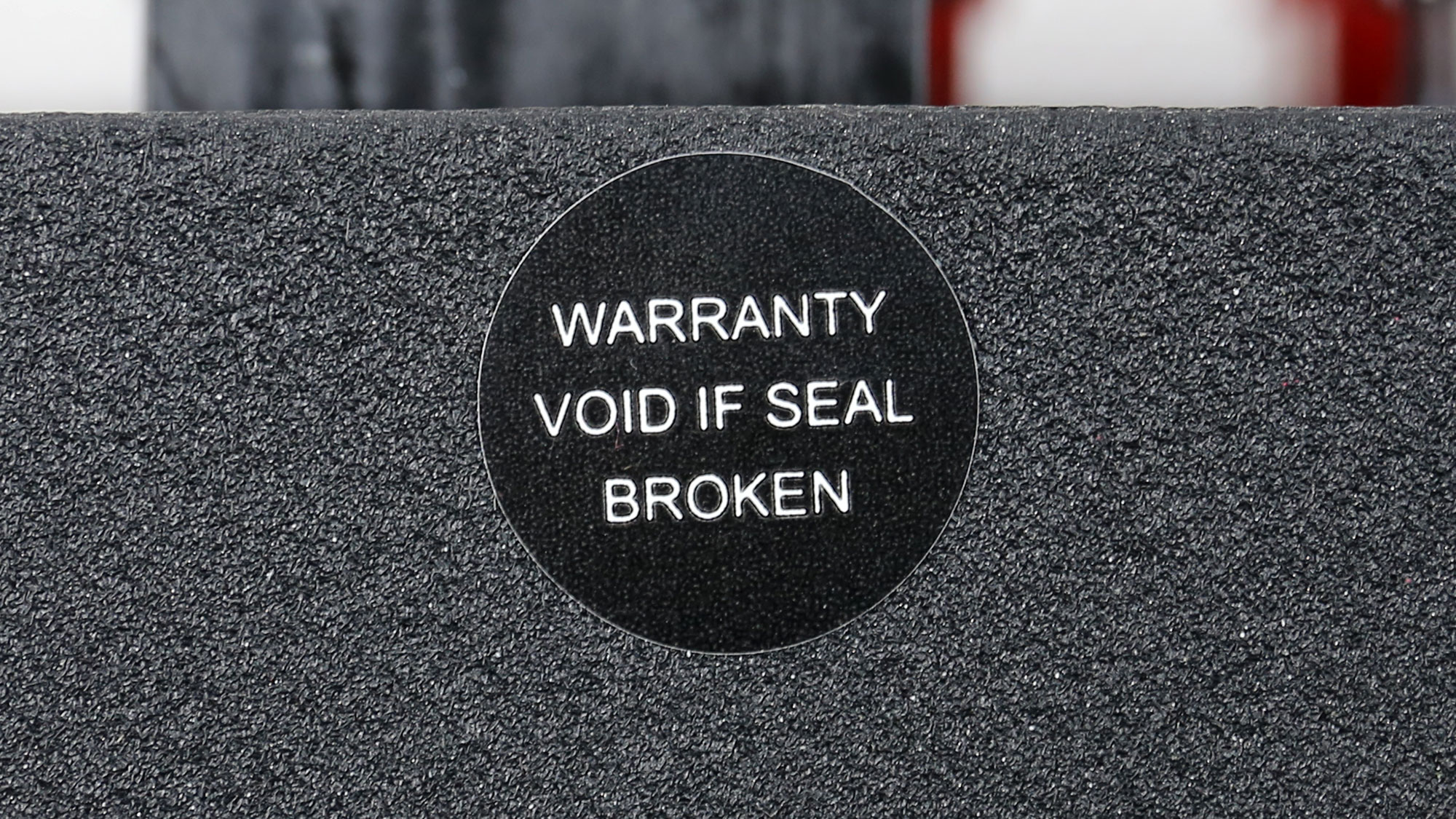
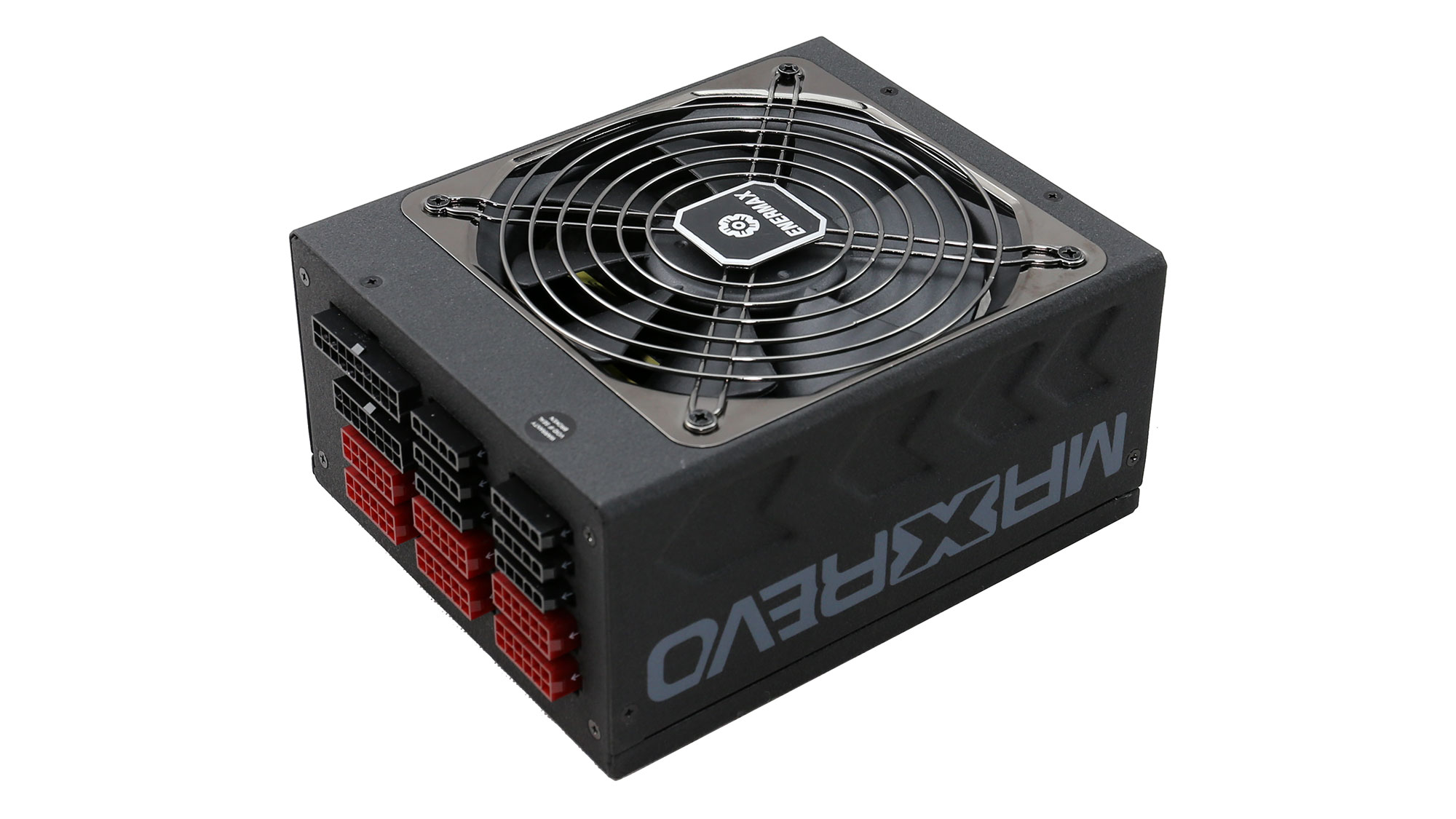

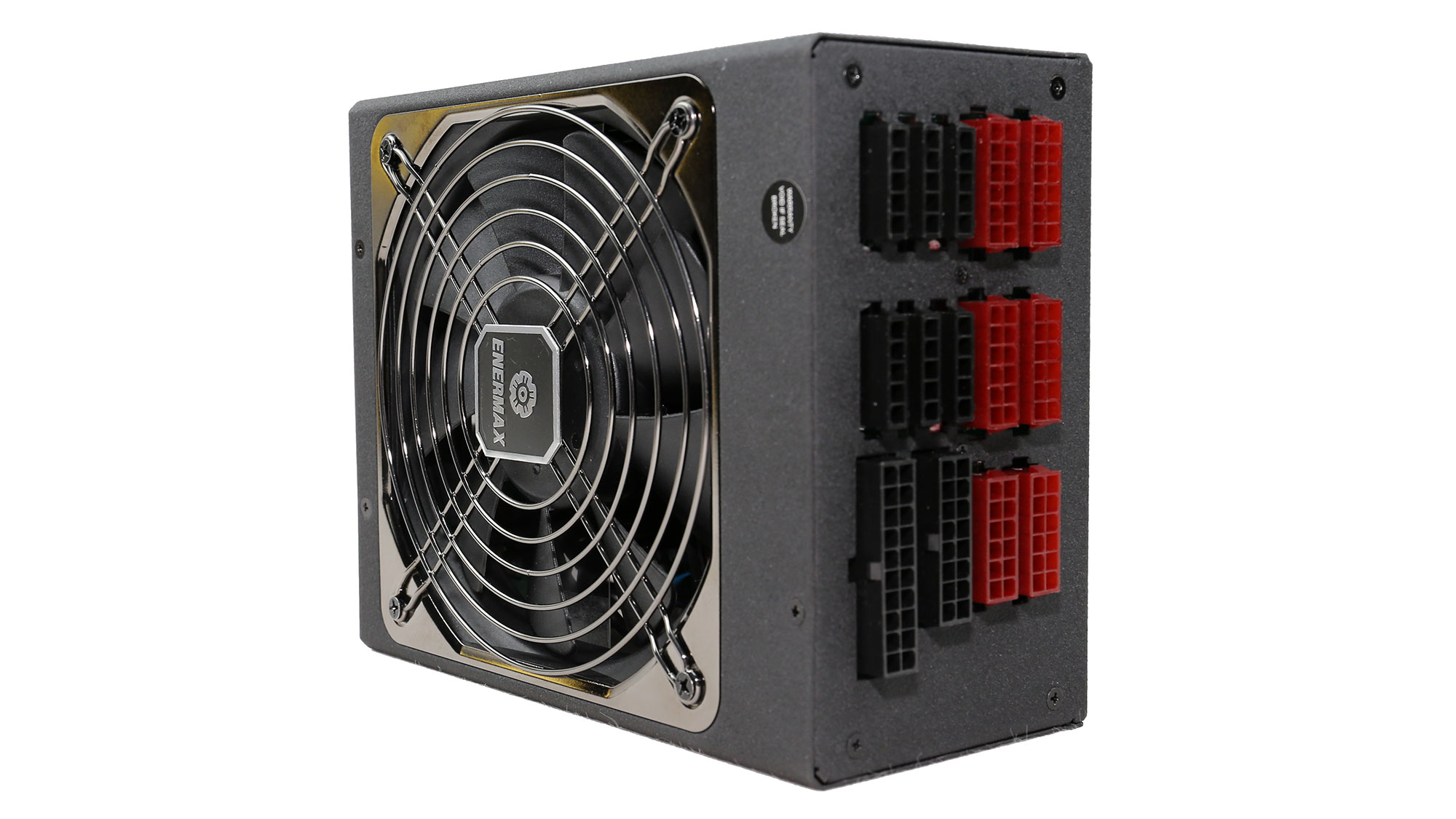
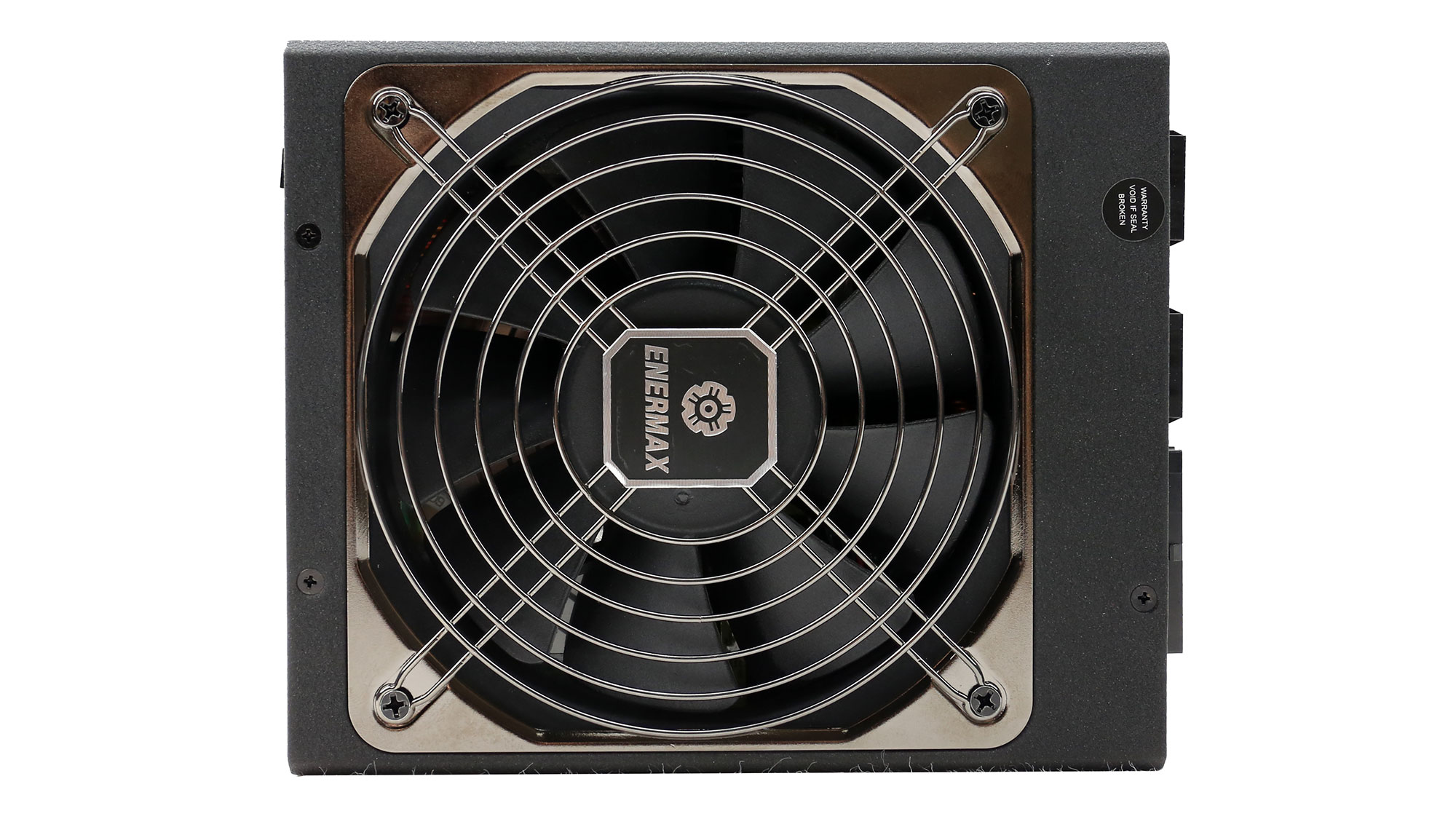
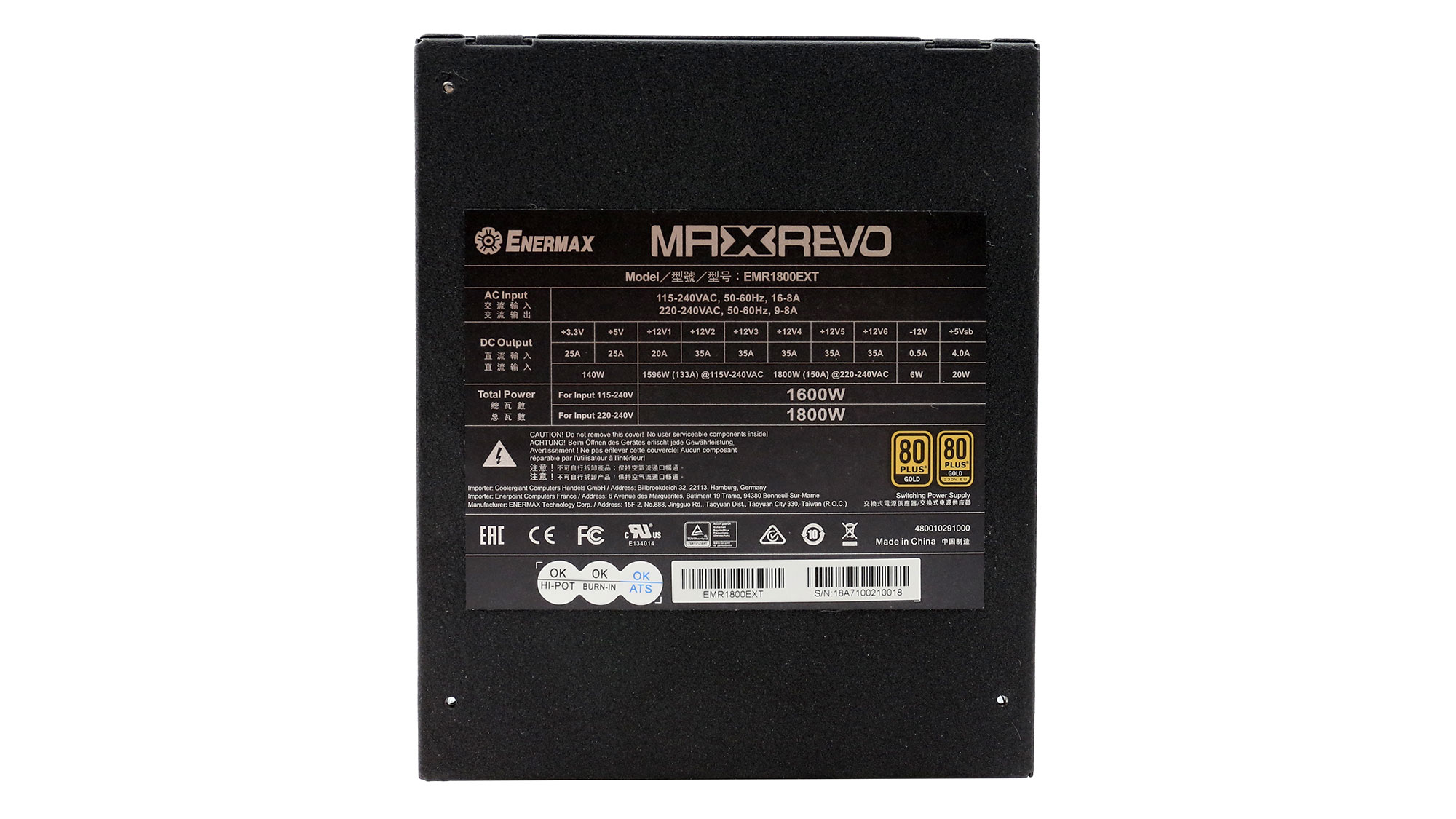
The EMR1800EXT is large for today's standards, measuring 187mm (7.4 inches) in depth. Given its max power though, its dimensions are justified. Its efficiency and noise certifications are not so impressive. Nowadays, 80 PLUS Gold and ETA-A power supplies are considered mid-end while the LAMBDA-S noise badge from Cybenetics denotes a noisy operation.


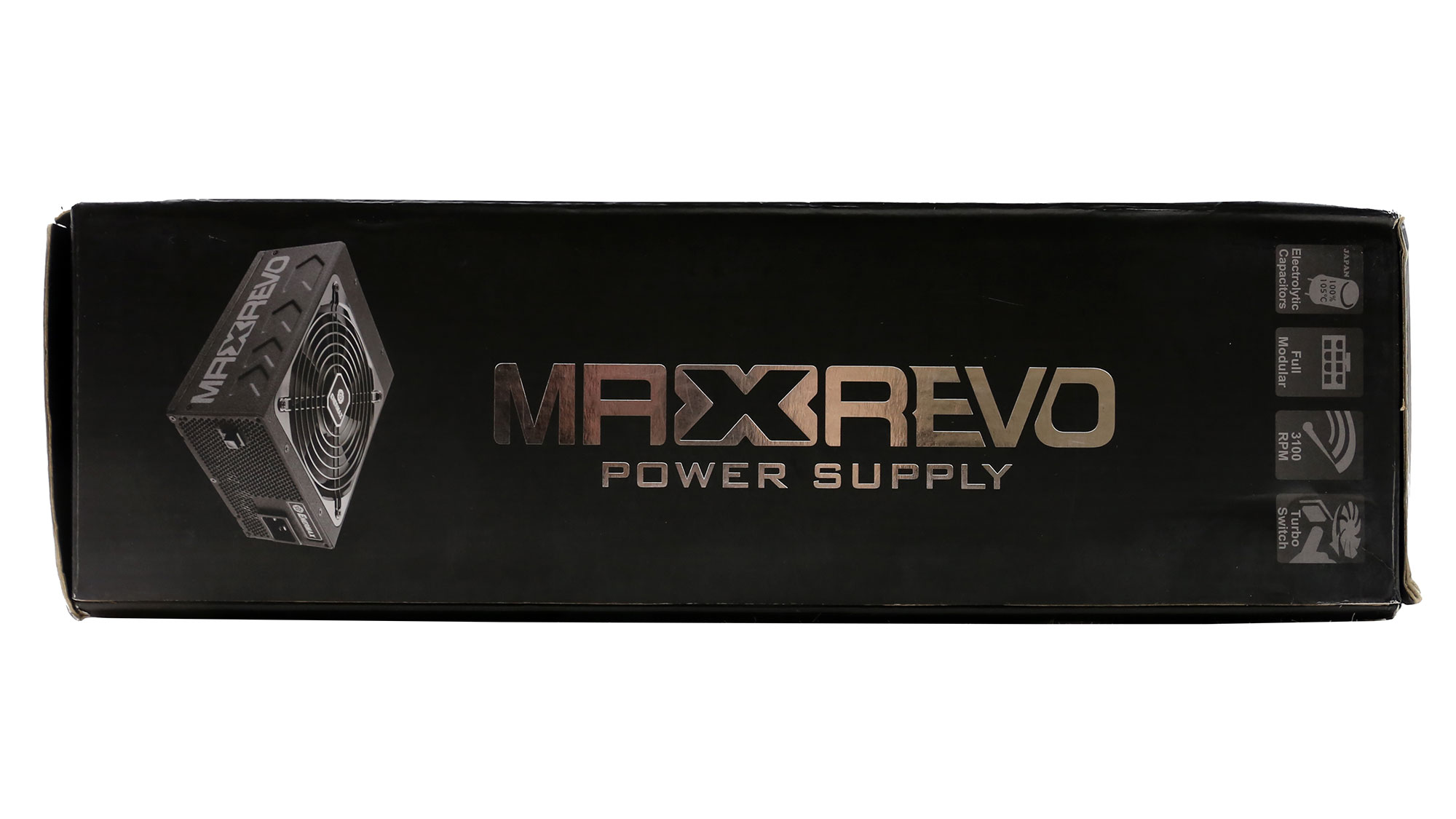
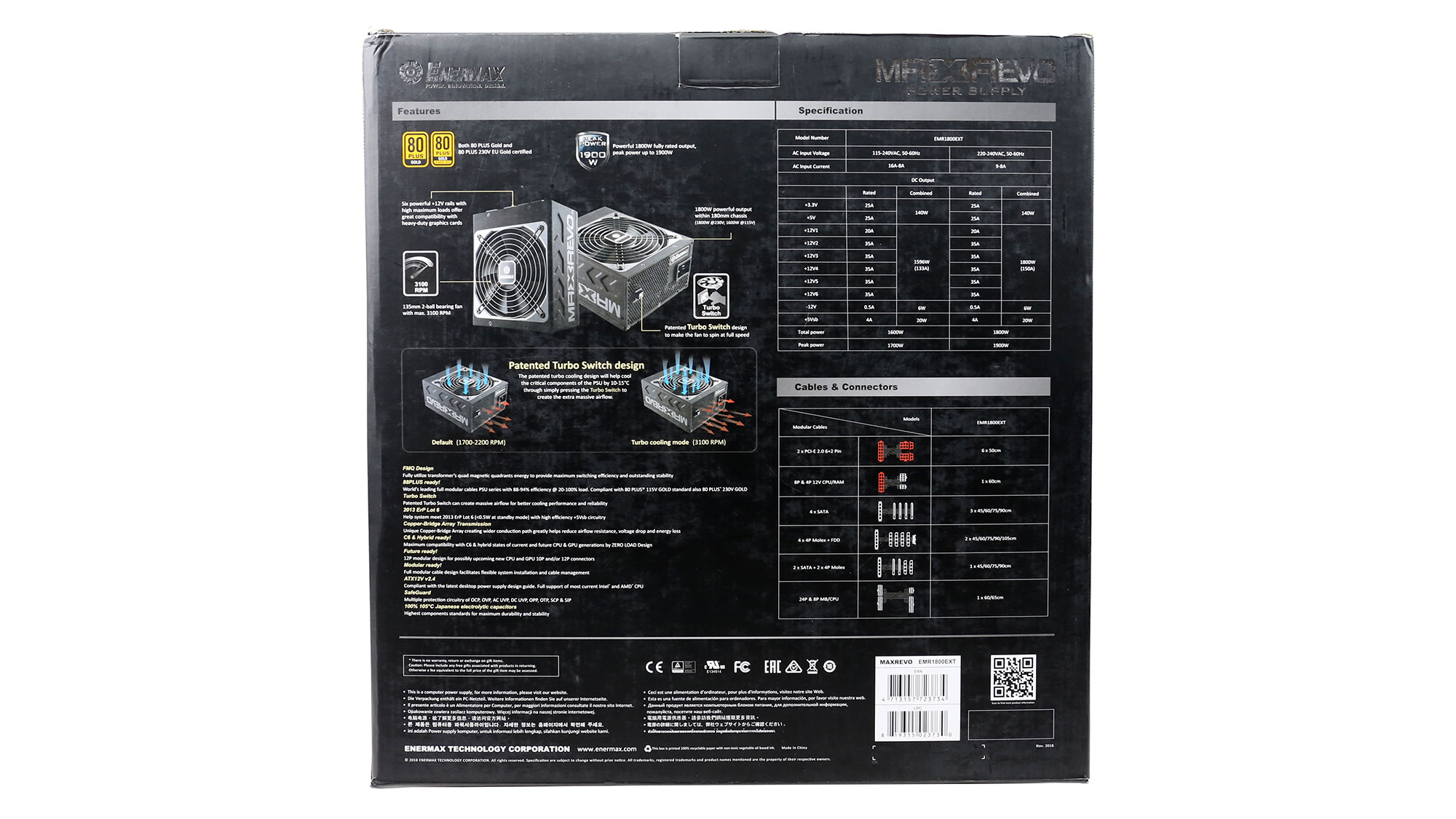

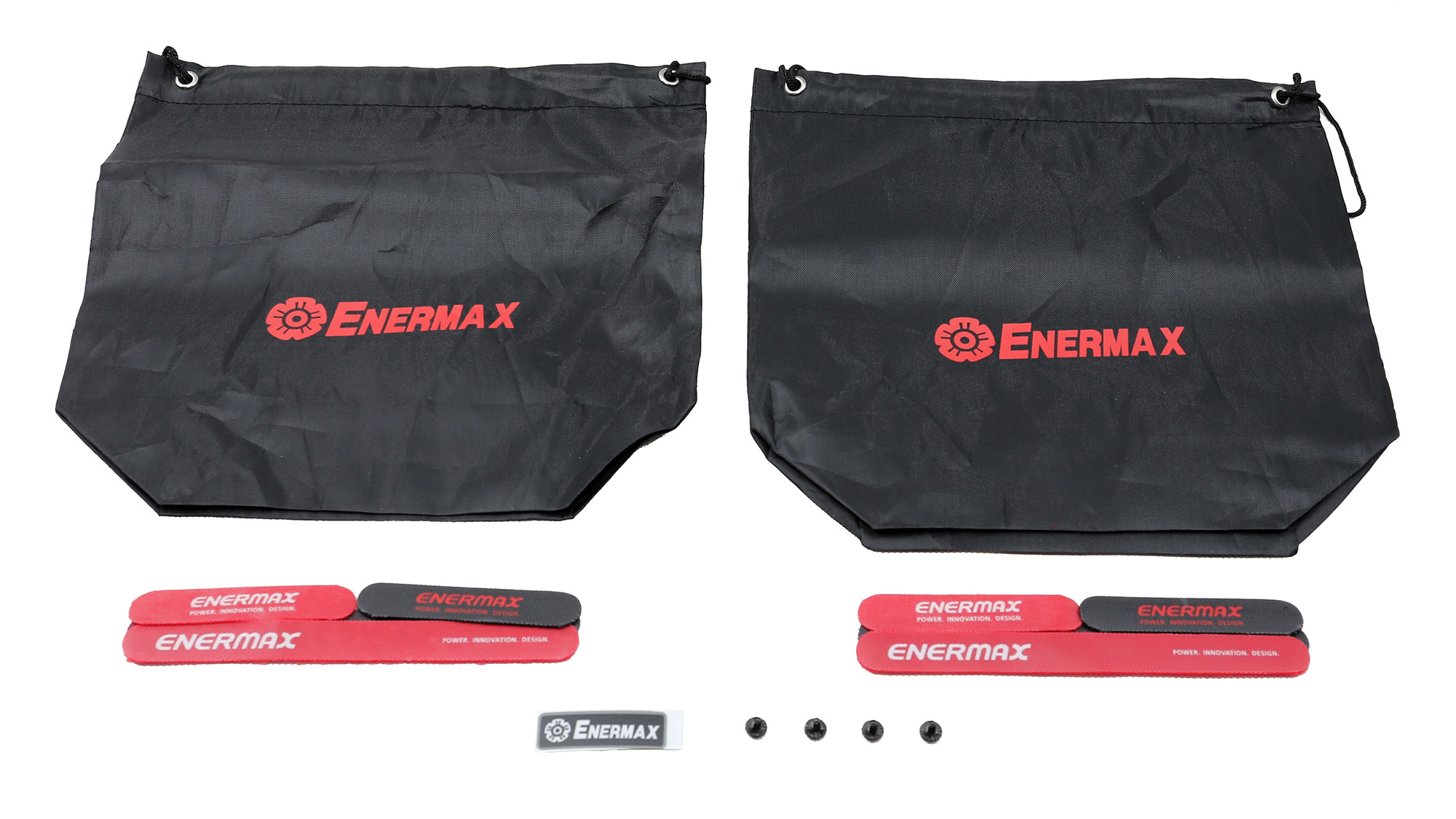
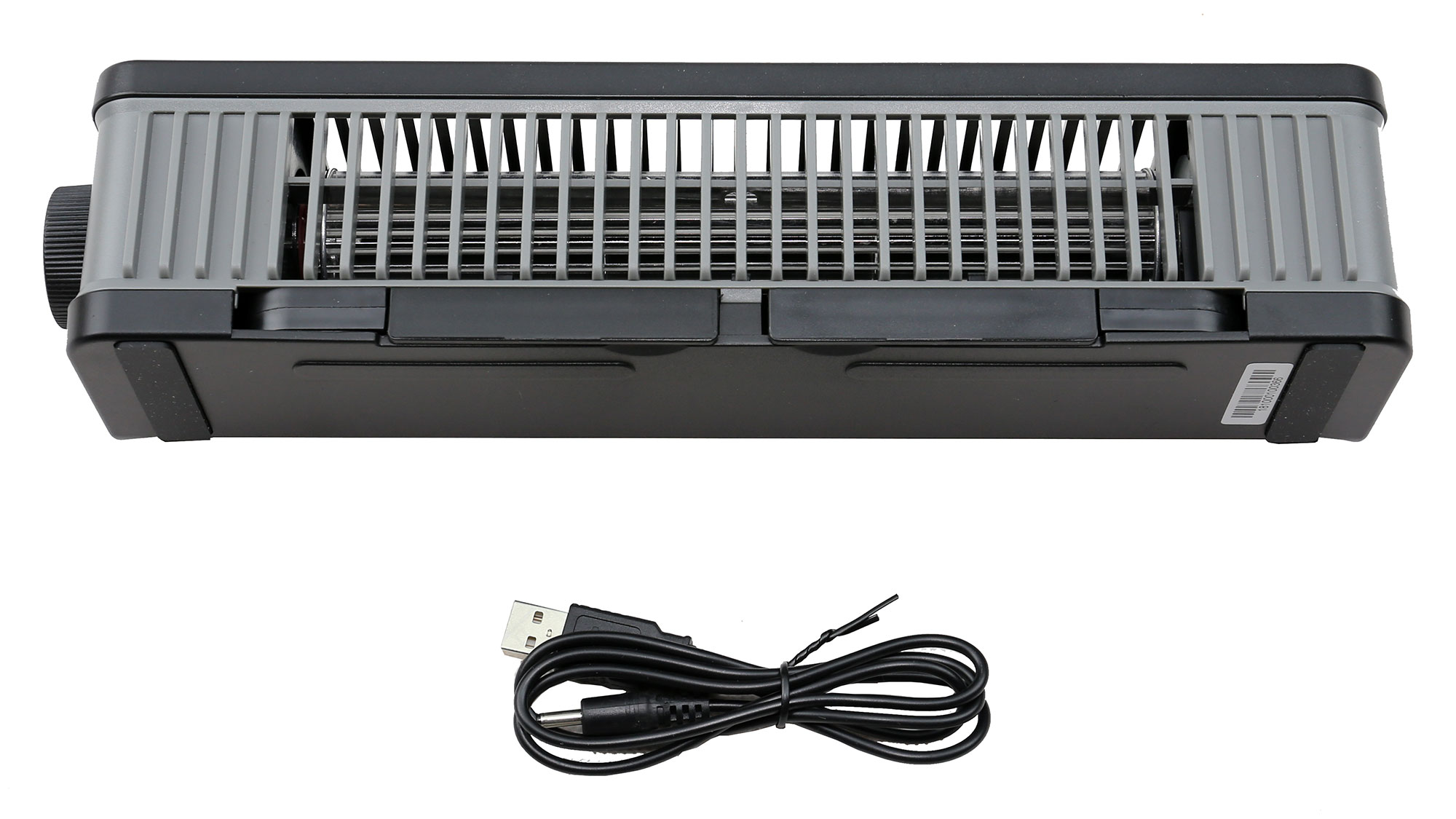
The unit comes in a huge box and the bundle is rich. Besides the usual stuff you will also find a fancy cooler for your laptop, which is powered through a USB connector. It is nice to get lots of accessories, but for us what matters the most is the performance that the product achieves.
Specifications
| Manufacturer (OEM) | Enermax |
|---|---|
| Max. DC Output | 1800W |
| Efficiency | 80 PLUS Gold, ETA-A (88-91%) |
| Noise | LAMBDA-S (40-45 dB[A]) |
| Modular | ✓ (Fully) |
| Intel C6/C7 Power State Support | ✓ |
| Operating Temperature (Continuous Full Load) | 0 - 50°C |
| Over Voltage Protection | ✓ |
| Under Voltage Protection | ✓ |
| Over Power Protection | ✓ |
| Over Current (+12V) Protection | ✓ |
| Over Temperature Protection | ✓ |
| Short Circuit Protection | ✓ |
| Surge Protection | ✓ |
| Inrush Current Protection | ✓ |
| Fan Failure Protection | ✗ |
| No Load Operation | ✓ |
| Cooling | 135mm Double Ball Bearing Fan (ADN512XB-A91) |
| Semi-Passive Operation | ✗ |
| Dimensions (W x H x D) | 152 x 87 x 187mm |
| Weight | 2.4 kg (5.29 lb) |
| Form Factor | ATX12V v2.4, EPS 2.92 |
| Warranty | 10 Years |
Power Specifications
| Rail | 3.3V | 5V | 12V1 | 12V2 | 12V3 | 12V4 | 12V5 | 12V6 | 5VSB | -12V | |
|---|---|---|---|---|---|---|---|---|---|---|---|
| Max. Power | Amps | 25 | 25 | 20 | 35 | 35 | 35 | 35 | 35 | 4 | 0.5 |
| Watts | 140 | 133A @115-240VAC - 150A @220-240VAC | 20 | 6 | |||||||
| Total Max. Power (W) for input 115-240 / 220-240 | 1600 / 1800 |
There are six +12V rails which can deliver up to 133A with 115-240V. Only with 220-240V the unit can deliver its full power, 1800W or 150A at +12V.
Cables & Connectors
| Modular Cables | ||||
|---|---|---|---|---|
| Description | Cable Count | Connector Count (Total) | Gauge | In Cable Capacitors |
| ATX connector 20+4 pin (600mm) / 8 pin EPS12V (650mm) | 1 | 1 / 1 | 16-22AWG | No |
| 8 pin EPS12V (600mm) / 4 pin ATX (600) | 1 | 1 / 1 | 16AWG | No |
| 2 x 6+2 pin PCIe (500mm) | 6 | 12 | 16-18AWG | No |
| SATA (450mm+150mm+150mm+150mm) | 3 | 12 | 18AWG | No |
| SATA (450mm+150mm) / 4 pin Molex (+150mm+150mm) | 1 | 2 / 2 | 18AWG | No |
| 4-pin Molex (450mm+150mm+150mm+150mm) / FDD (+150mm) | 2 | 8 / 2 | 18-20AWG | No |
| AC Power Cord (1440mm) - C14 coupler | 1 | 1 | 14AWG | - |
There are plenty of cables and connectors provided, but they are bulky and not so flexible, although they don't use in-line caps. With twelve PCIe connectors someone can build his/her dream gaming system. If we were still in the mining era (thankfully we are not) this PSU would be ideal since it can handle up to six high-end graphics cards.
The distance between the peripheral connectors is good at 150mm and the number of 4-pin Molex connectors is quite high. According to our experience, no modern system will ever need so many 4-pin Molex connectors so ten of those is just an overkill.
Get Tom's Hardware's best news and in-depth reviews, straight to your inbox.

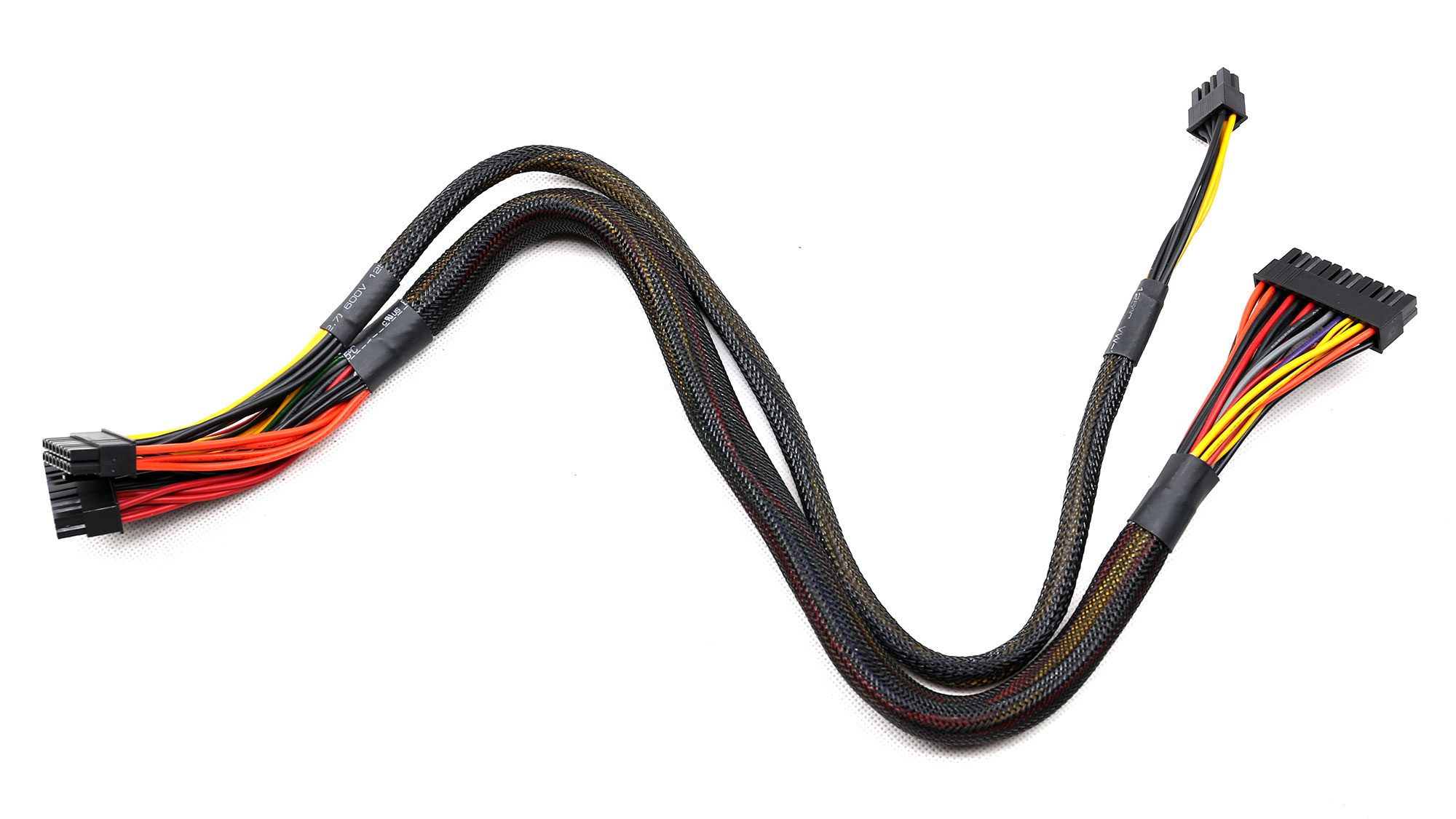
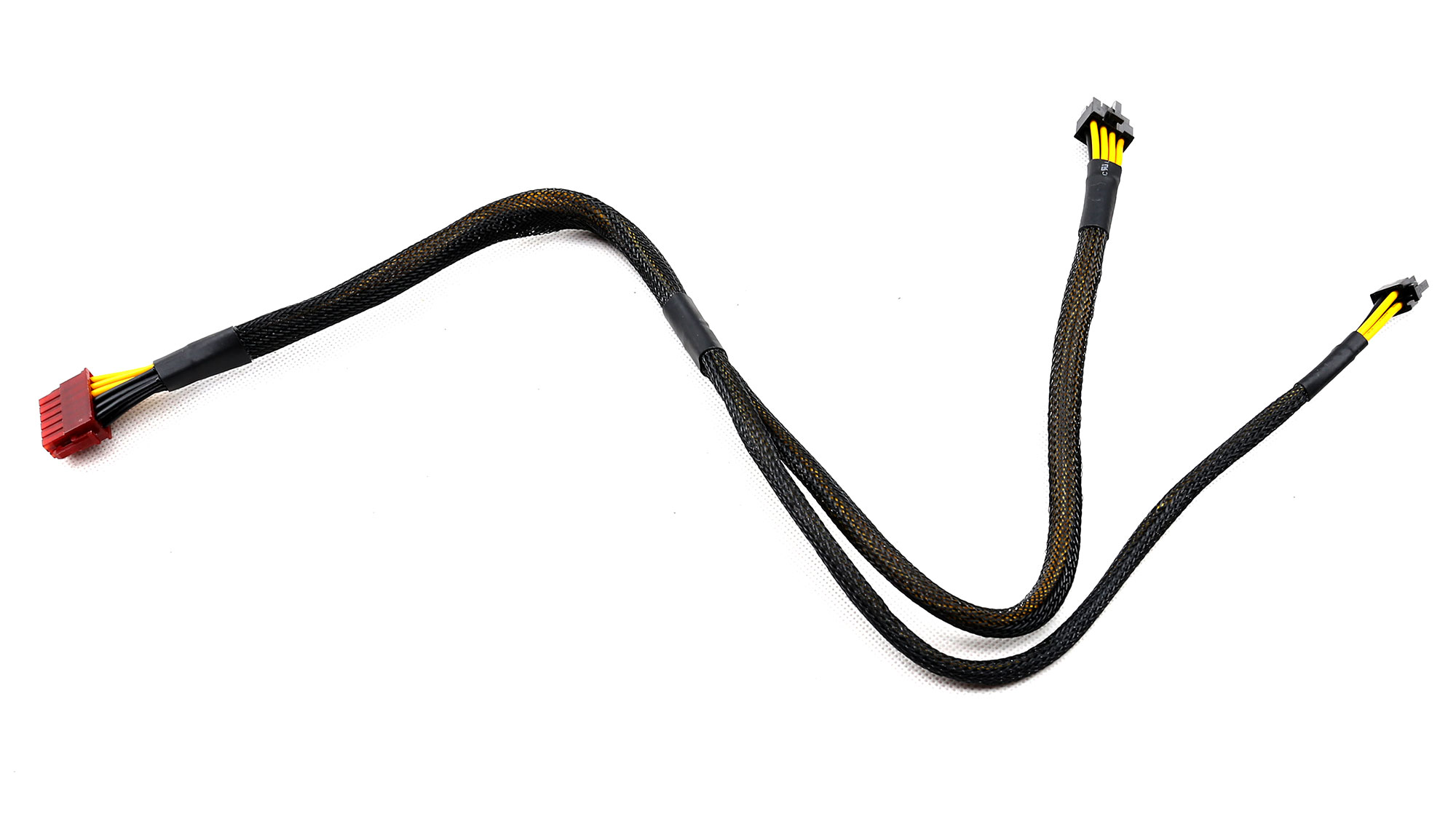
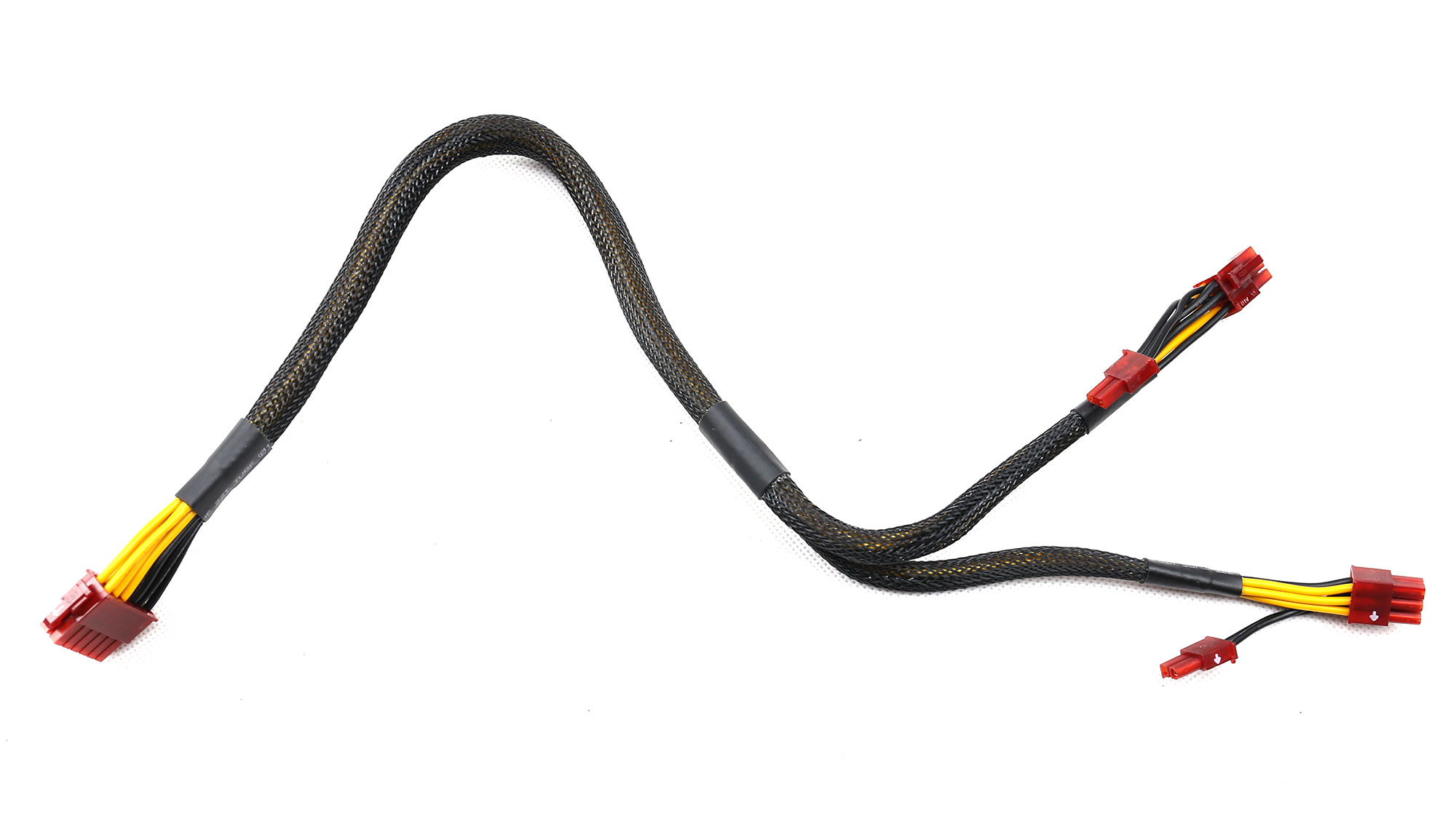

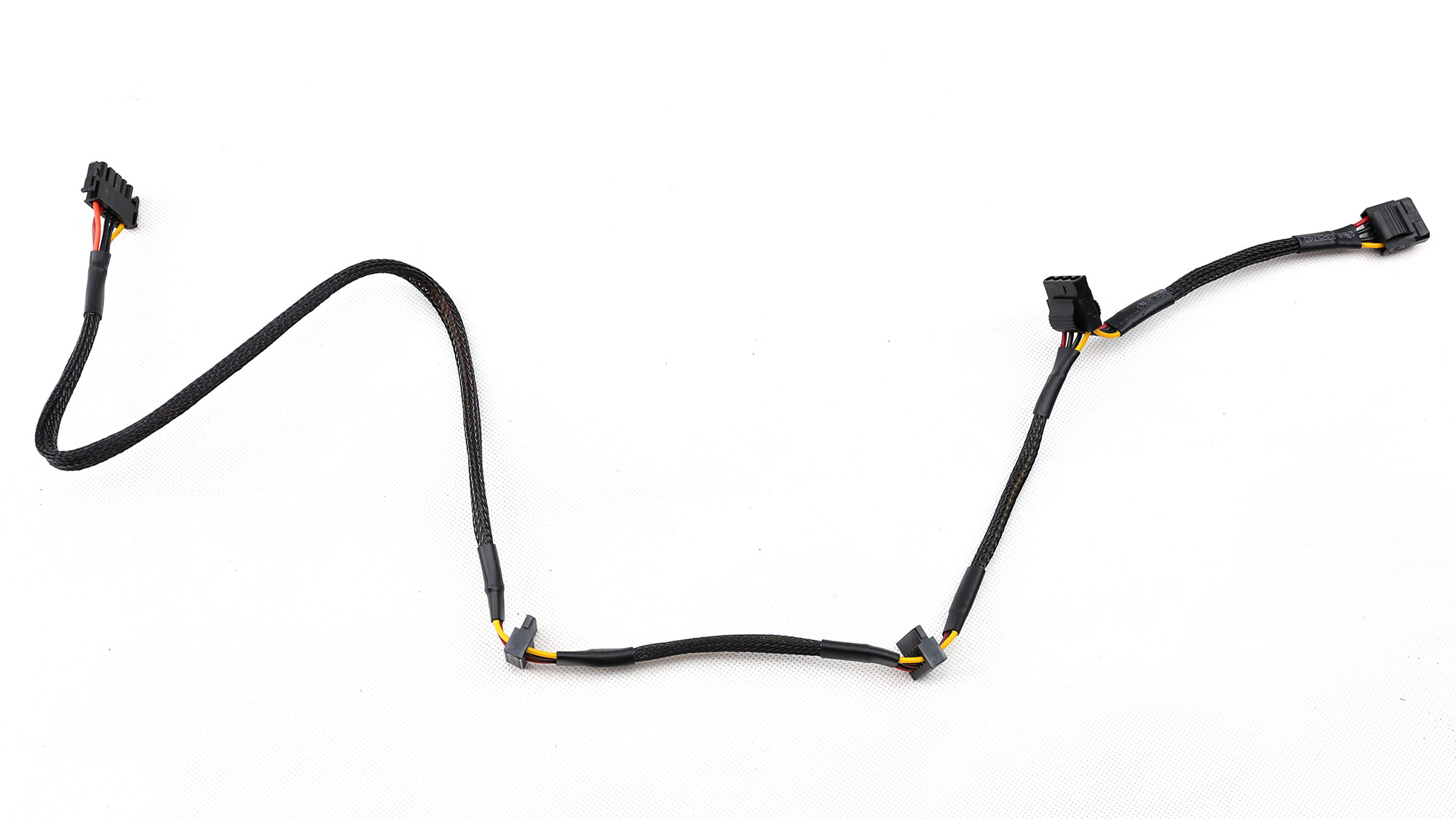
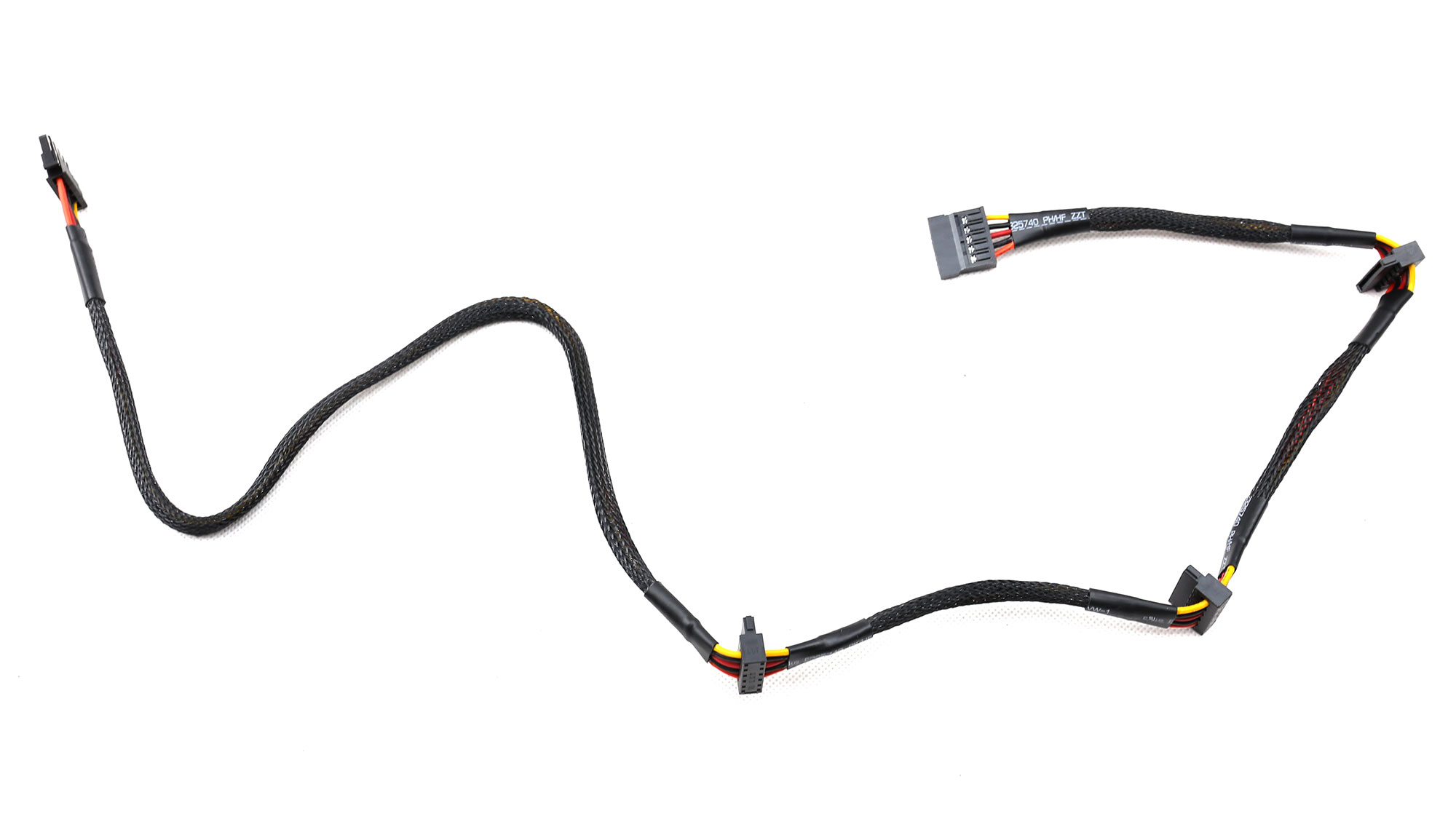
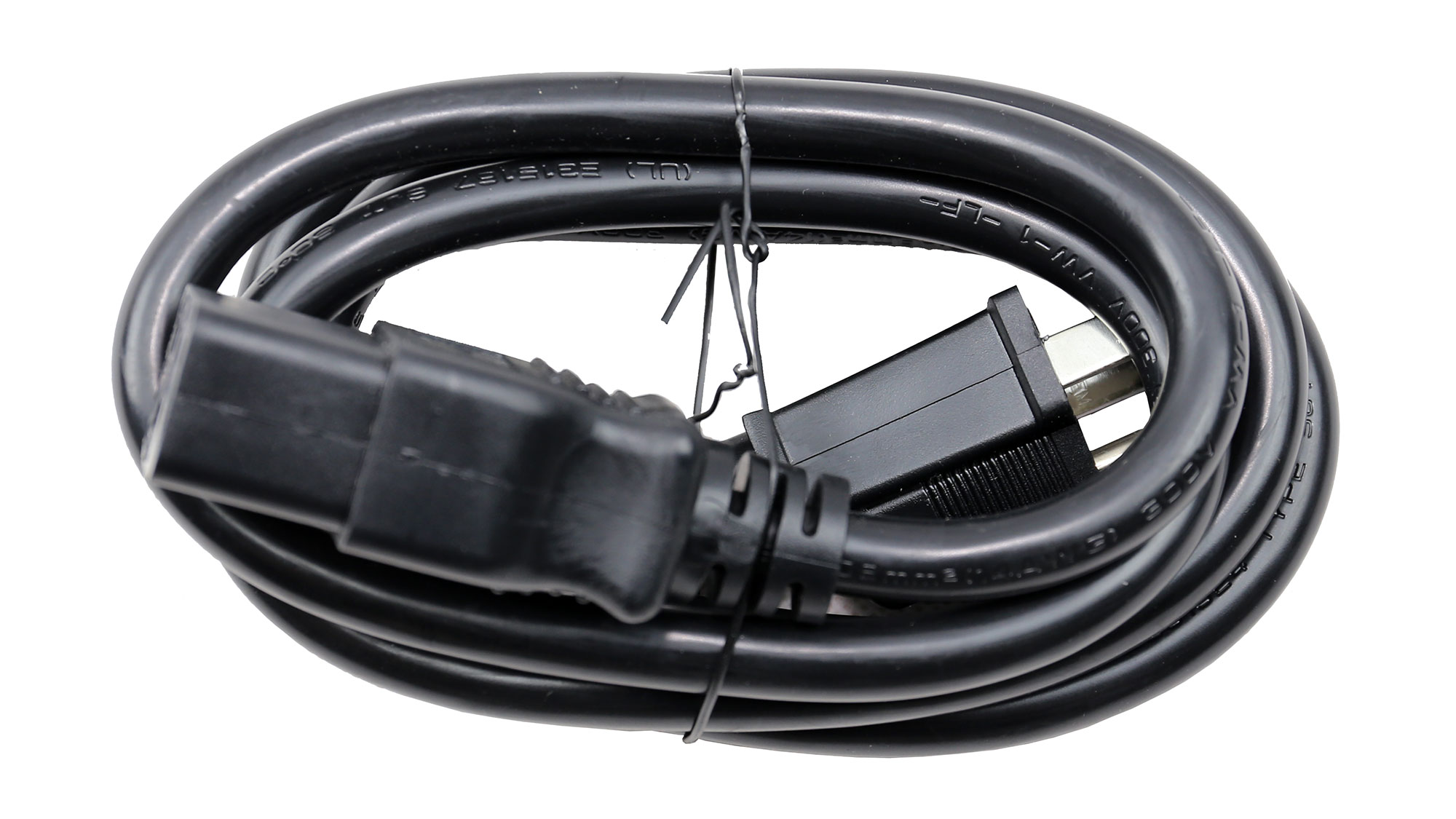
Power Distribution
| Power Distribution | |
|---|---|
| 12V1 | 24-pin ATX |
| 12V2 | 1x EPS |
| 12V3 | Left 12-pin CPU/GPU connectors (2x) |
| 12V4 | Left SATA & 4P Molex, Middle-top 12-pin CPU/GPU |
| 12V5 | Middle-bottom & Right-bottom 12-pin CPU/GPU |
| 12V6 | Right SATA & 4P Molex & Top-right 12-pin CPU/GPU |
The power distribution on the modular panel is exactly the same as in the lower capacity MaxRevo models. The 12V1 rail should ideally power at least half of the peripheral/SATA sockets and not only the 24pin ATX connector. The 12V2, used by the first EPS connector, could also feed the other peripheral/SATA sockets. In case you need the second EPS/ATX12V connector, you should connect its cable either to the middle top socket or to the top right socket that are fed by the 12V4 and 12V6 rails, respectively. These rails provide power to a single 12-pin socket and to the peripheral sockets, so you won't mix the EPS and PCIe connectors, which can be the case if you use the 12V3 and 12V5 rails.
Component Analysis
We strongly encourage you to have a look at our PSUs 101 article, which provides valuable information about PSUs and their operation, allowing you to better understand the components we're about to discuss.
| General Data | |
|---|---|
| Manufacturer (OEM) | Enermax |
| PCB Type | Double Sided |
| Primary Side | |
| Transient Filter | 4x Y caps, 2x X caps, 3x CM chokes,1x DM chokes,1x MOV |
| Inrush Protection | NTC Thermistor & Relay |
| Bridge Rectifier(s) | 1x Bridge |
| APFC MOSFETS | 2x Infineon SPW35N60C3 (650V, 21.9A @ 100°C, 0.1Ohm) |
| APFC Boost Diode | 1x CREE C3D10060A (600V, 14A @ 135°C) |
| Hold-up Cap(s) | 3x Chemi-Con (420V, 390uF, 2000h @ 105°C, KMR) |
| Main Switchers | 4x Toshiba TK18A60V (600V, 18A @ 150°C, 0.19Ohm) |
| IC Driver | Texas Instruments UCC27324 |
| APFC Controller | Infineon 2PCS02 & CM03X Green PFC Controller |
| Main Controller | Texas Instruments UCC28950 |
| Topology | Primary side: Interleaved PFC, Phase Shift ZVT Full-Bridge Secondary side: Synchronous Rectification & DC-DC converters |
| Secondary Side | |
| +12V MOSFETS | 8x Infineon IPP015N04N (40V, 120A @ 100°C, 1.5mOhm) |
| 5V & 3.3V | DC-DC Converters: 8x Sinopower SM3116NAU (30V, 48A @ 100°C, 6.9mOhm @ 125°C) PWM Controllers: 2x ANPEC APW7073 |
| Filtering Capacitors | Electrolytics: 8x Chemi-Con (4 - 10,000h @ 105°C, KY), 10x Rubycon (4 - 5,000h @ 105°C, ZLK) Polymers: 3x Elite (CS), 8x Apaq |
| Supervisor IC | SITI PS238 (OCP, OVP, UVP, SCP, PG) |
| Fan Model | ADDA ADN512XB-A91 (135mm, 12V, 0.66A, Double Ball Bearing Fan) |
| 5VSB Circuit | |
| Rectifier | TSF10U60C SBR (60V, 10A) |
| Standby PWM Controller | Power Integrations TOP265EG |
This is one of the last Enermax designs. At the time that this platform/design was released, it stacked up pretty well against the competition but, in today's tough field, it doesn't do so well.
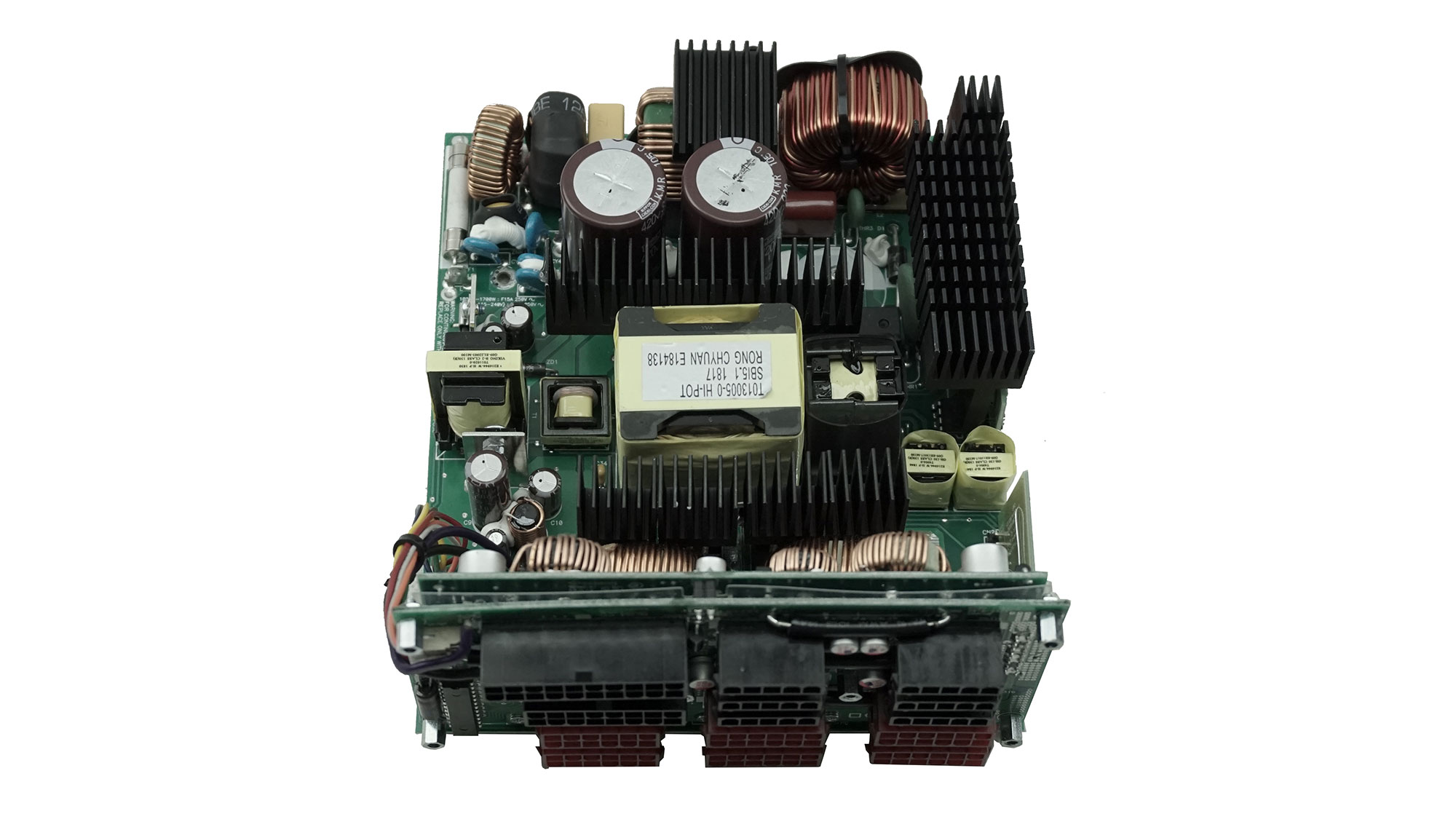
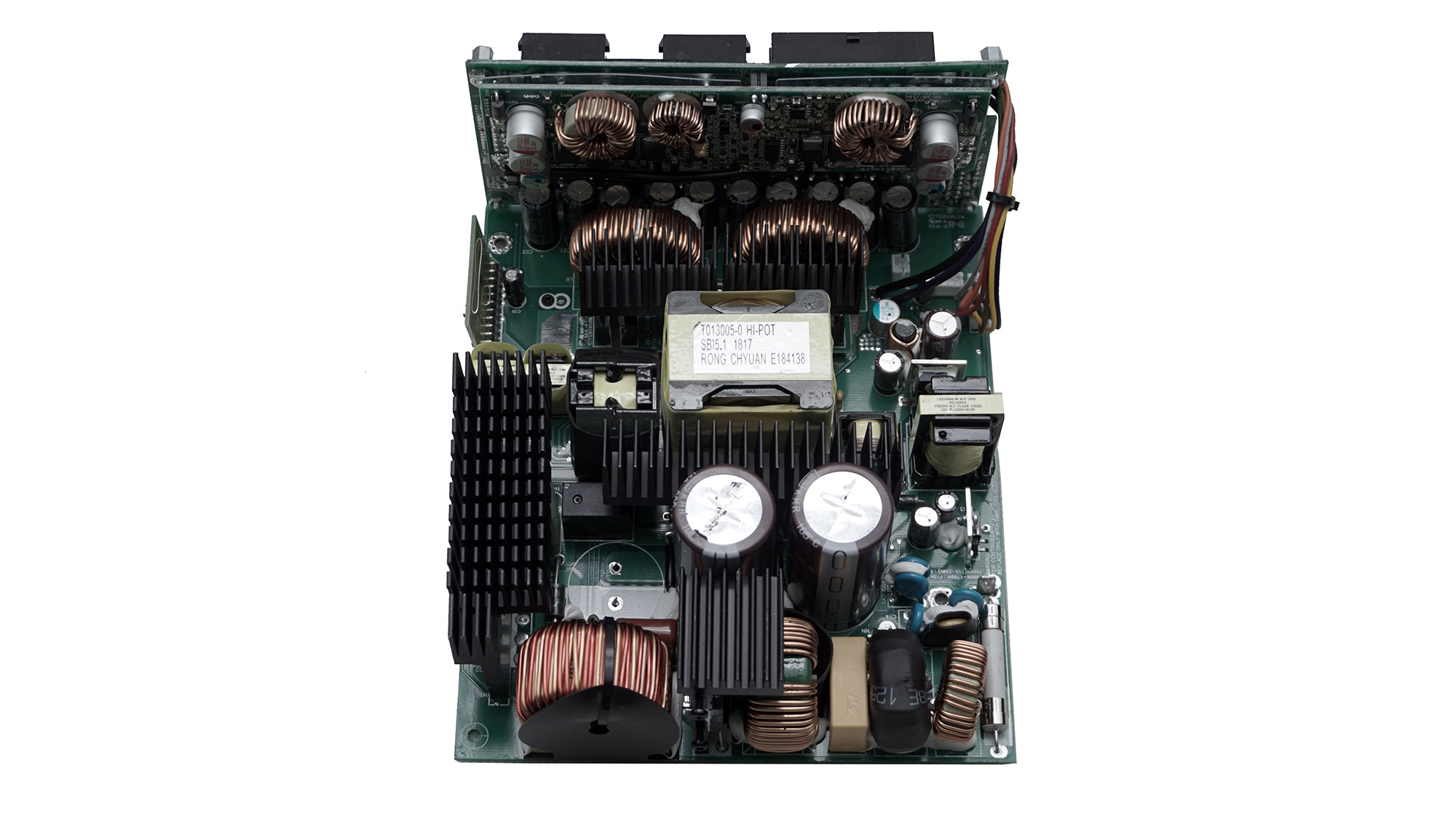

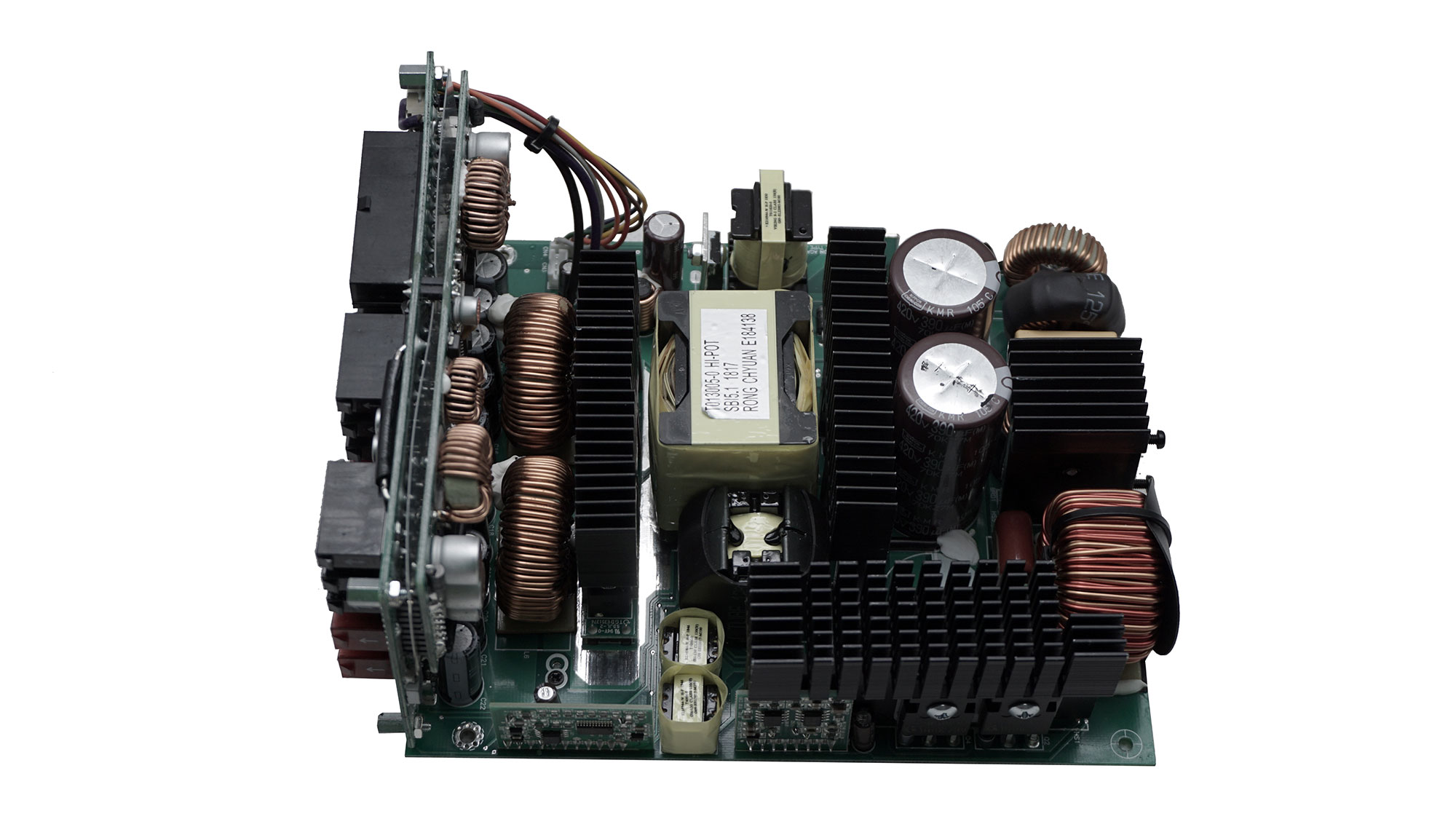
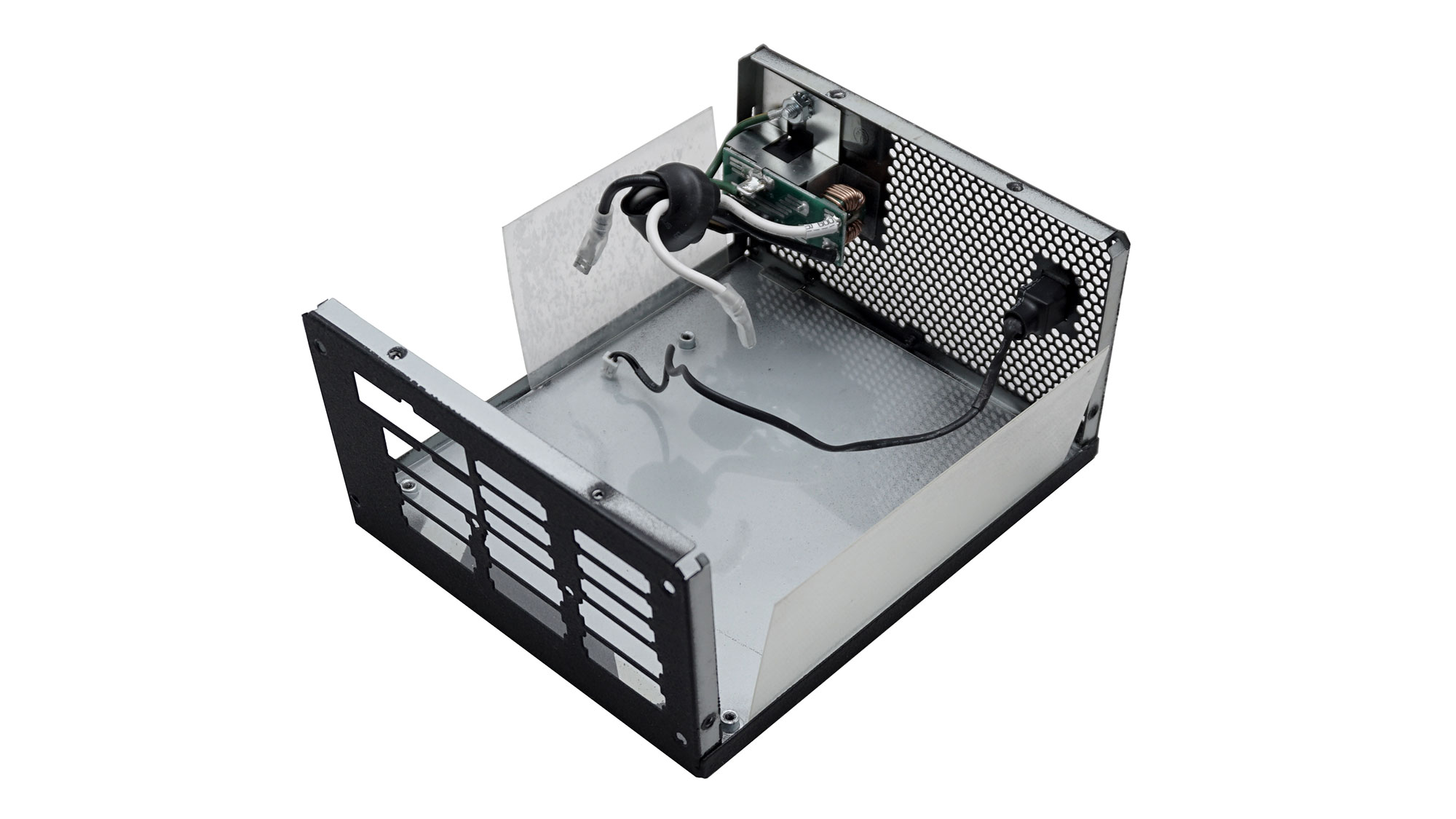

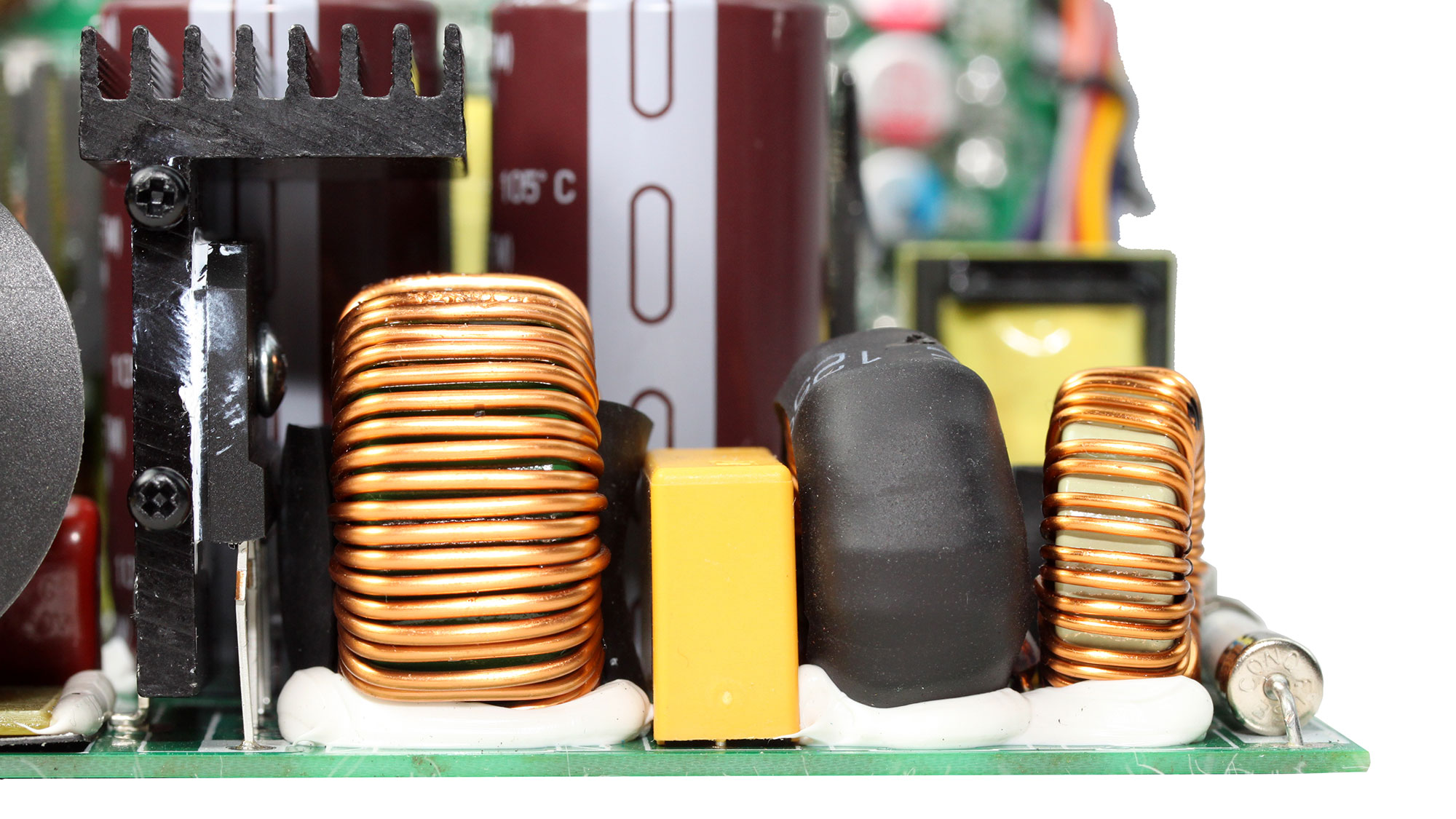
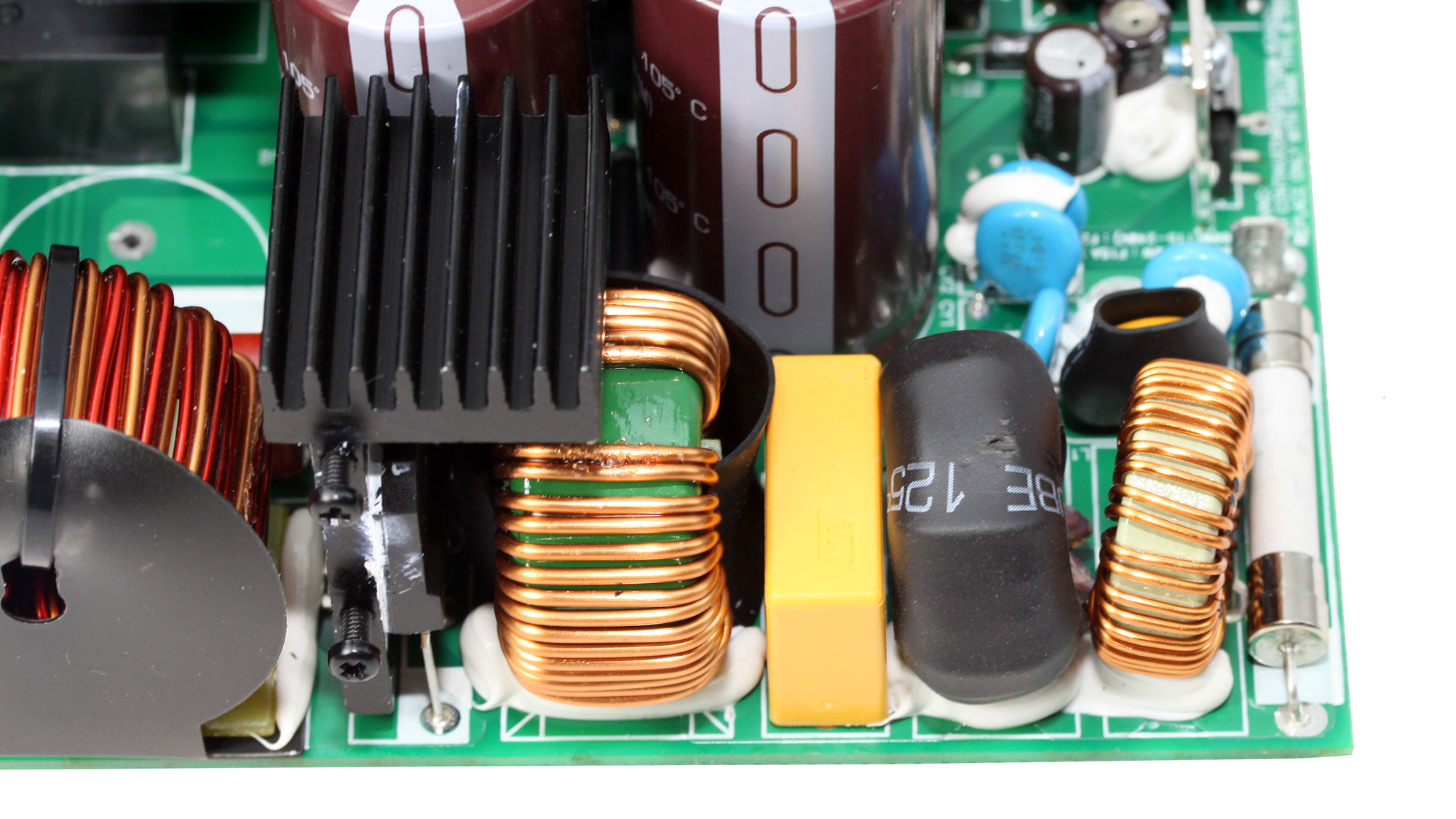

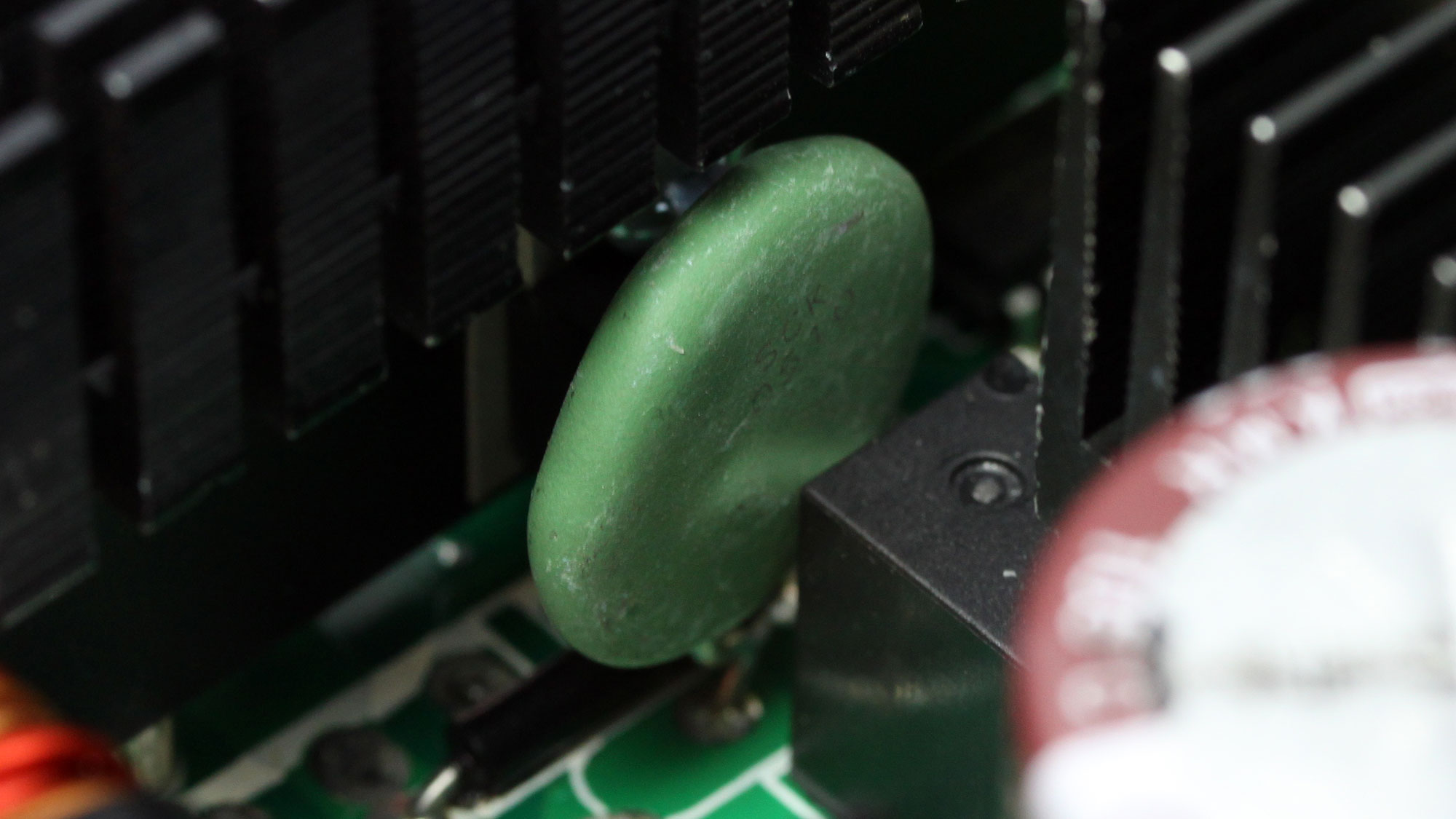
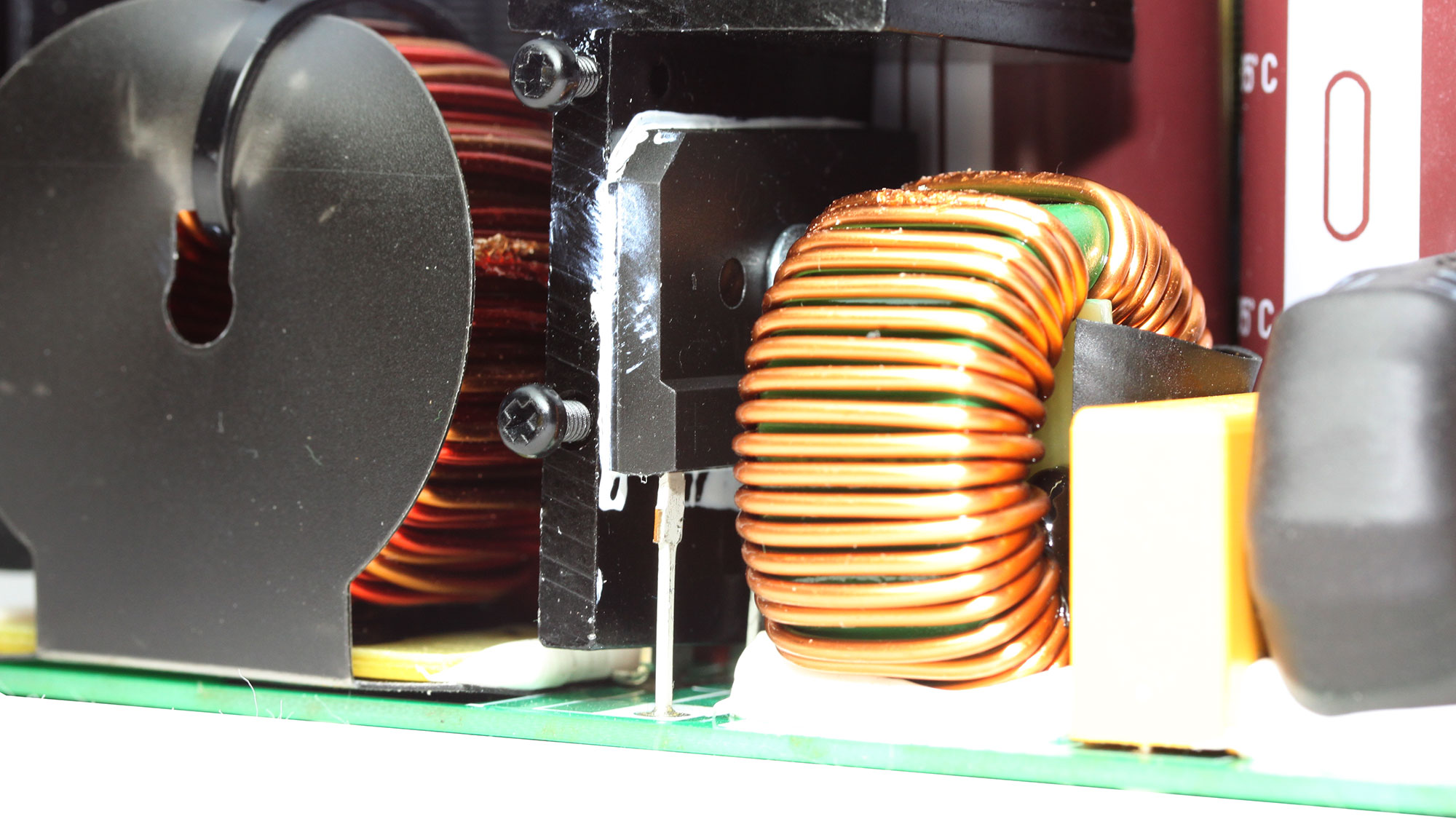
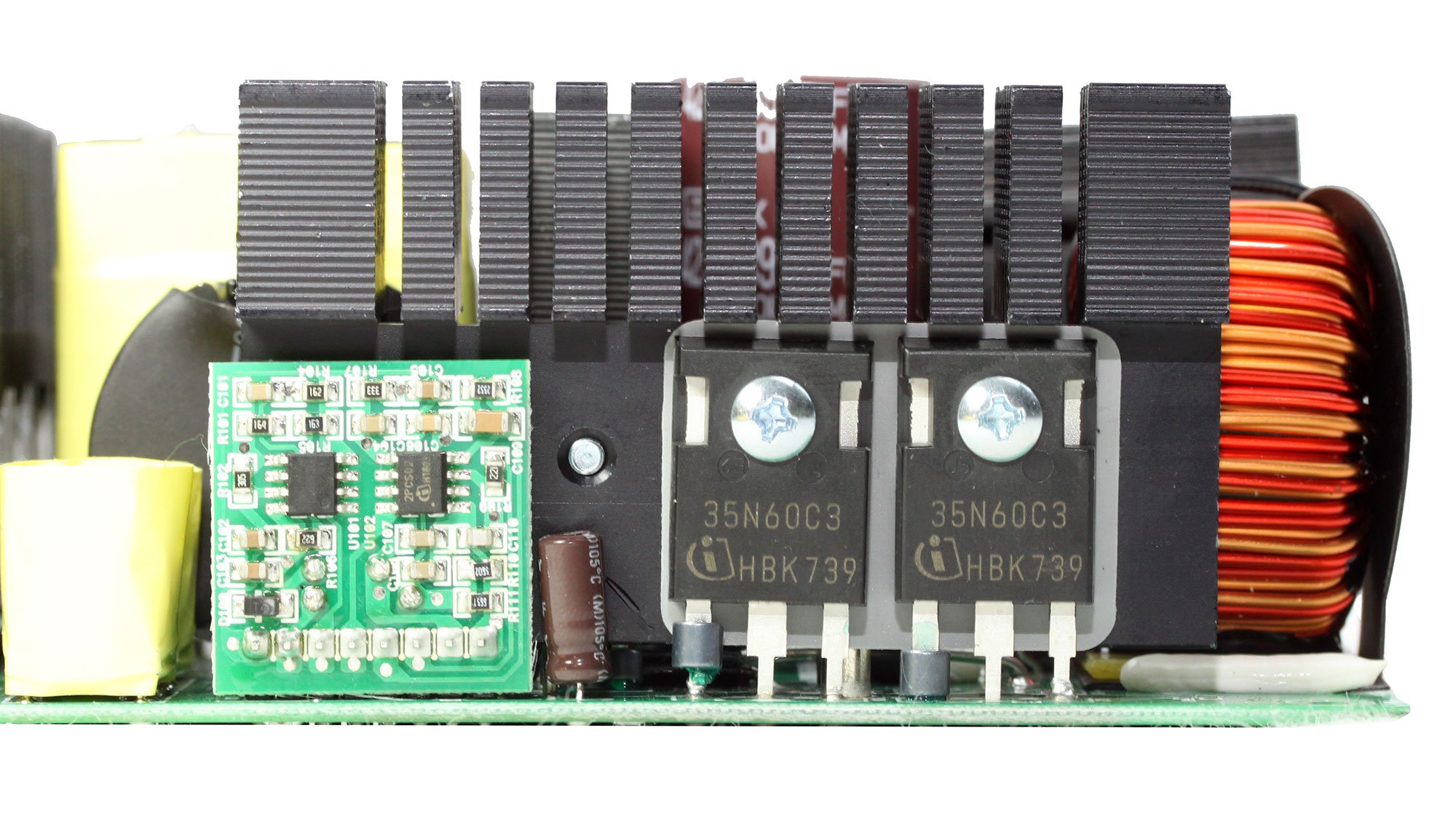
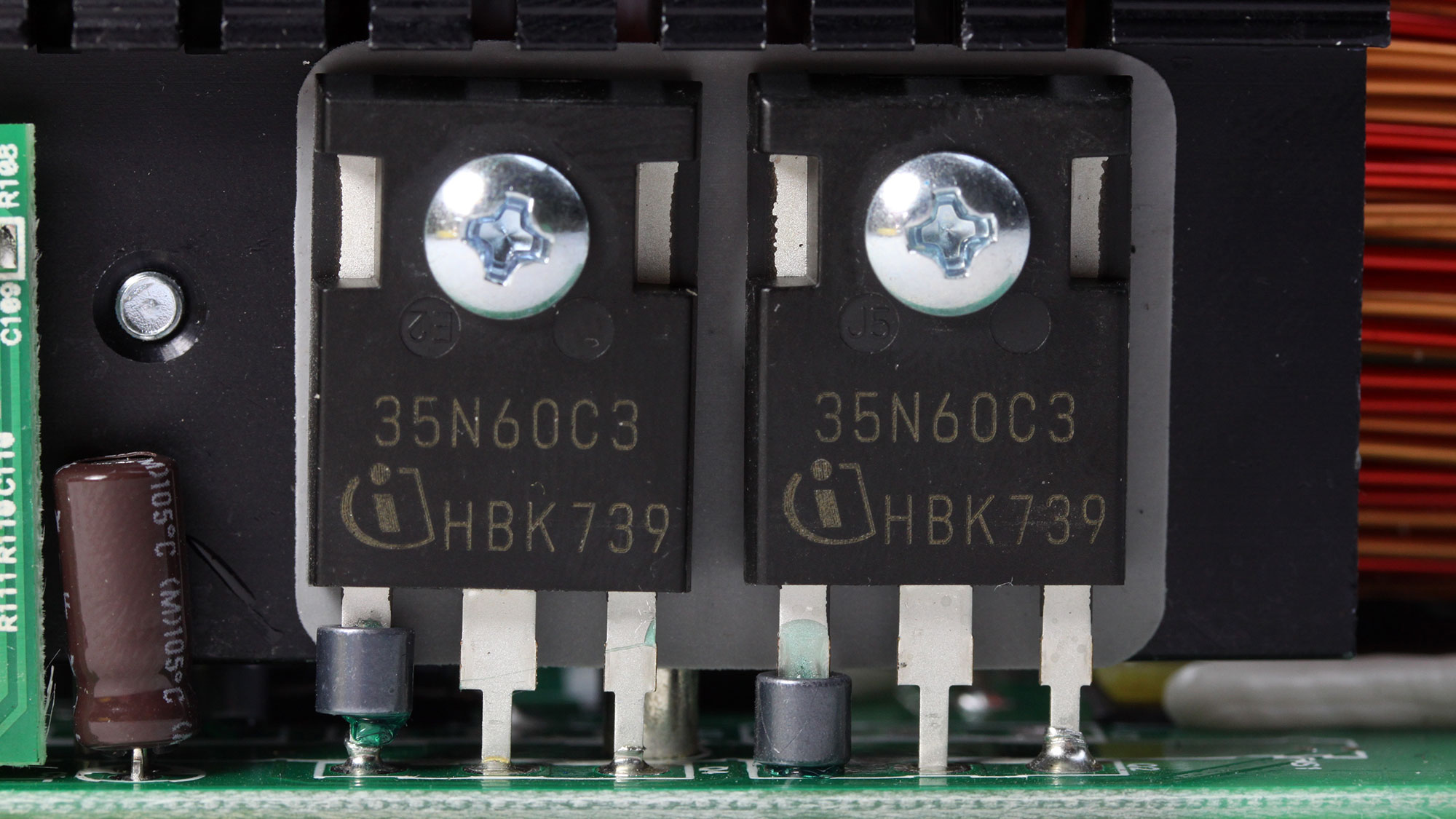
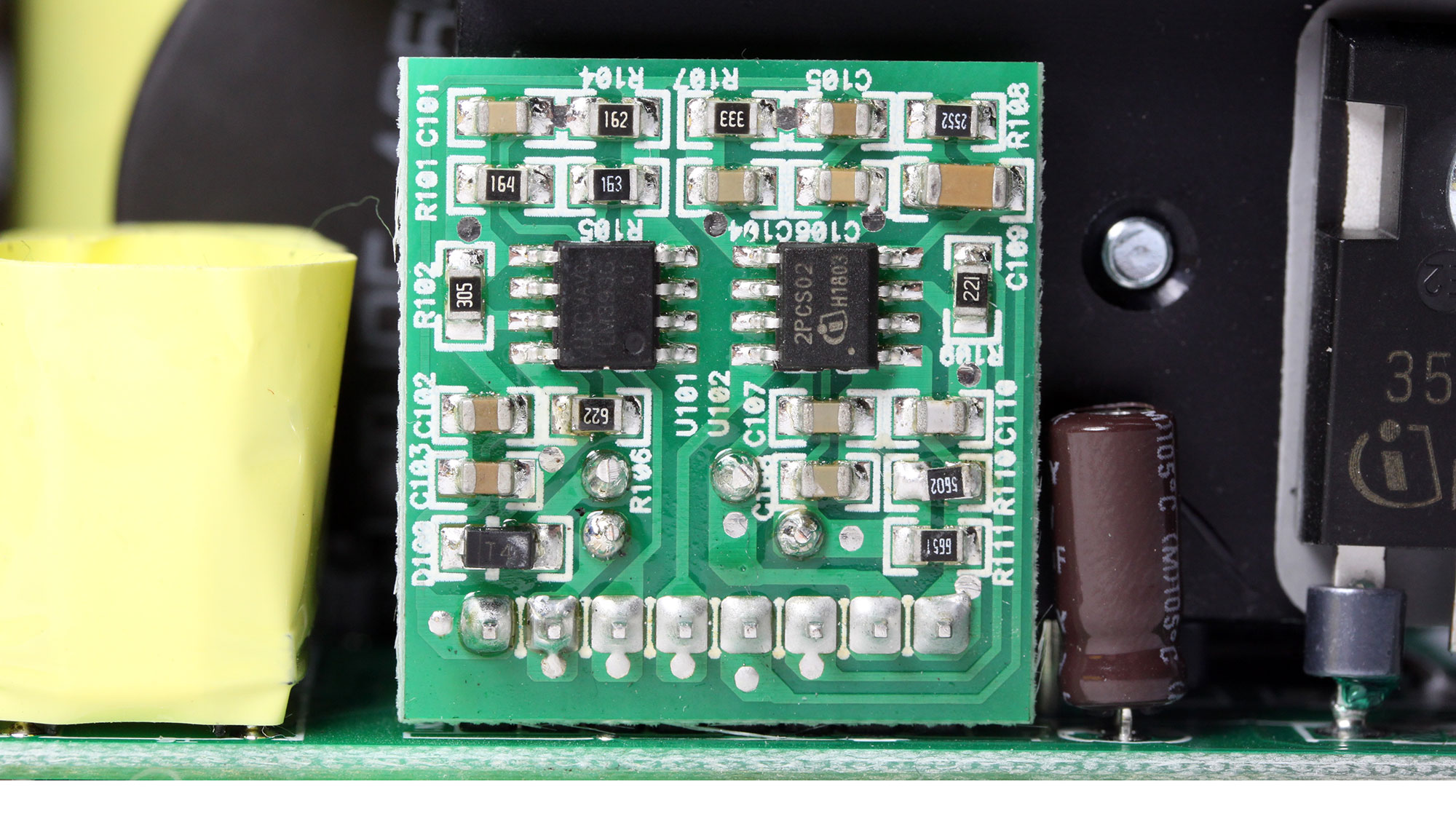
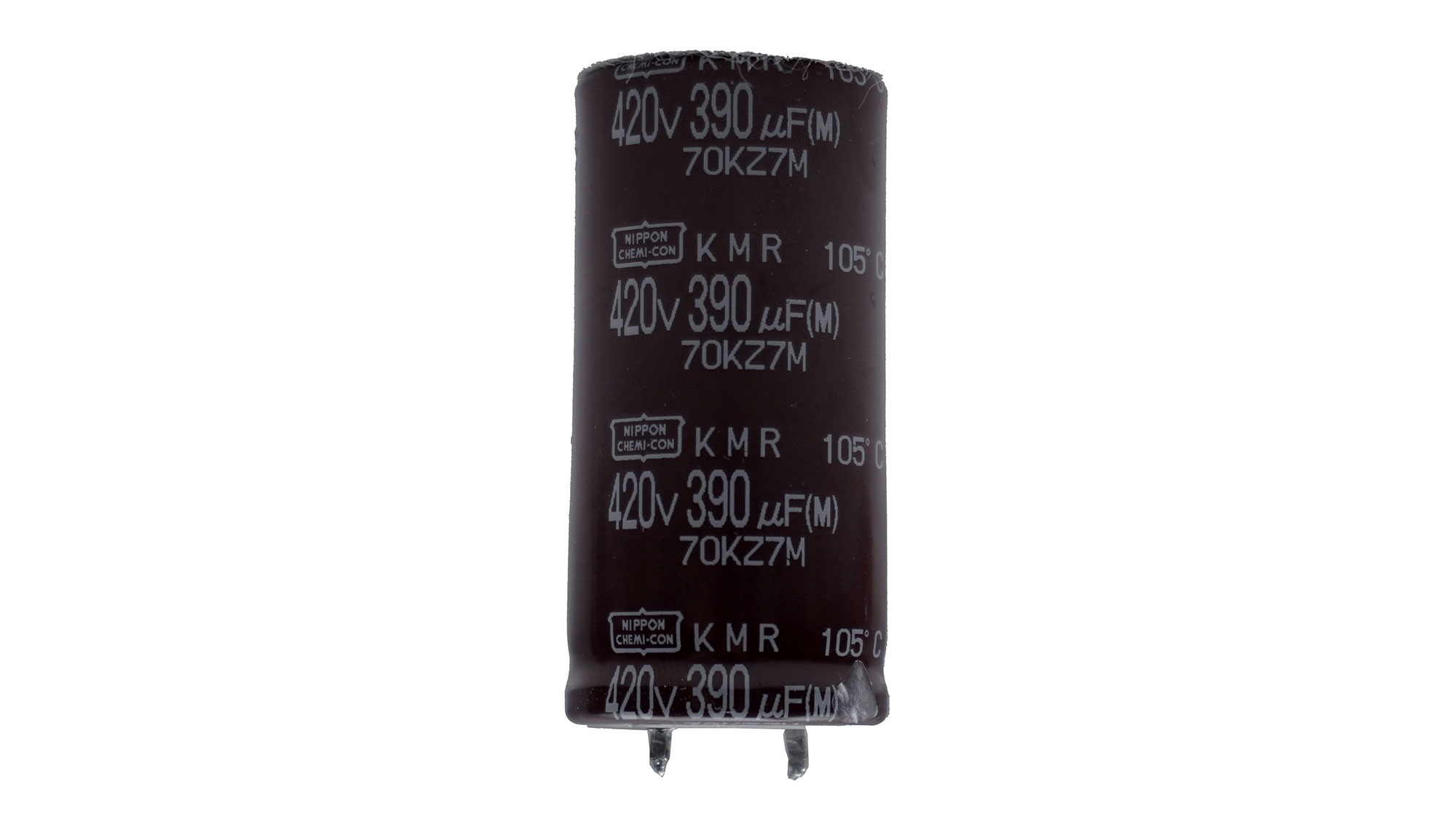
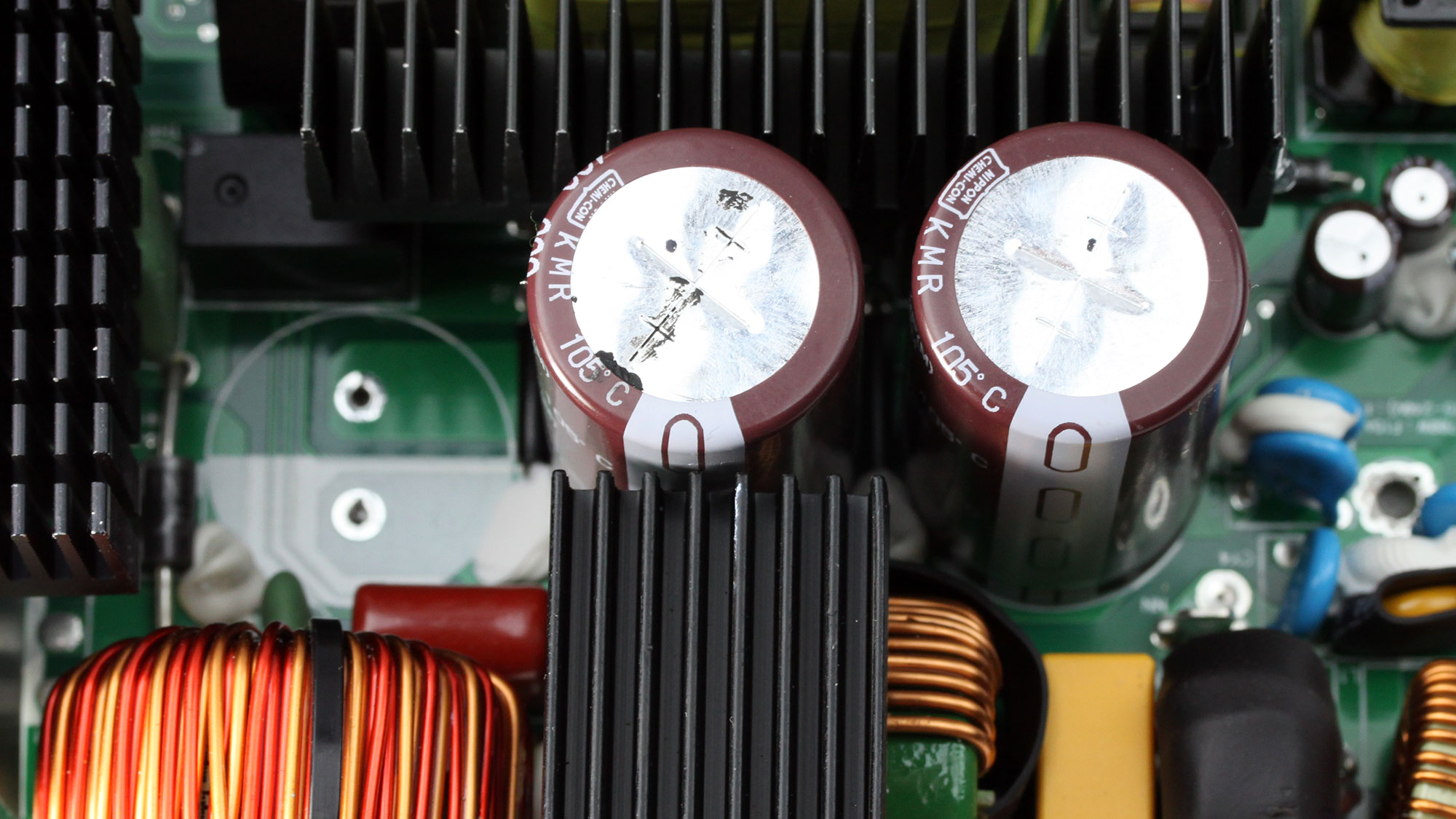
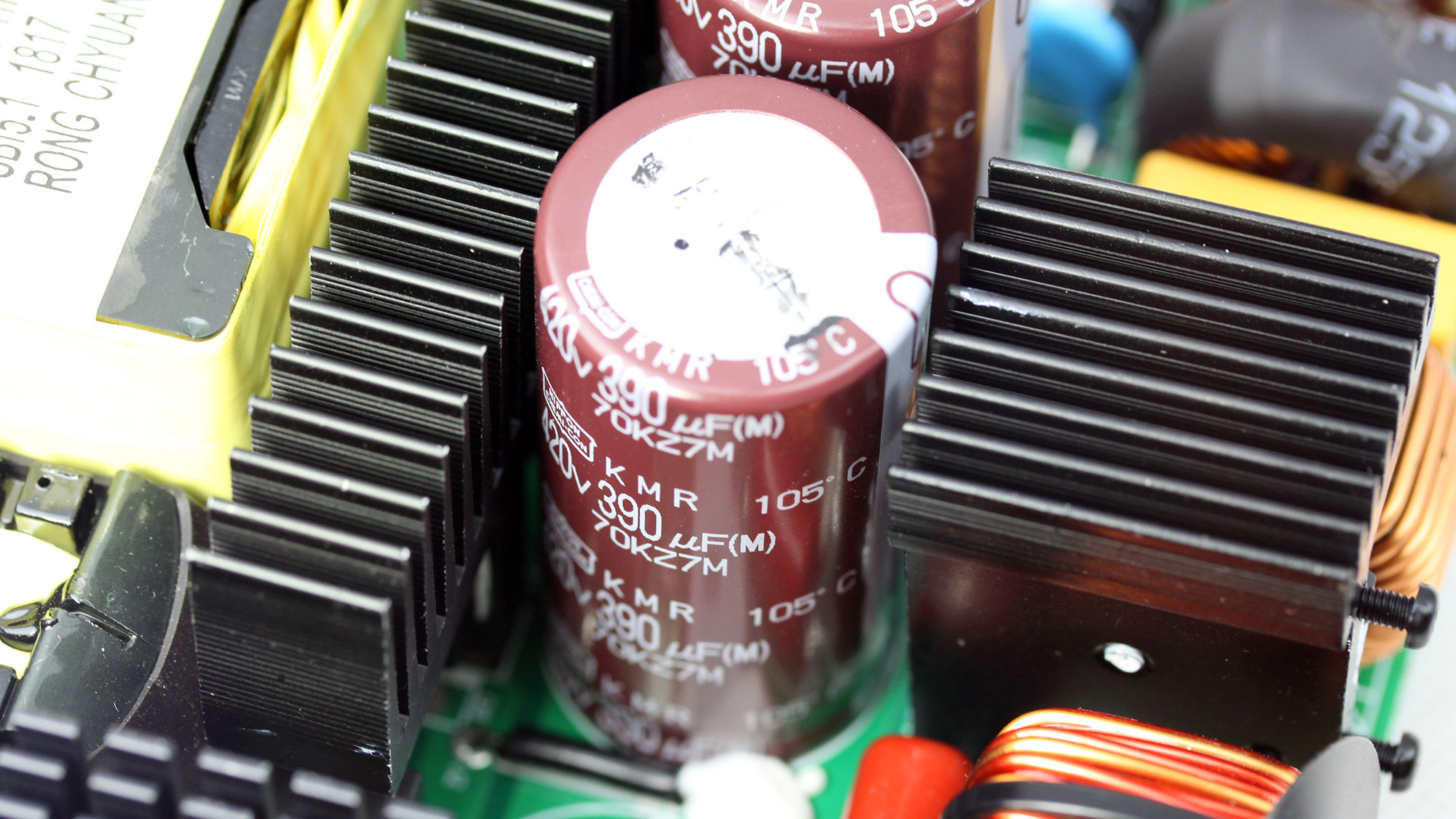

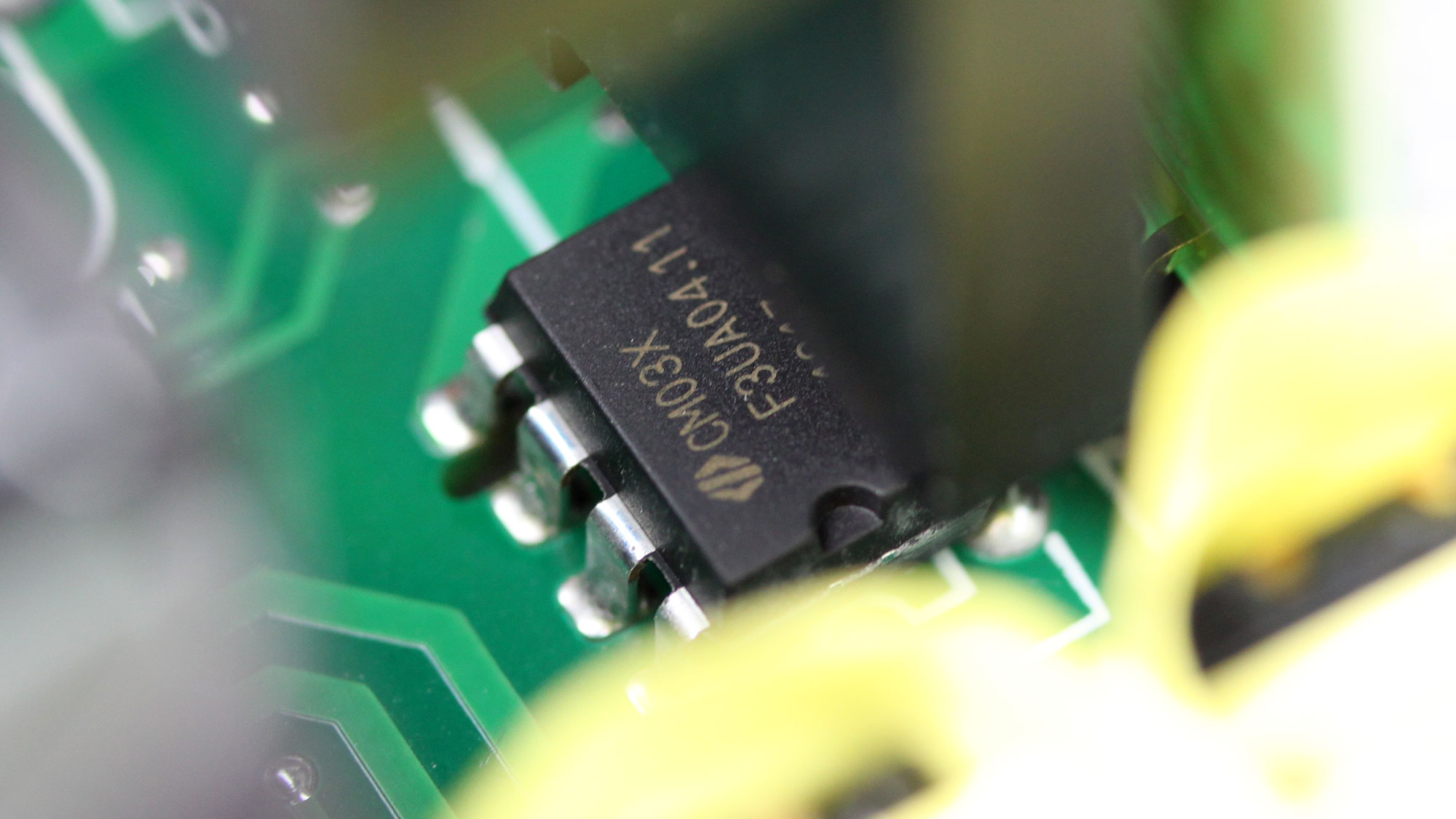


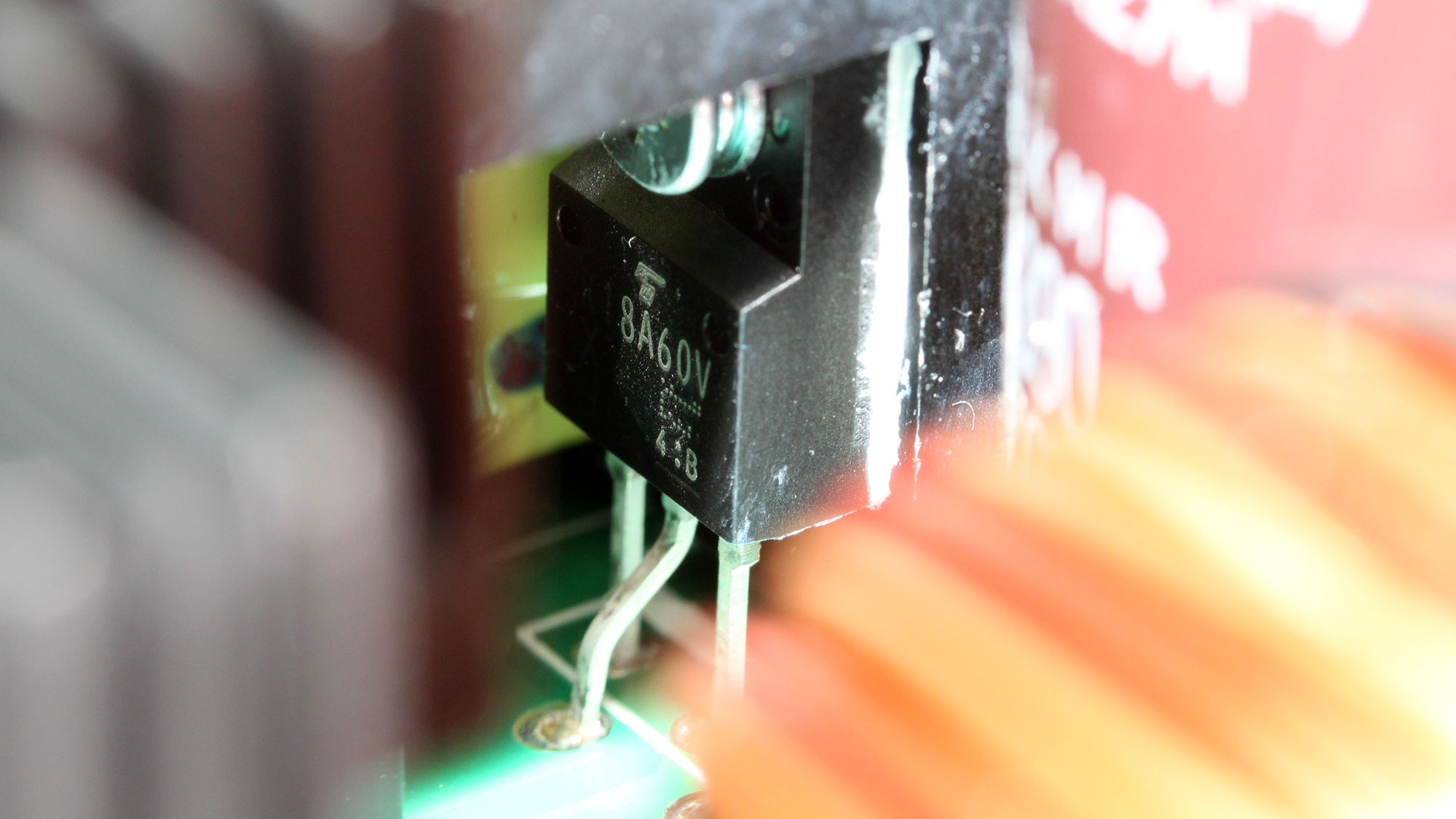
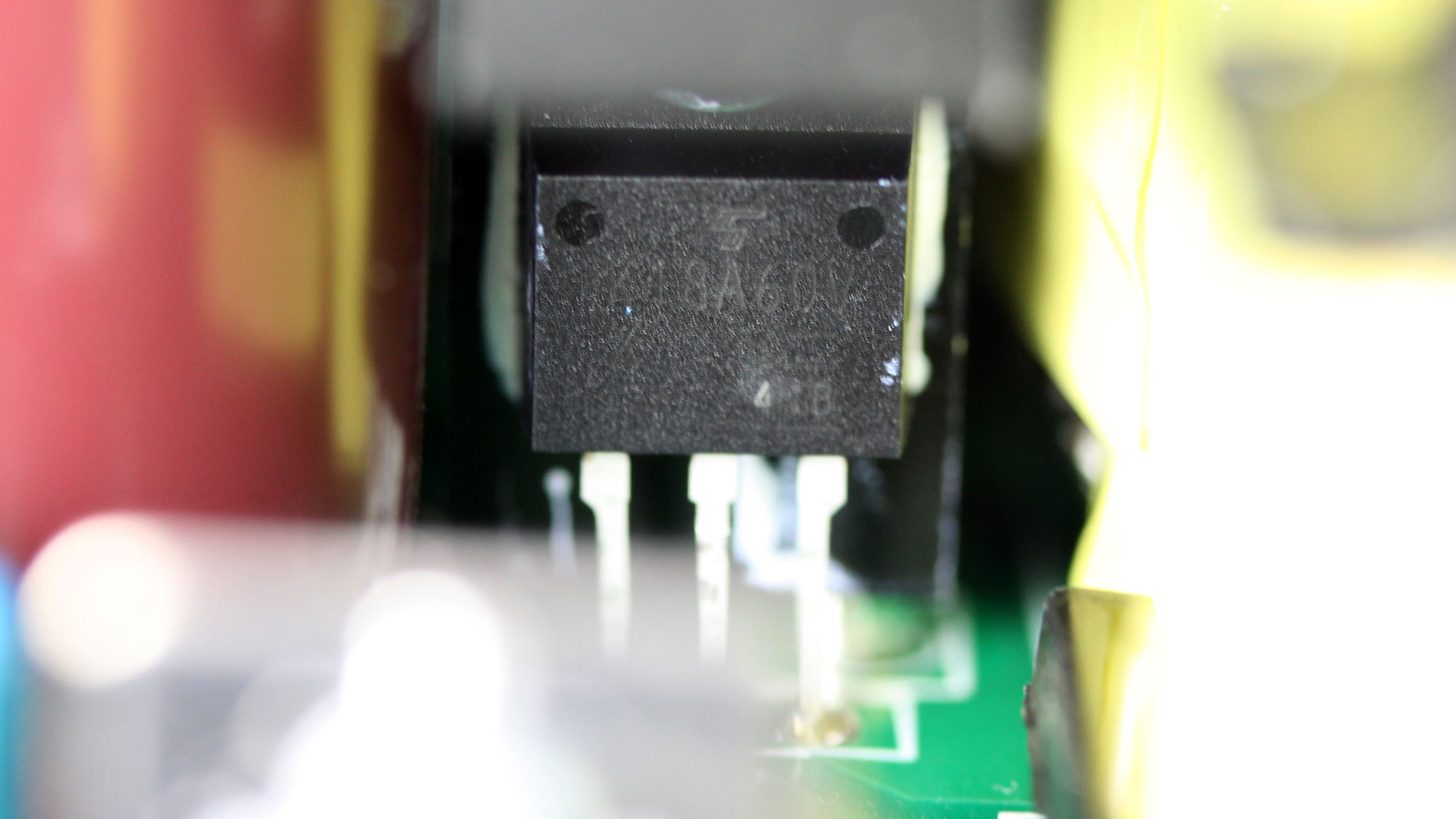



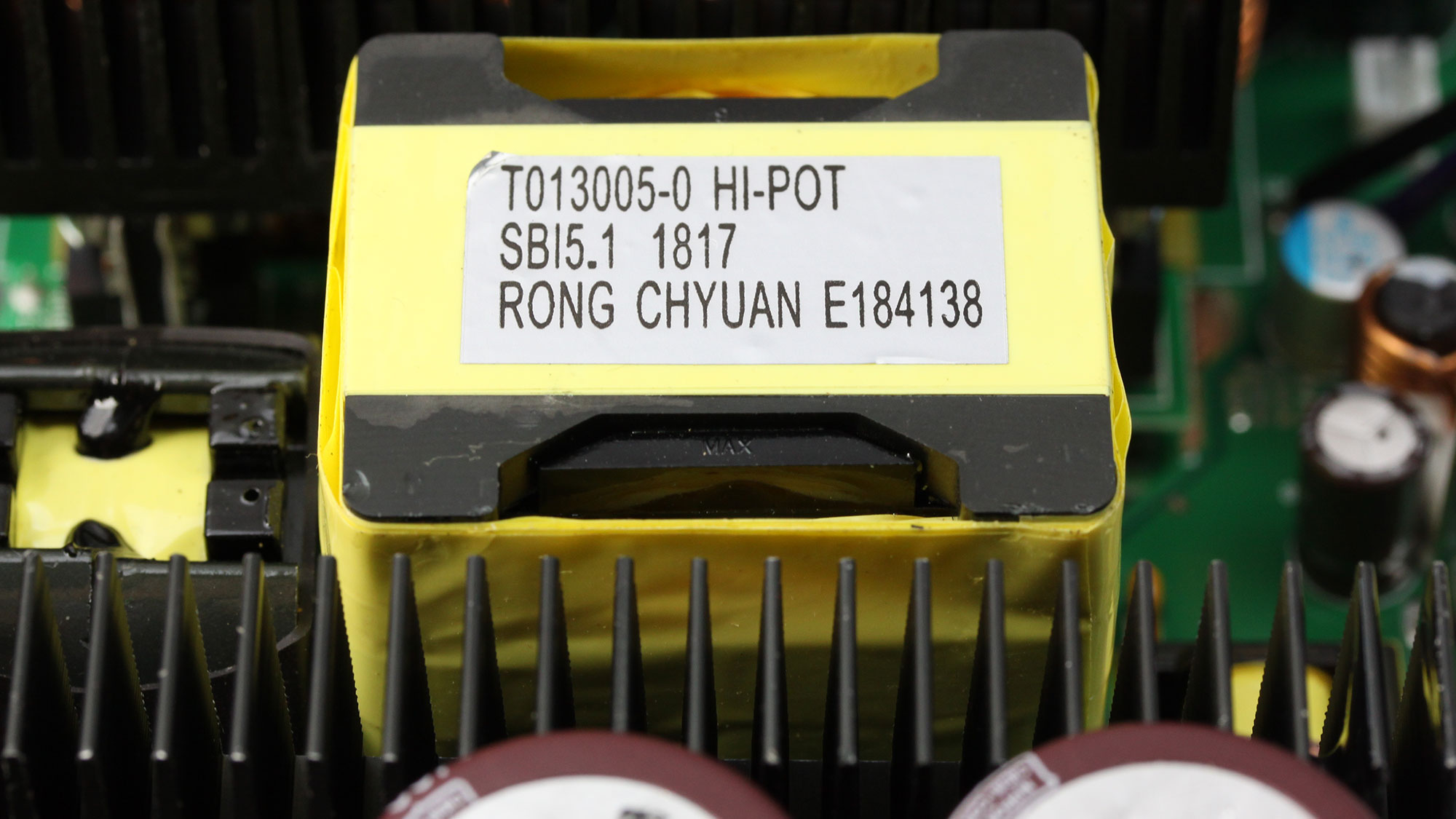
On the primary side, we find an interleaved PFC design where two APFC converters work in parallel, with a phase difference between them. An interleaved PFC converter minimizes ripple and lowers conduction losses, increasing efficiency and doubling the effective switching frequency. The main switching FETs are installed in a full-bridge topology and their controller is a Texas Instruments UCC28950 IC.
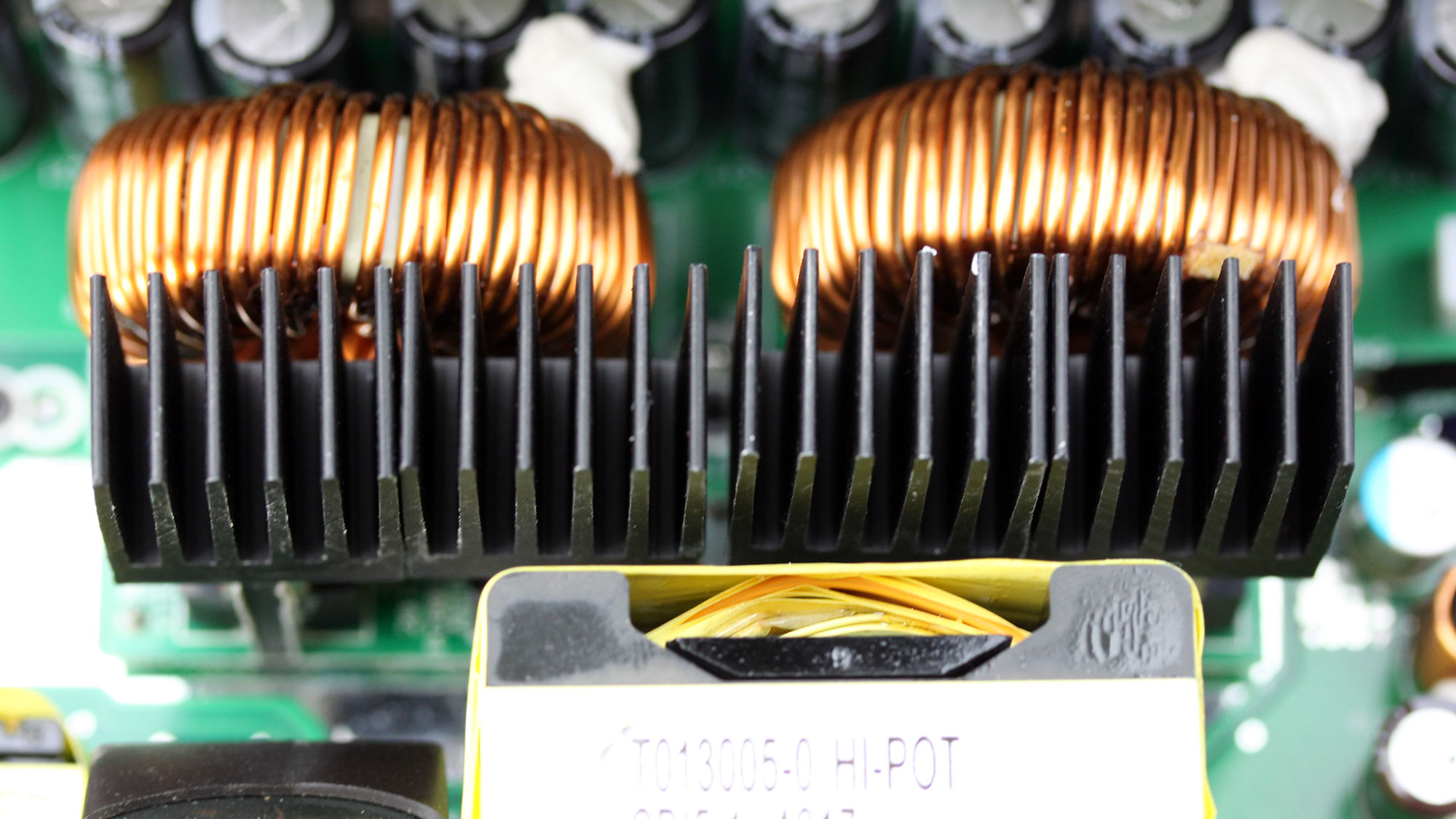
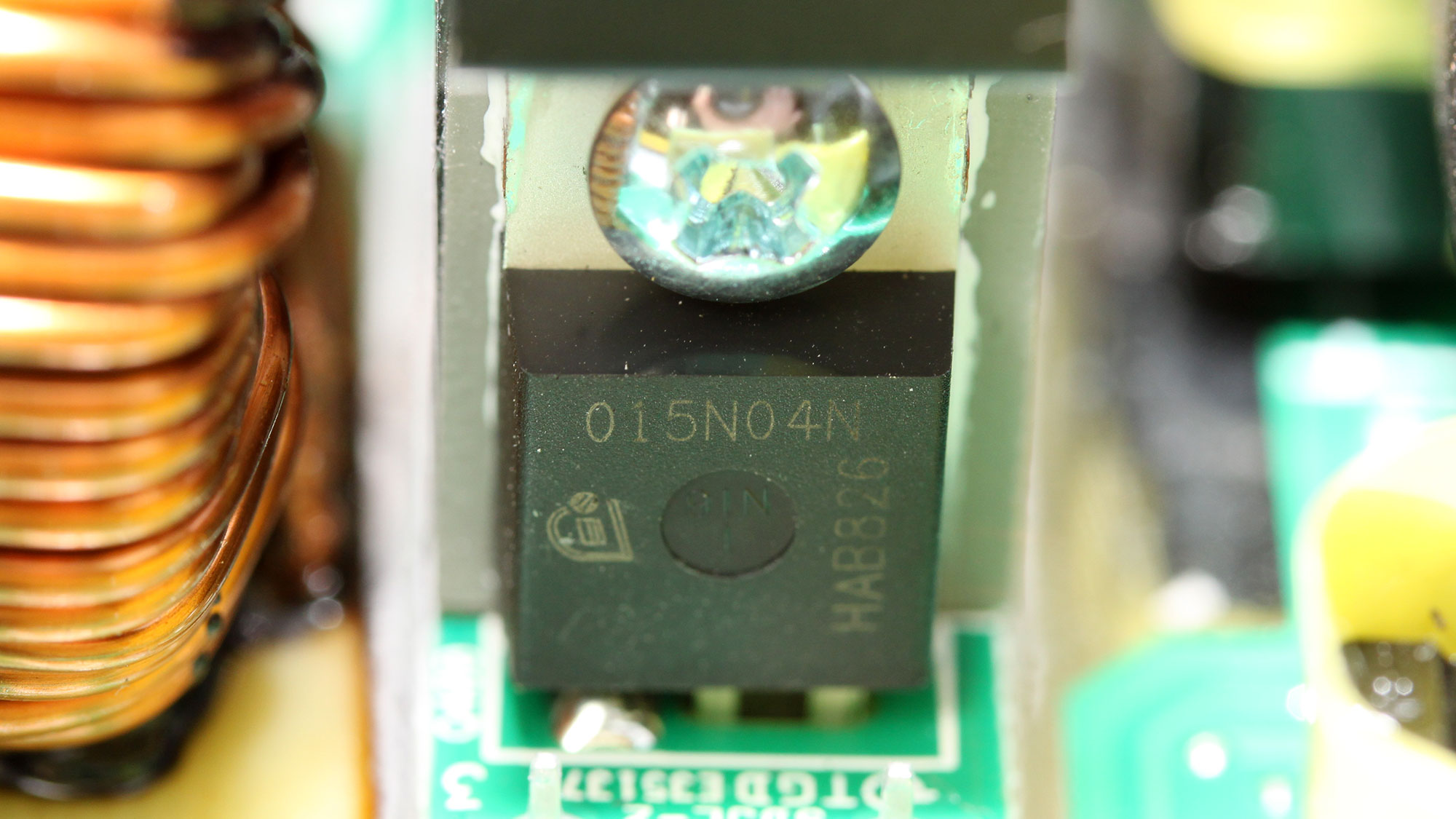
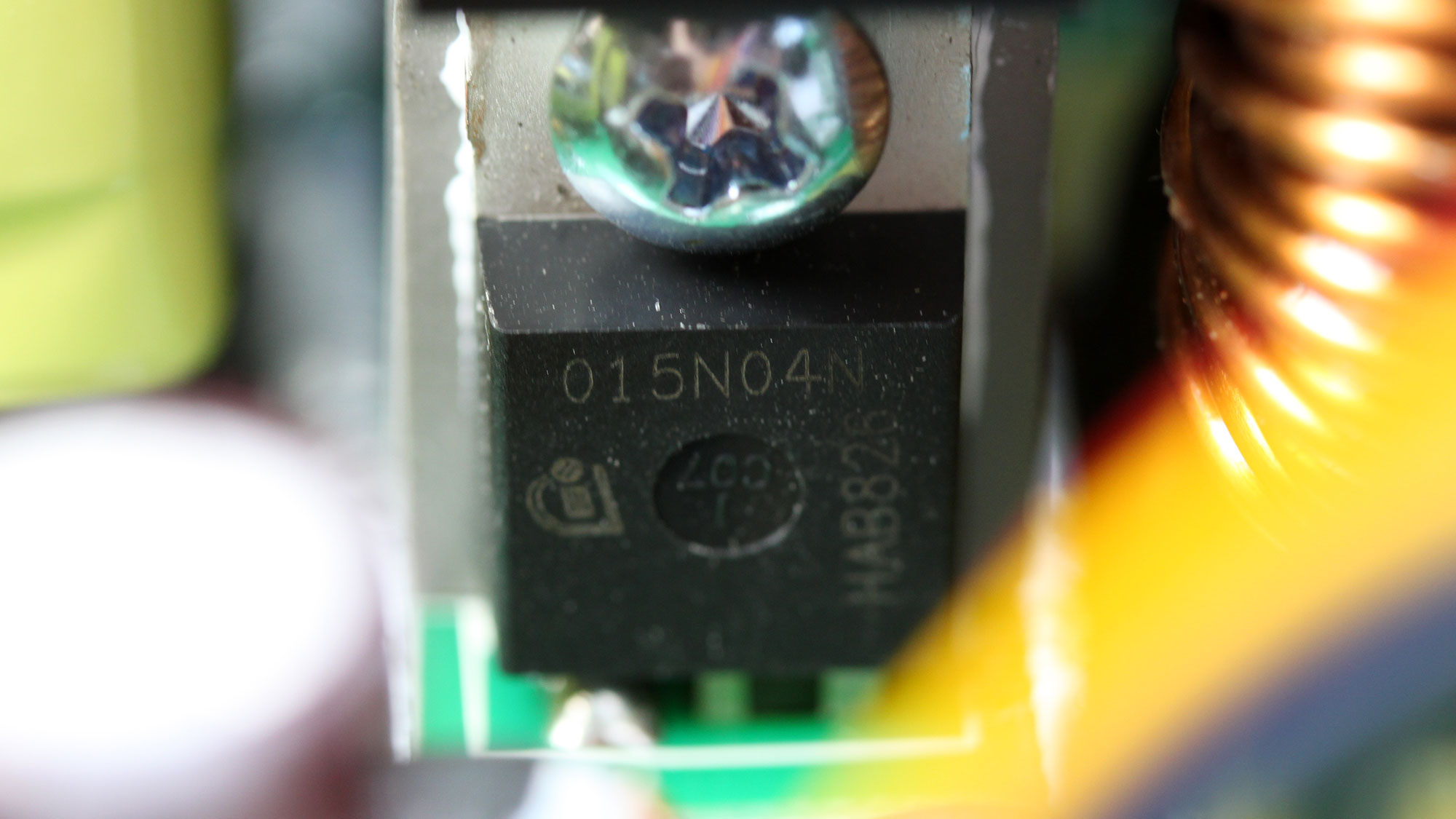

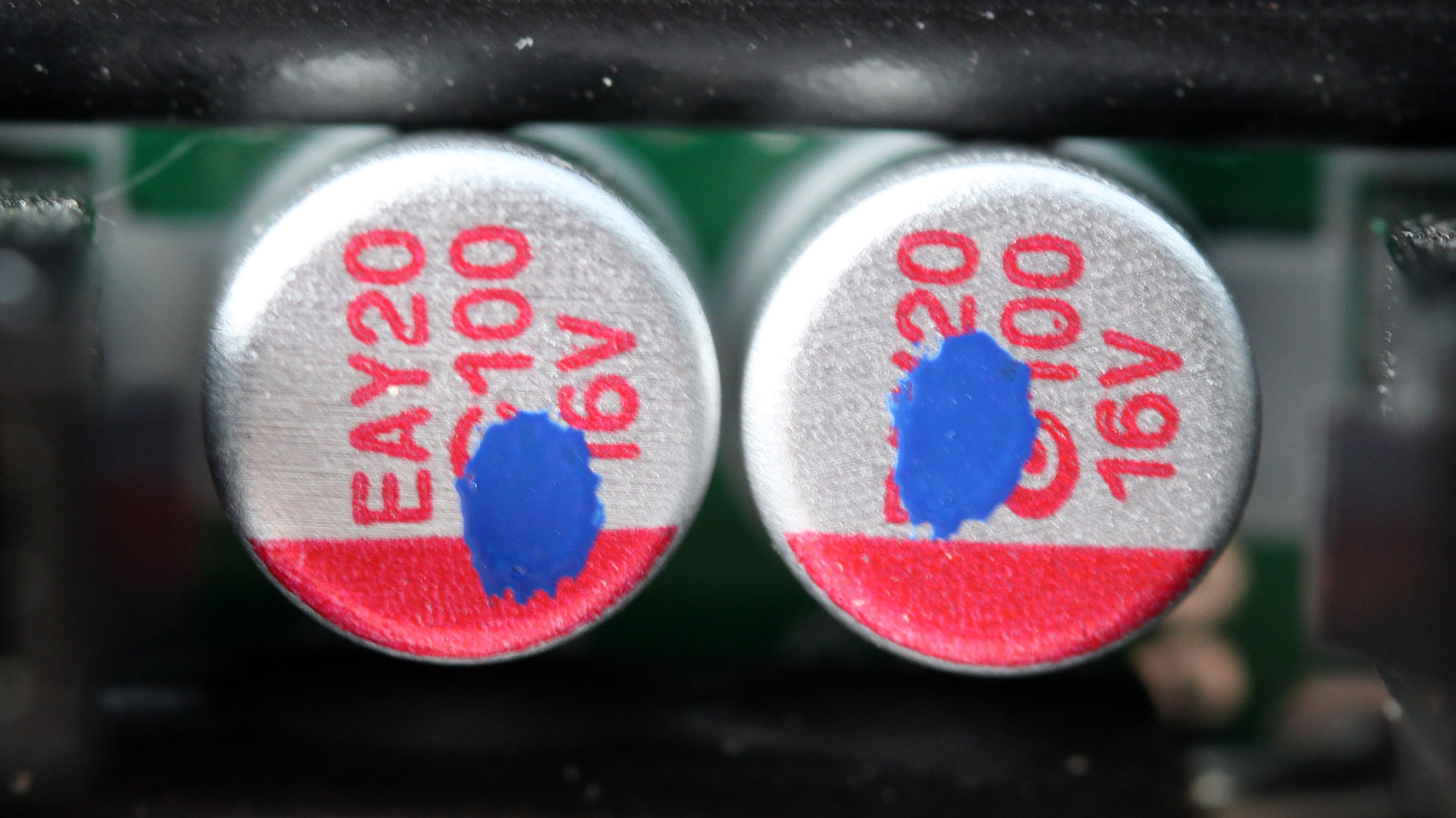
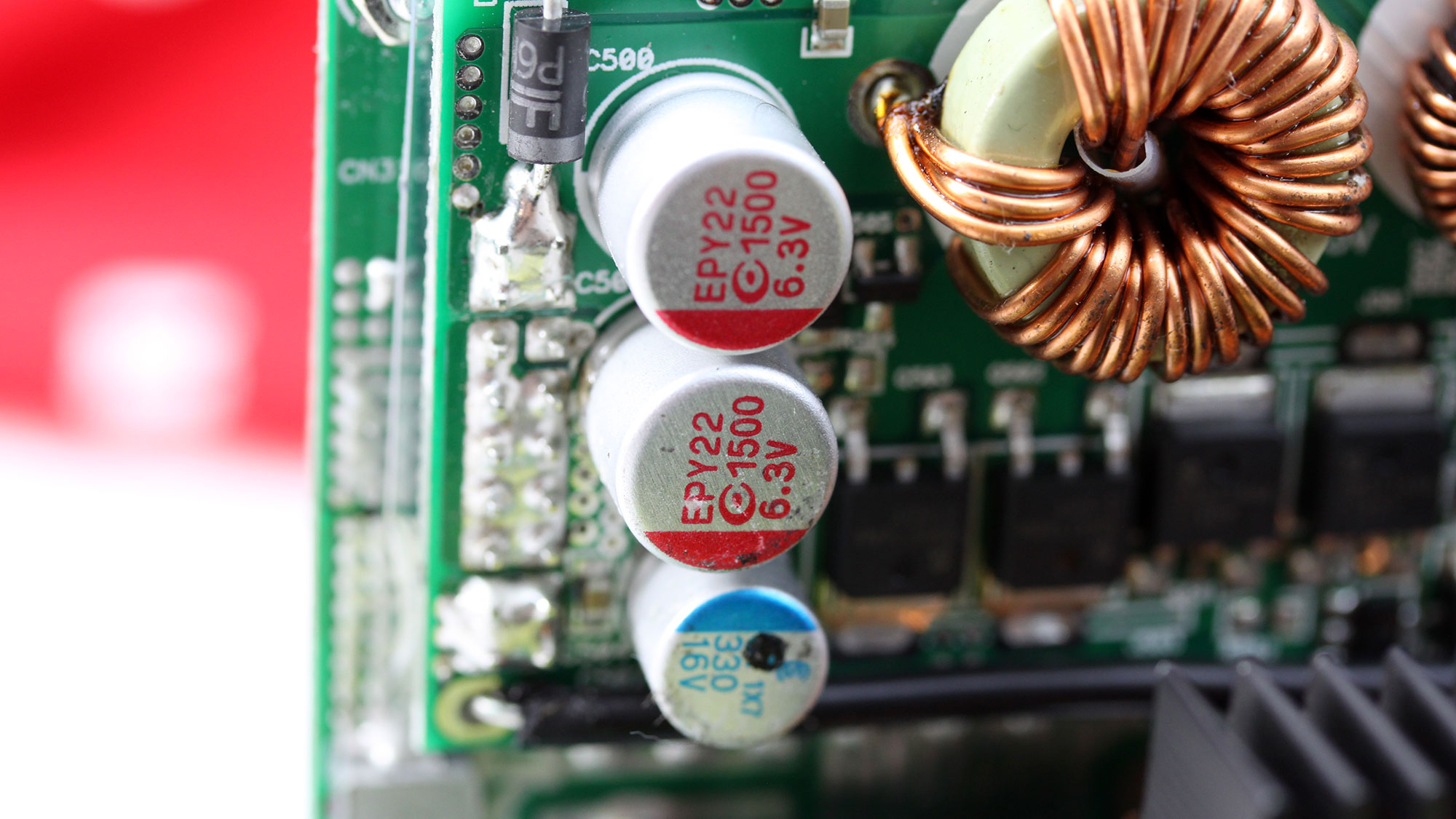
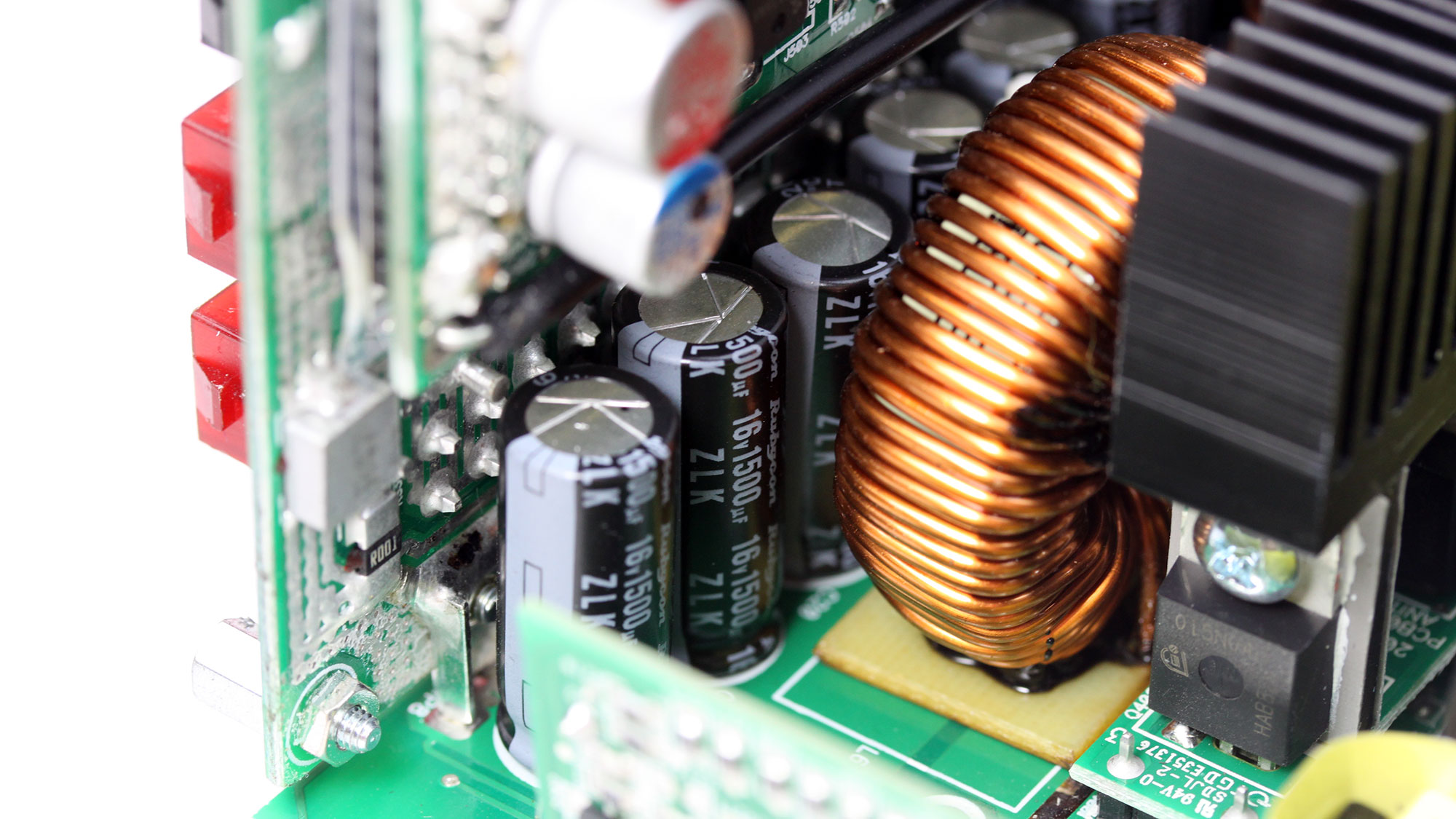
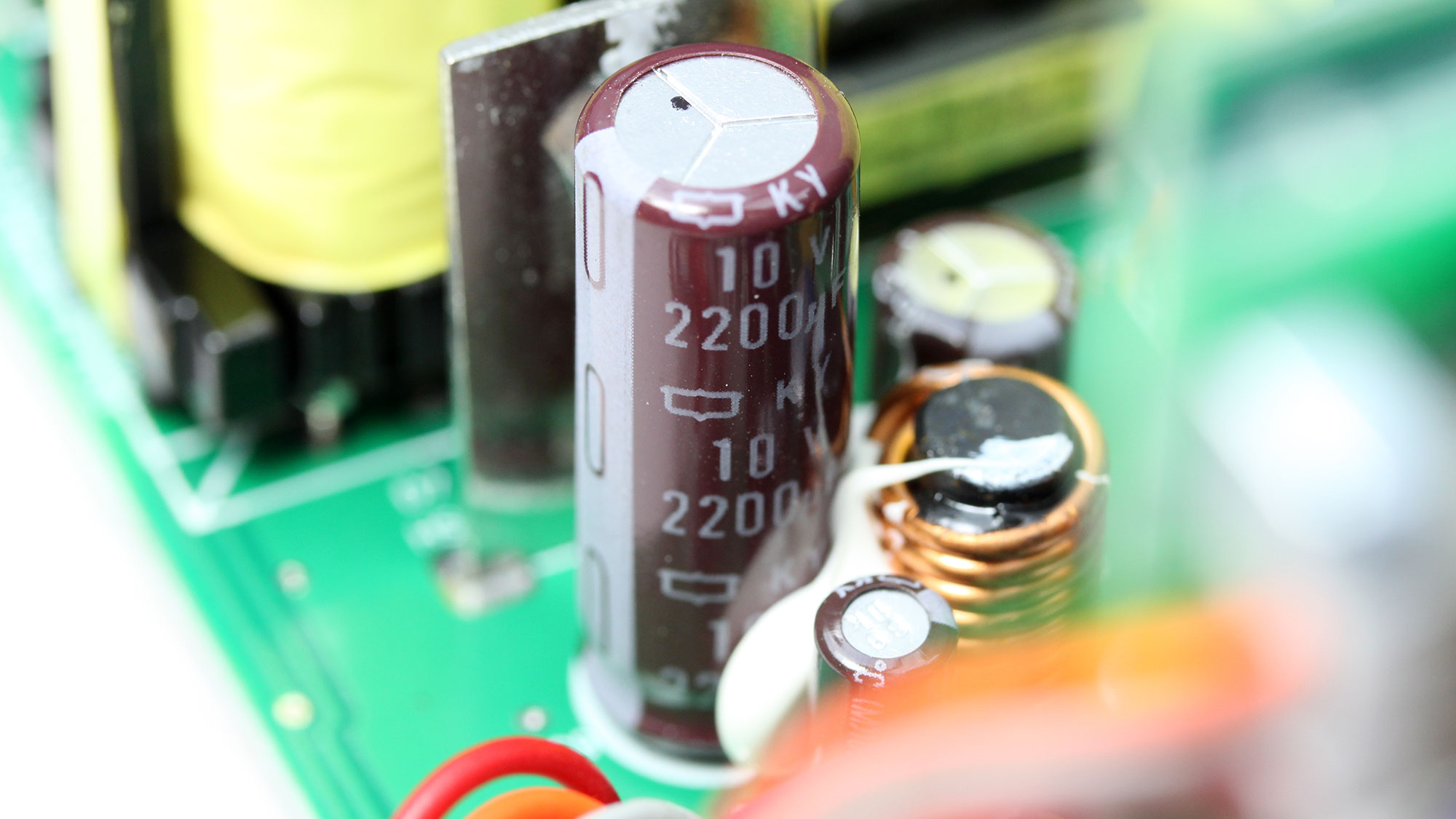
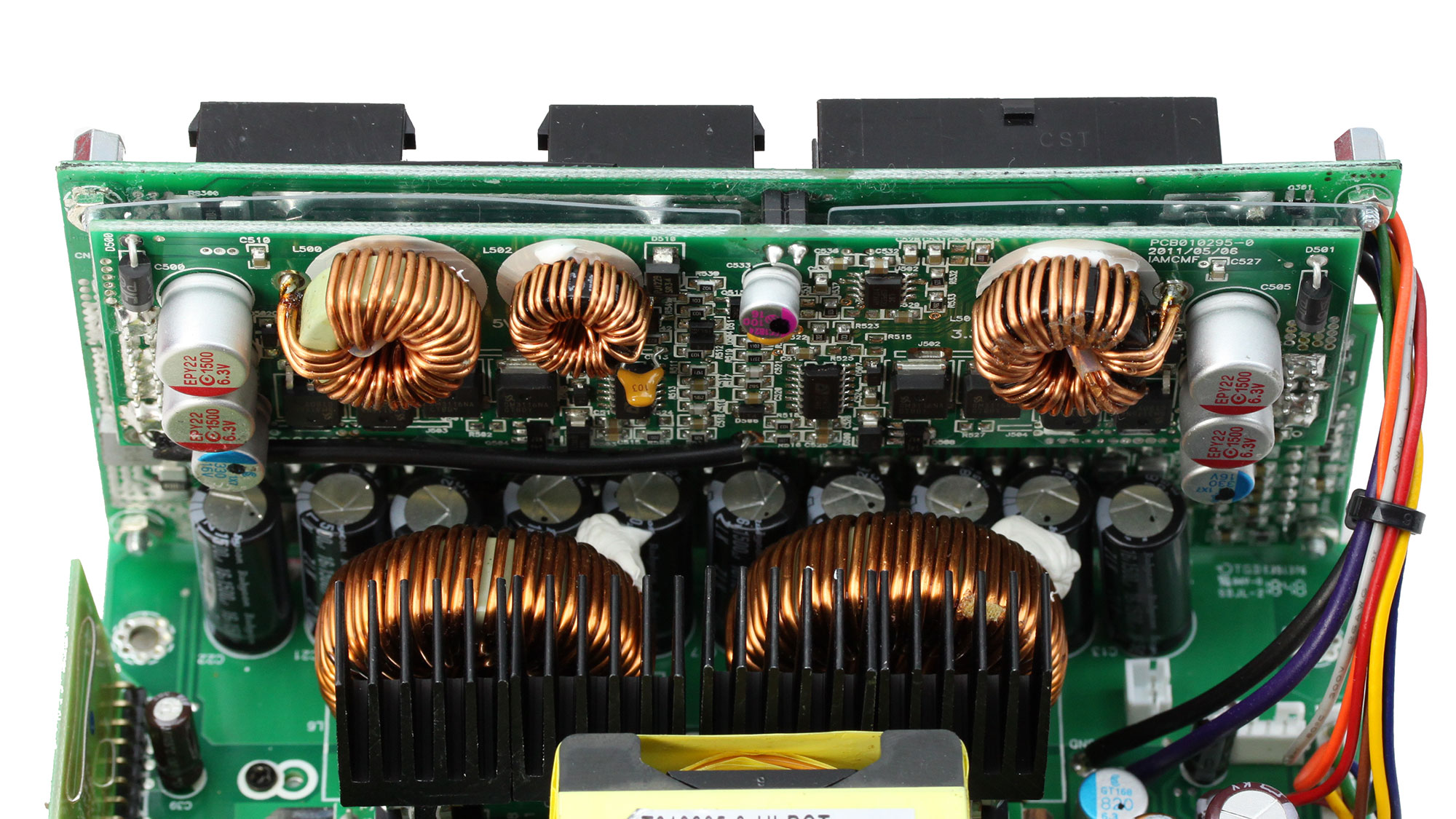

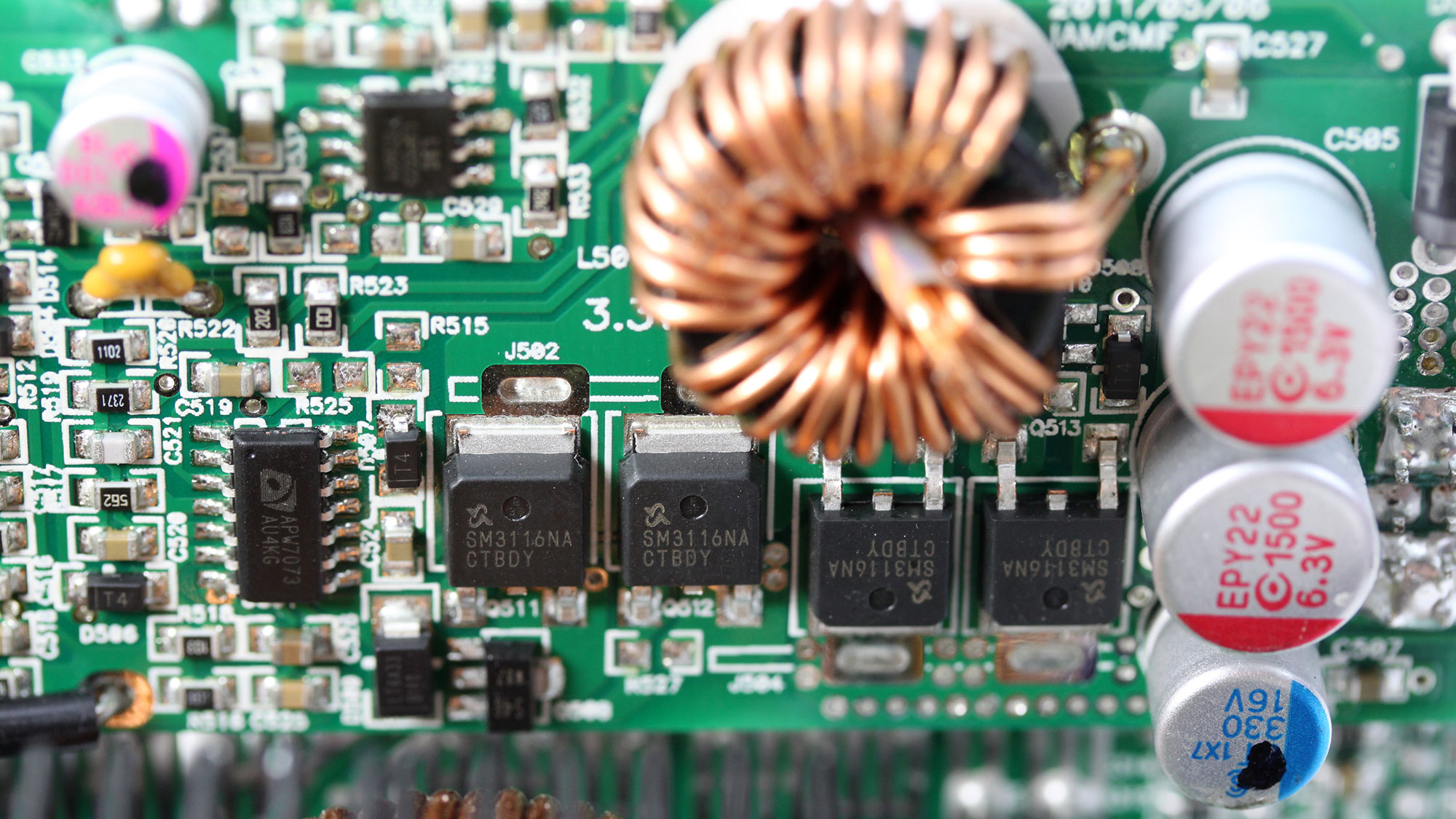
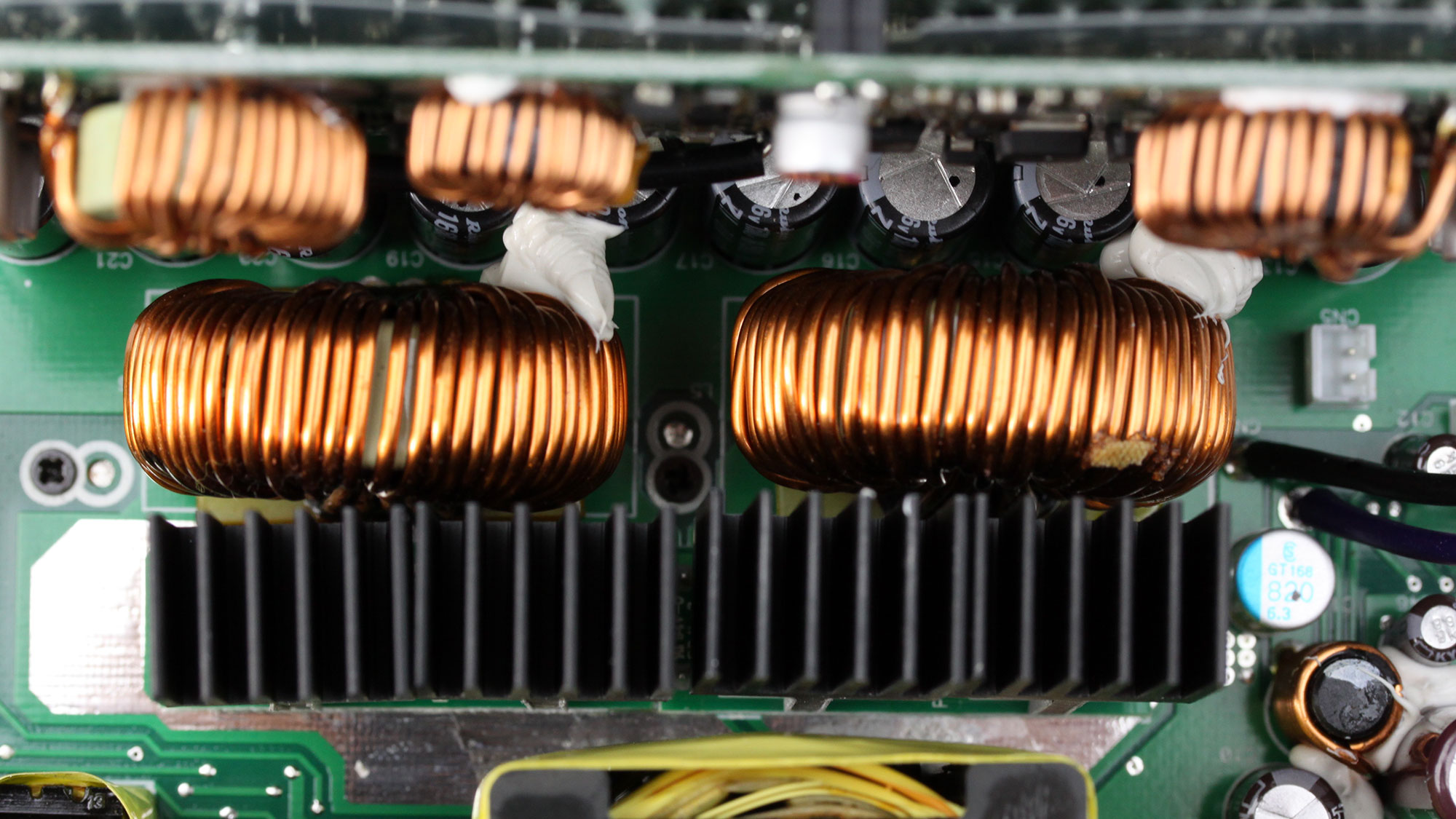

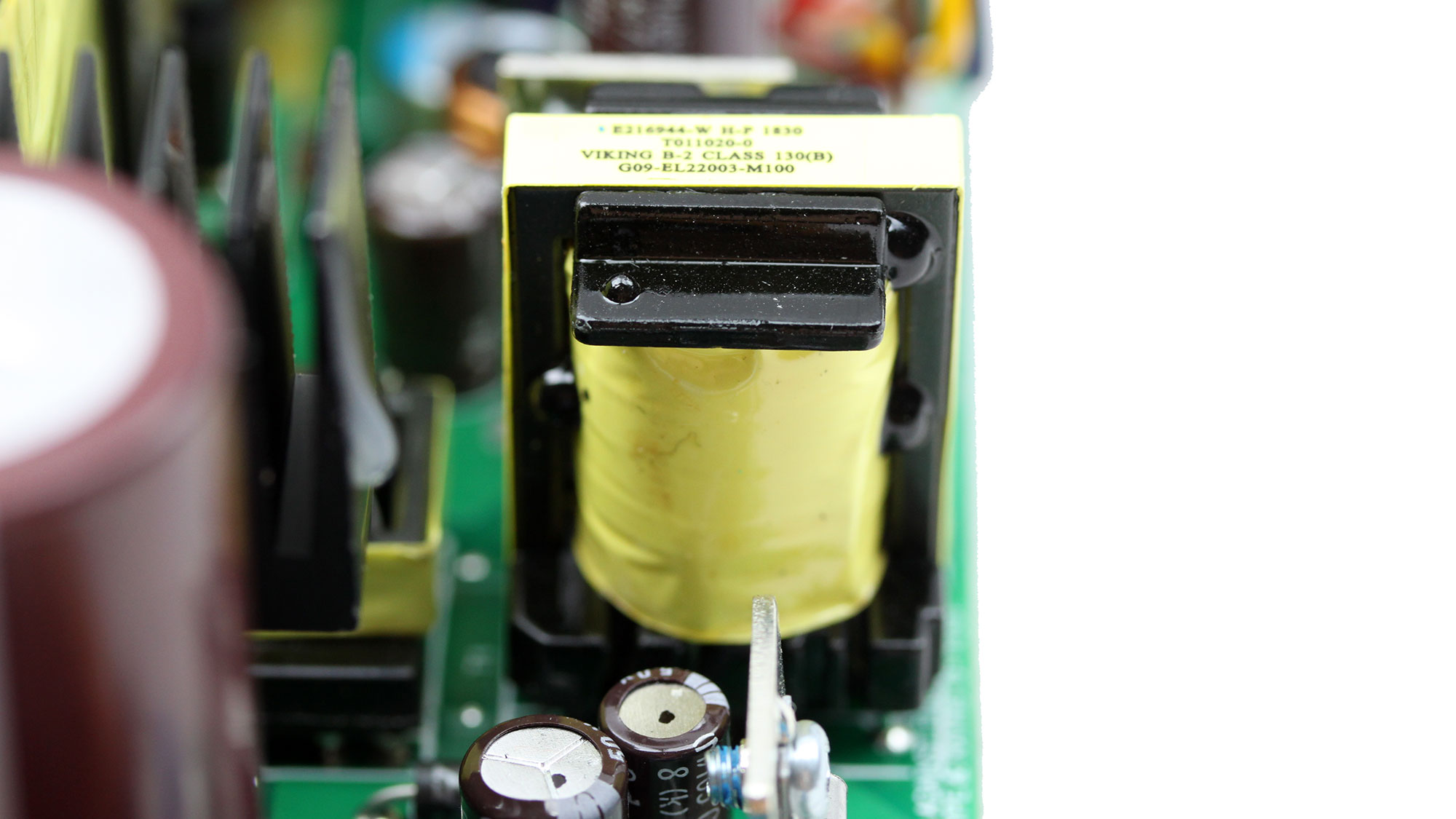


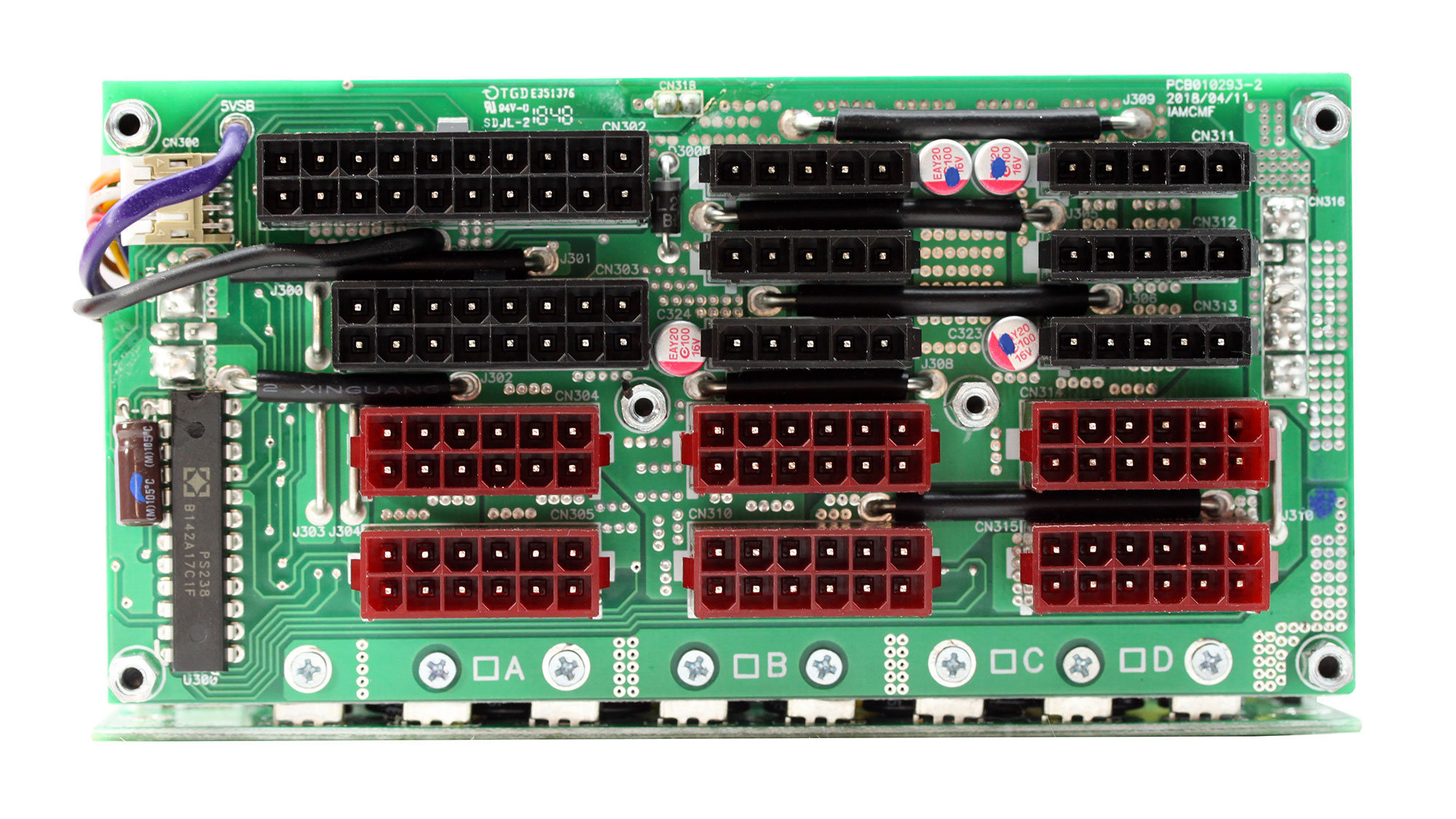
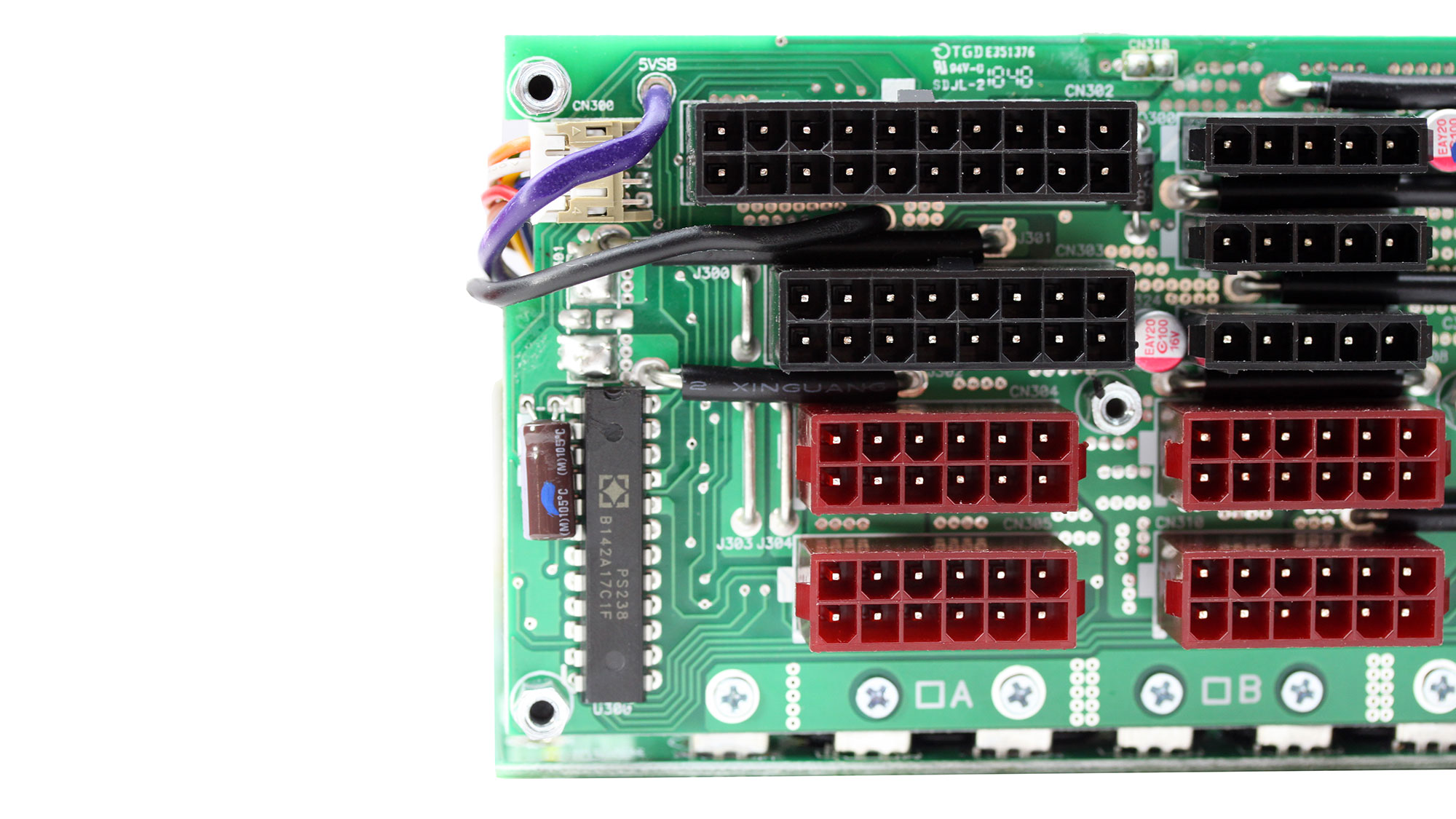
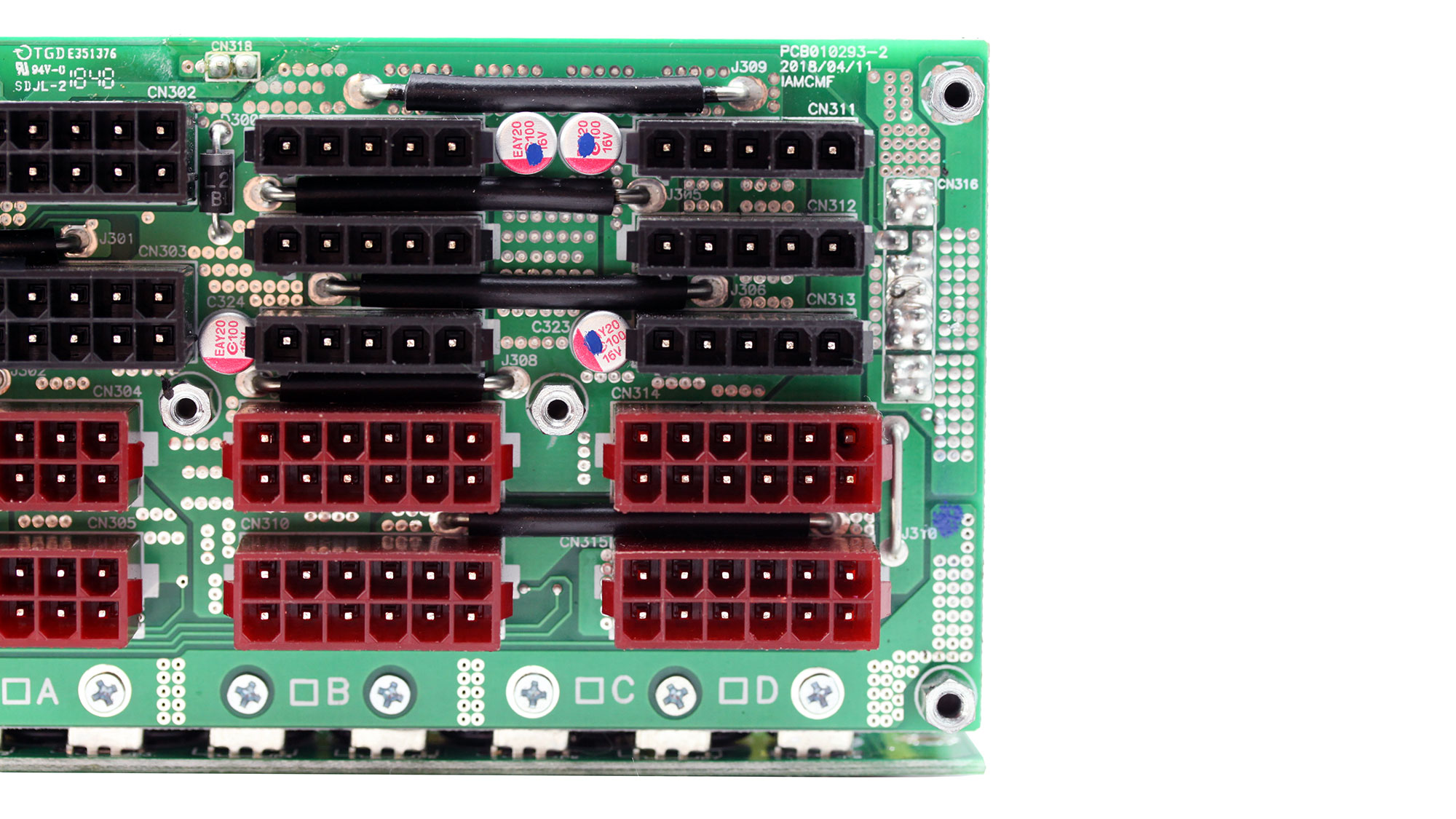
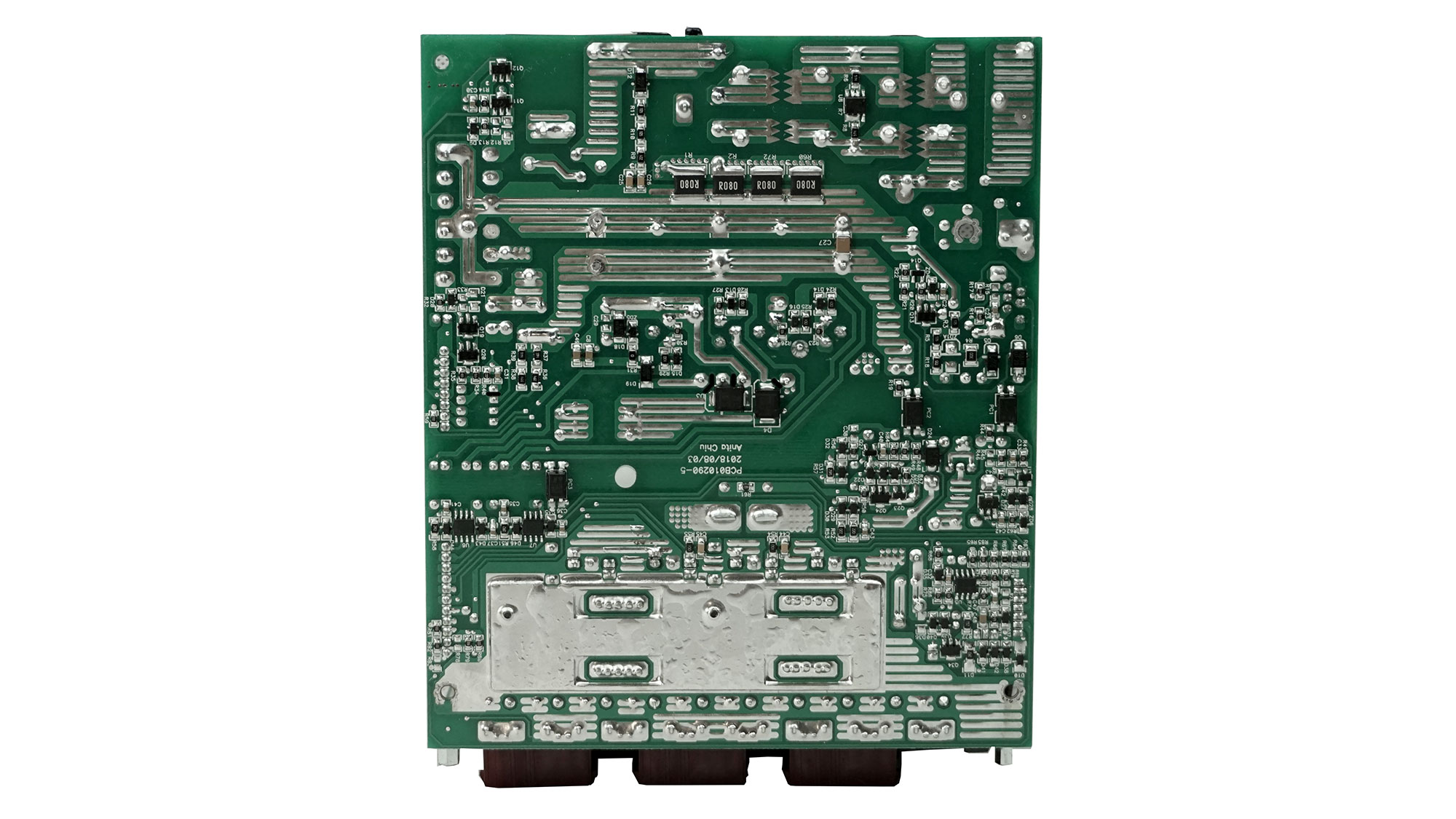

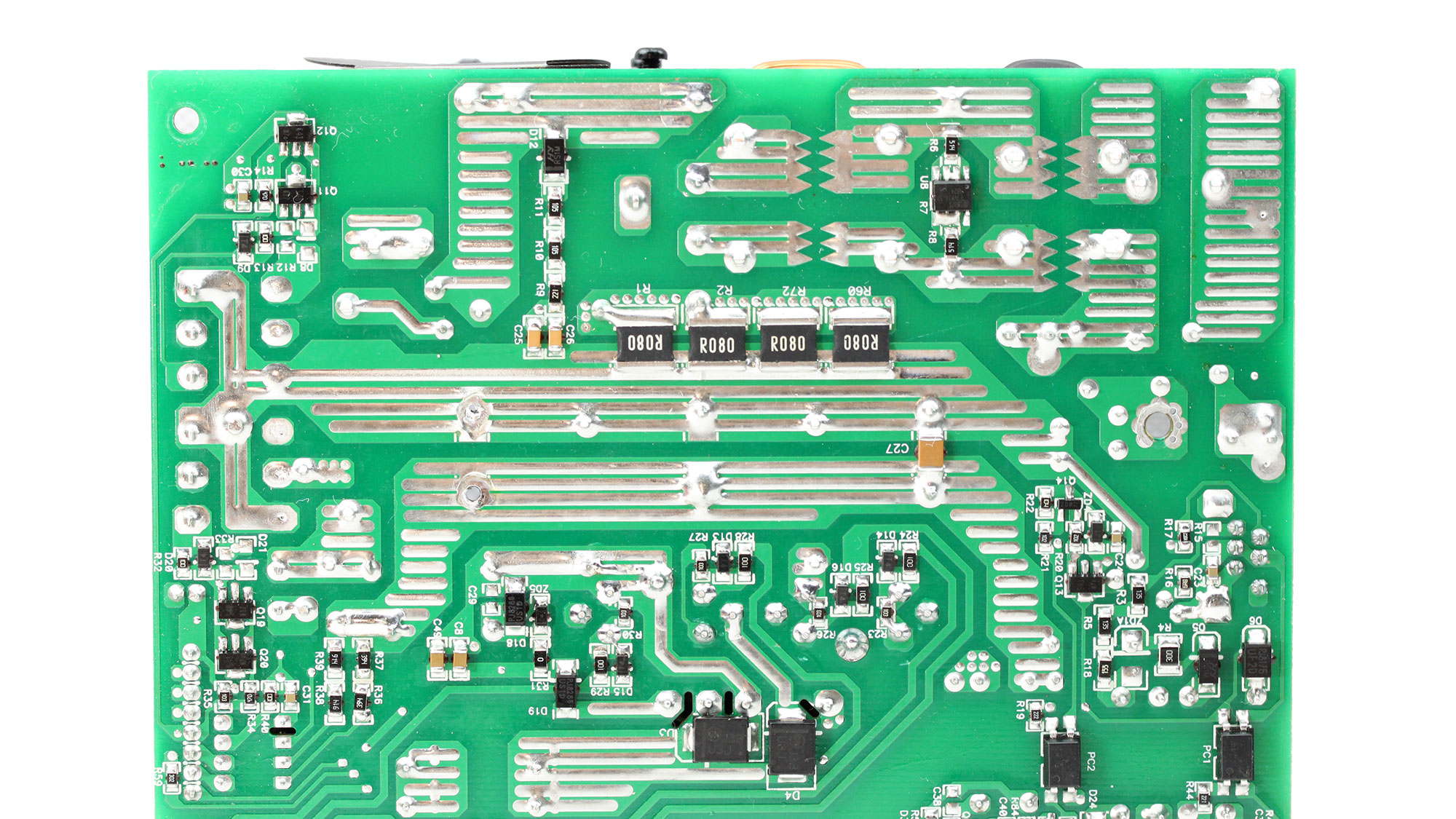
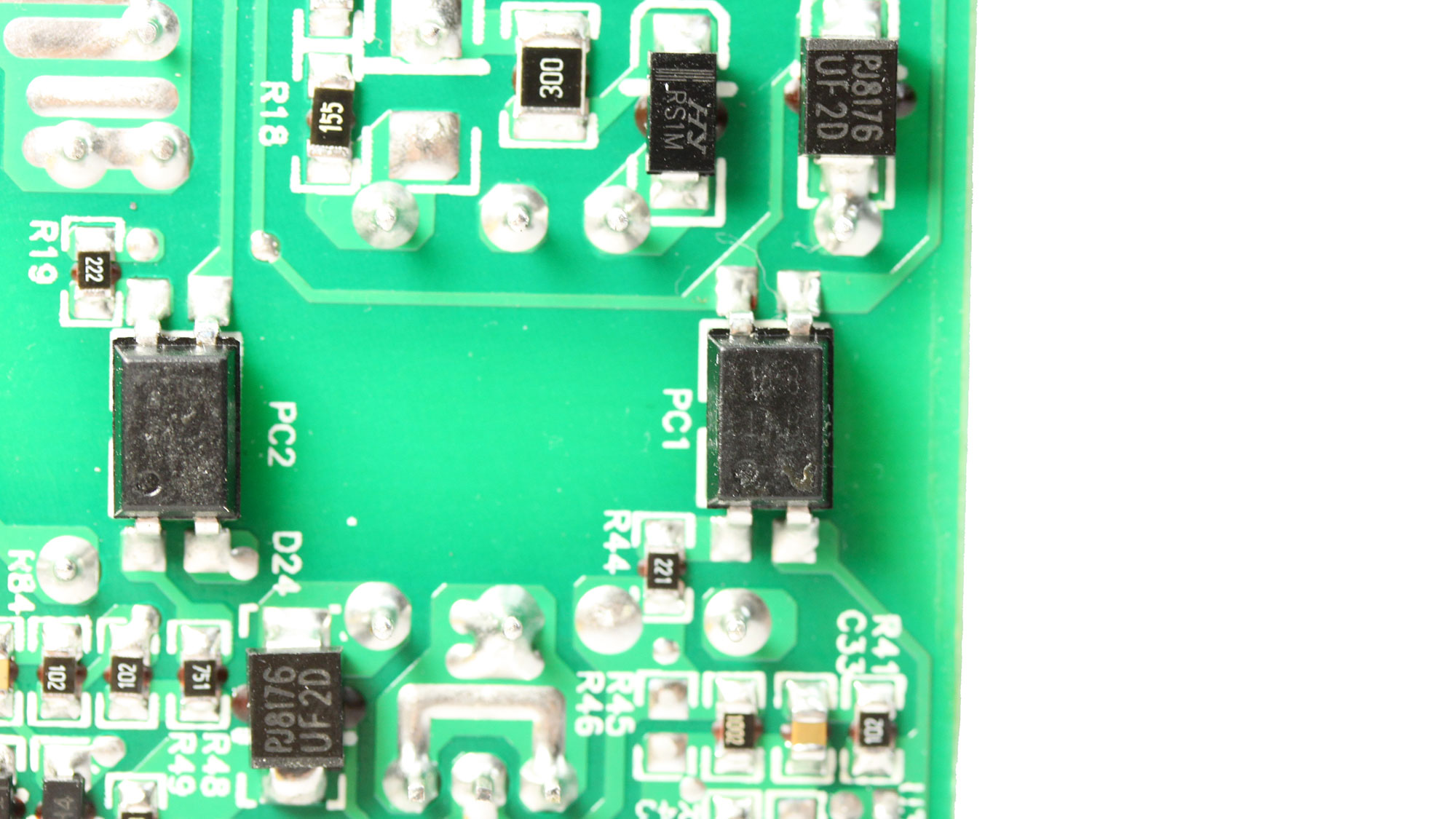

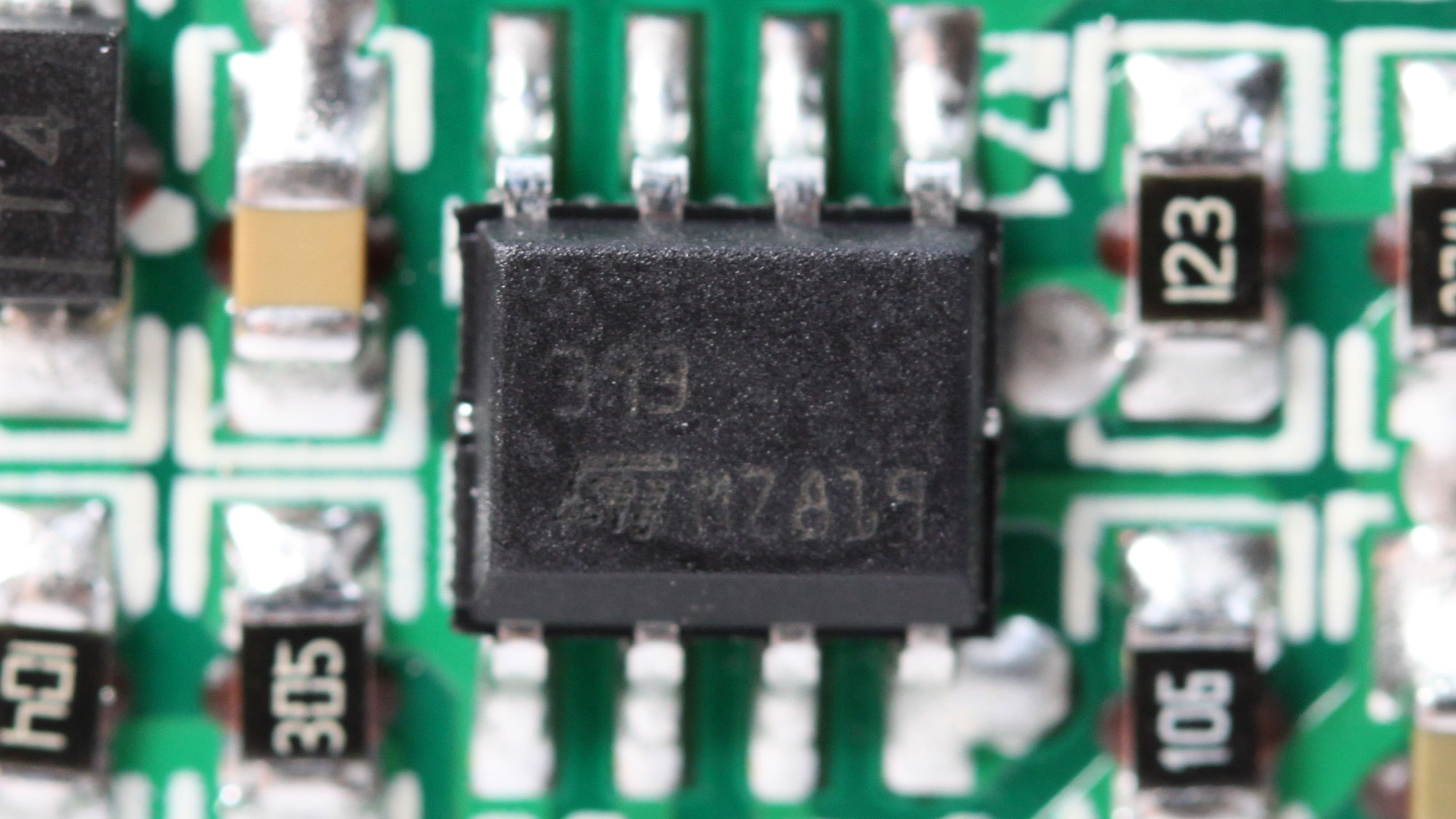
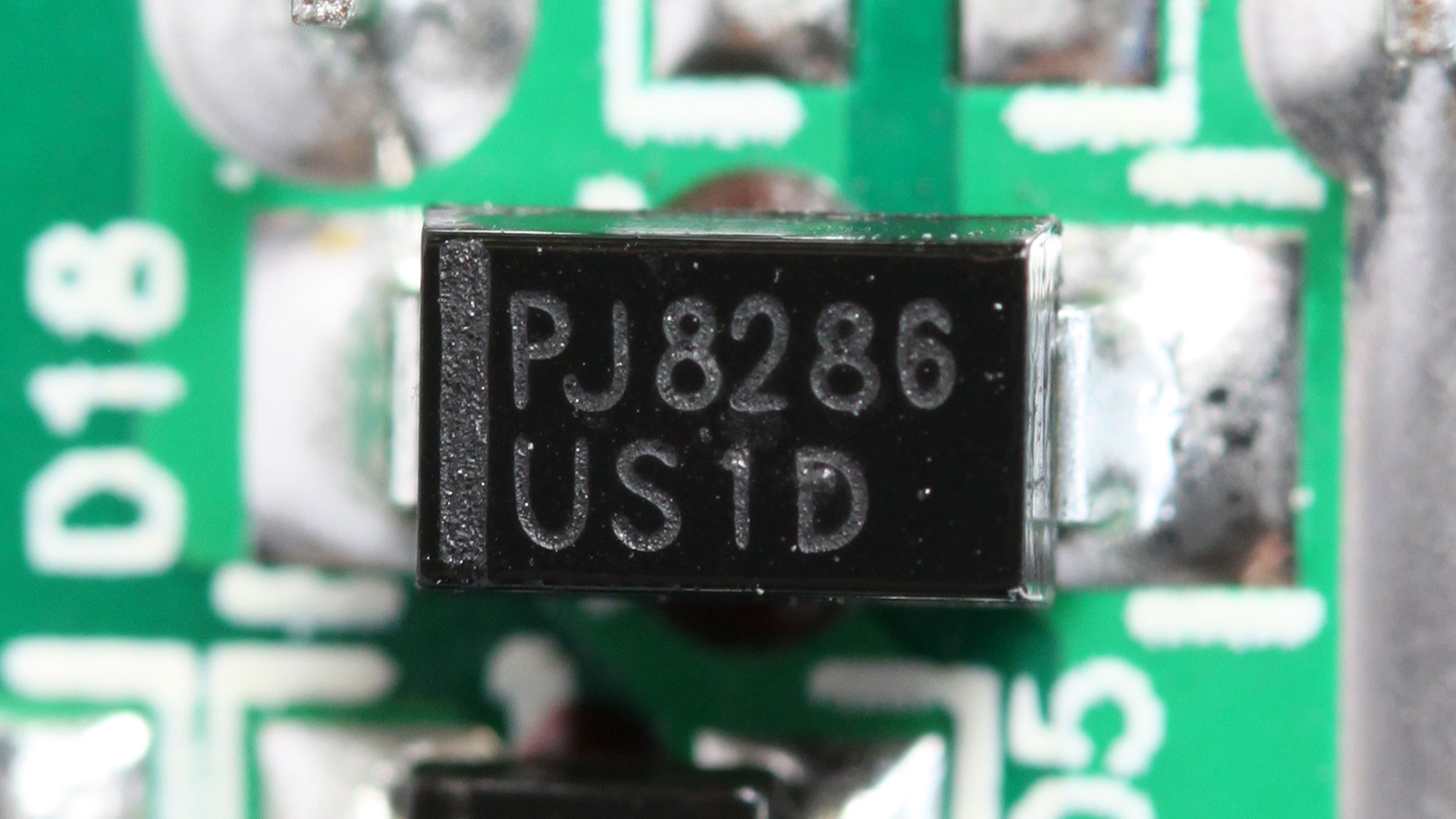

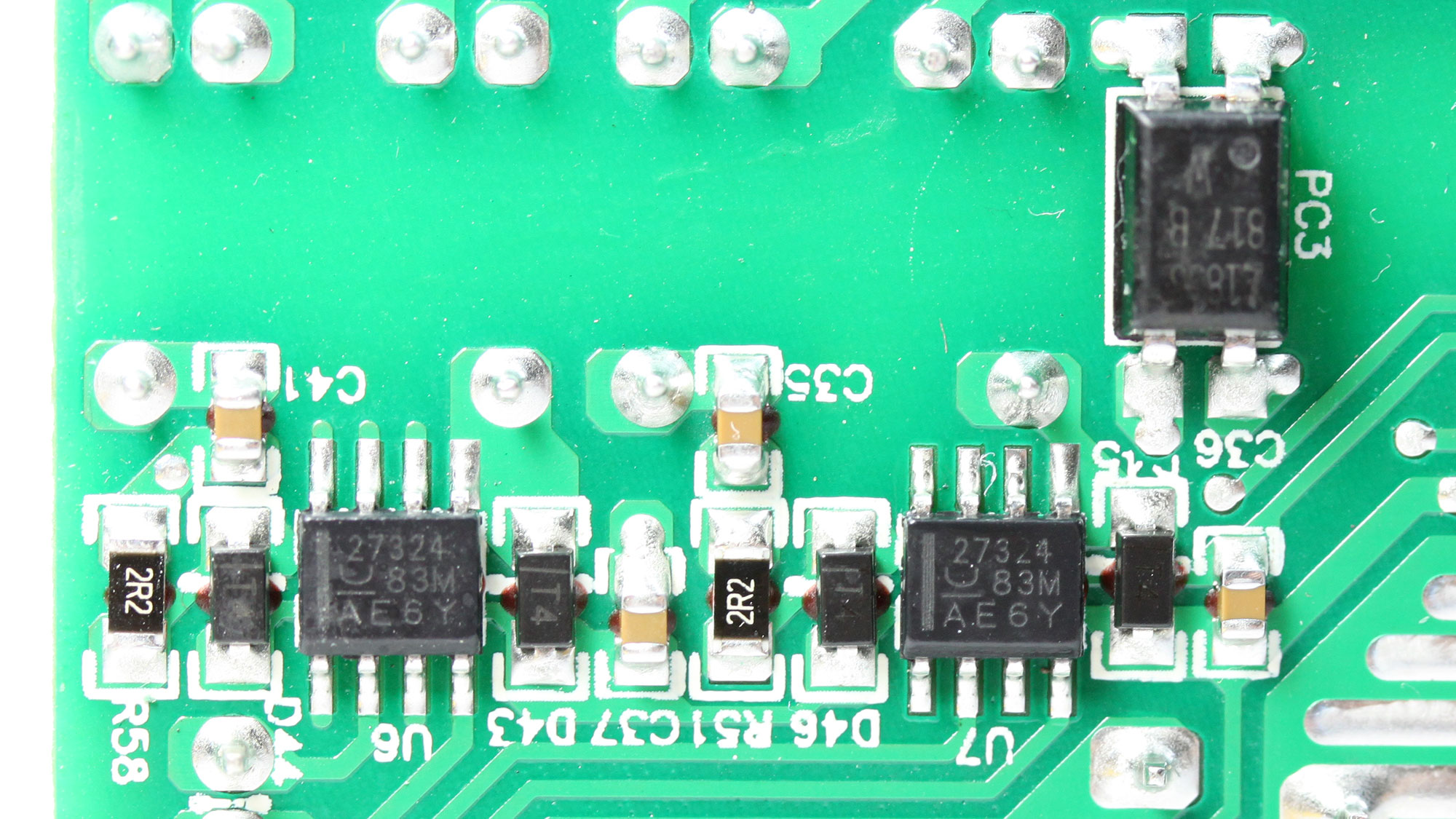


On the secondary side, eight Infineon FETs handle the +12V rail. The minor rails are generated through a couple of VRMs, each of which uses a dedicated PWM controller. All electrolytic filtering caps are of high quality and the double-ball bearing fan will have a long lifetime, even under high operating temperatures (but it won't be quiet).
MORE: Best Power Supplies
MORE: How We Test Power Supplies
MORE: All Power Supply Content
Current page: Specifications and Part Analysis
Next Page Load Regulation, Hold-Up Time, Inrush Current, Efficiency and Noise
Aris Mpitziopoulos is a contributing editor at Tom's Hardware, covering PSUs.
